
As all Speedhunters can attest, time always seems to get away in between these project update posts. I’ve been thoroughly enjoying the car since the NSX-R transmission was swapped in, racking up 2,000+ kilometres on some of the best driving roads in Japan but not leaving much time to dedicate towards actually working on the thing, except for fixing small issues with pieces of ageing trim after work hours.
Pursuing this project has been one of the most fulfilling automotive experiences ever. The car has opened new friendships and raised my technical knowledge, but most of all provided the ideal escape from a hectic and occasionally stressful day job in Japan’s corporate world. That driving experience is the whole reason I chose the NSX over modern alternatives that trounce its performance on paper; the feeling you get behind the wheel is simply intoxicating.
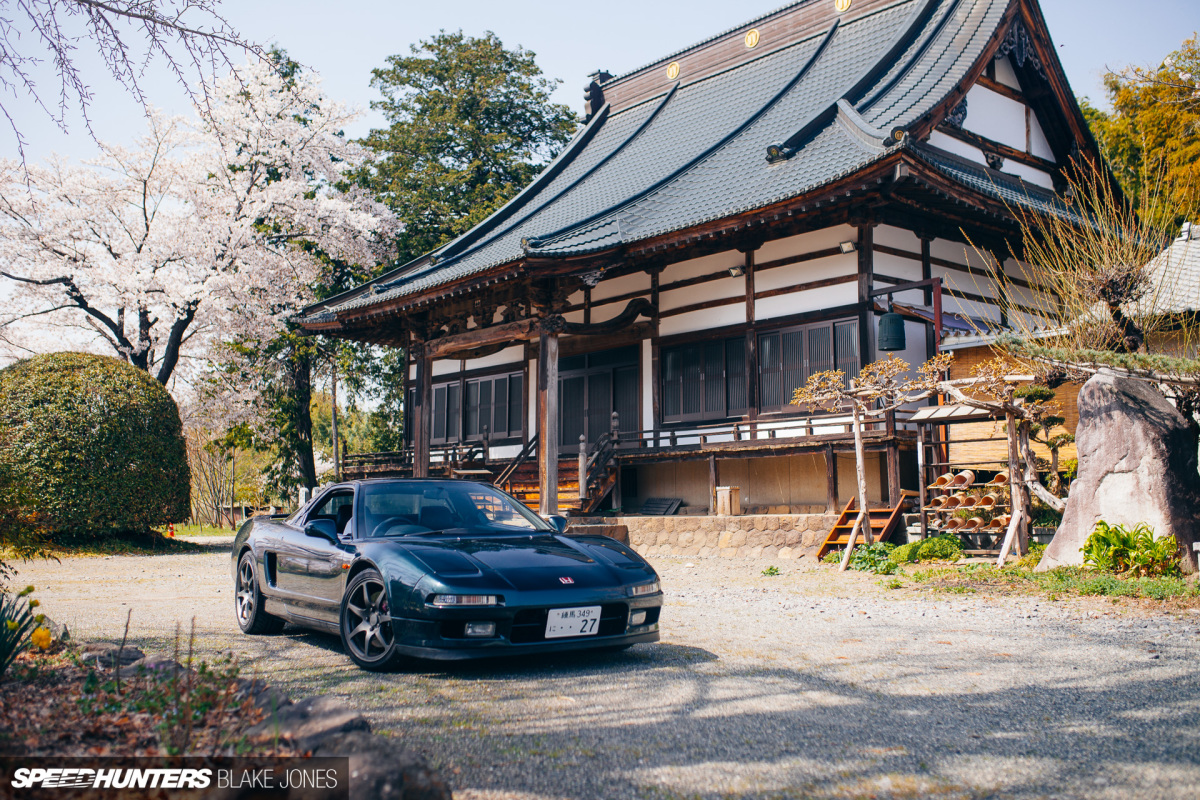
That’s not to say it’s perfect for my needs, and the itch to beef up certain components to prepare the car for the canyon-carving and odd track day I’d like to do is growing.
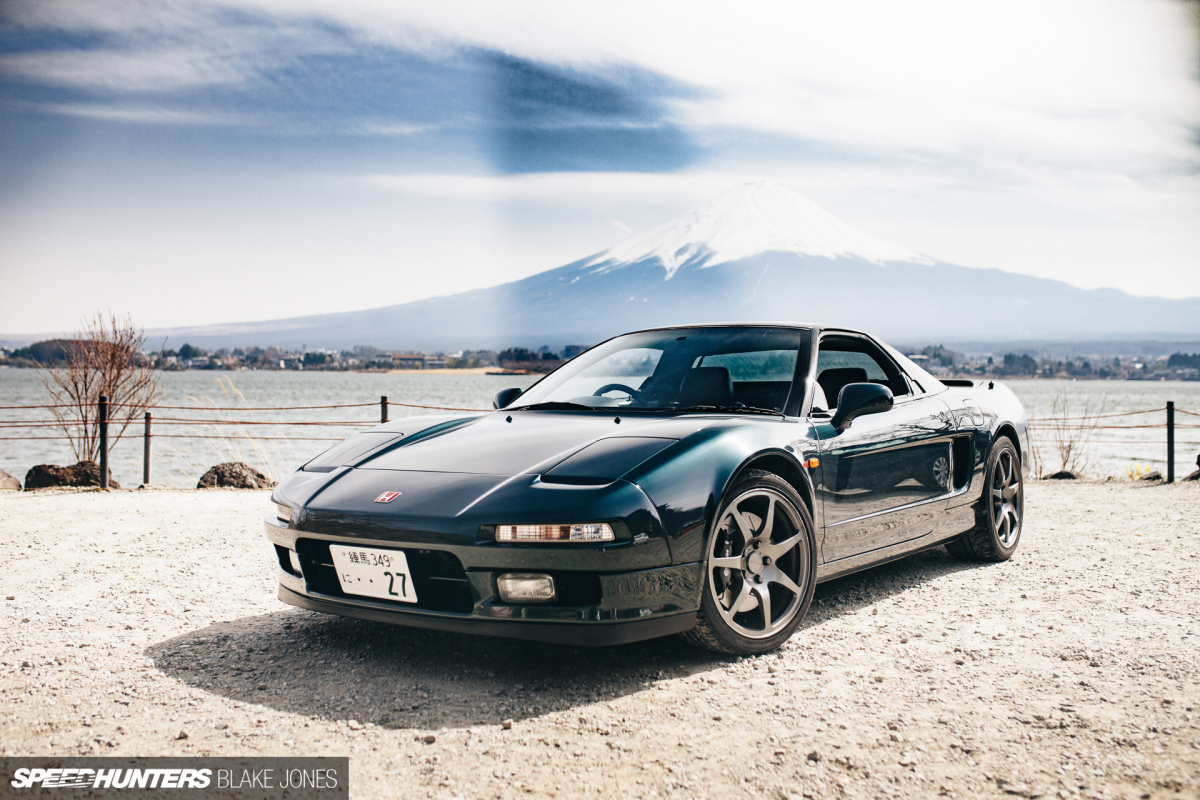
Thankfully I’m not alone in this quest to improve the NSX – a strong global community of modifiers is supported by a select few parts manufacturers that offer off-the-shelf options for the car. However, the reality is that many of these manufacturers can only dream of matching the Honda factory’s purpose-driven design and quality standards, meaning that even the best intentions to improve the car can have quite the opposite result if the wrong components are selected.

Suspension is a key example. It’s one of the most straightforward modifications one can make to a car and the impact is instantly noticeable. However, certain misconceptions exist (for example that lower and stiffer means better performance) which can leave owners actually making their car handle worse than it would on standard springs and shocks.
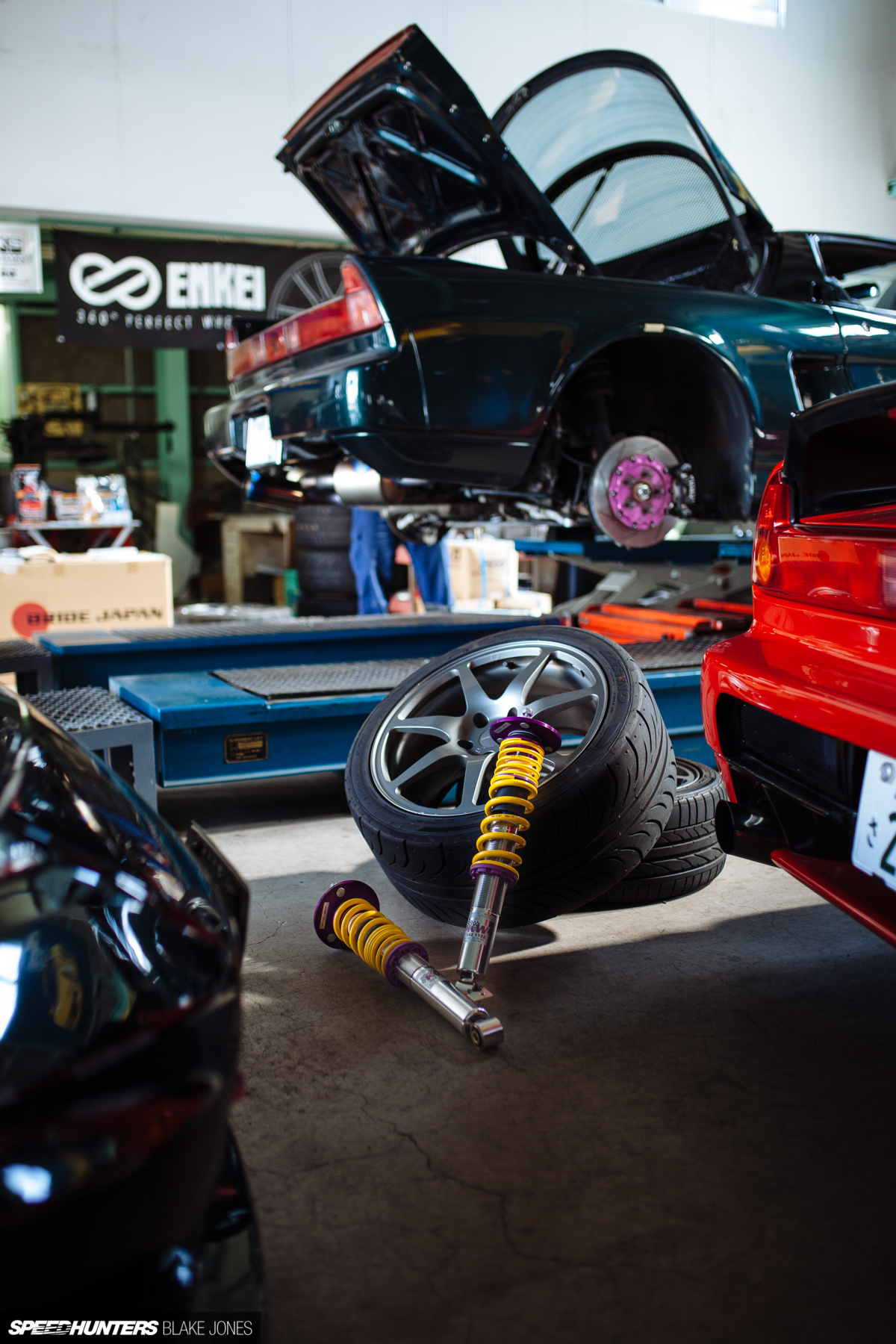
So it’s important to chose wisely. I started the same way any enthusiast does in 2018, reading reviews from other owners and checking the forums for feedback. One brand rose to the top of the pile very quickly – KW. Considering that KW is also one of Speedhunters’ longest-running suppliers, it was an easy and logical choice to get in touch with the guys and see what I could order for Project NSX.
What’s In The Box?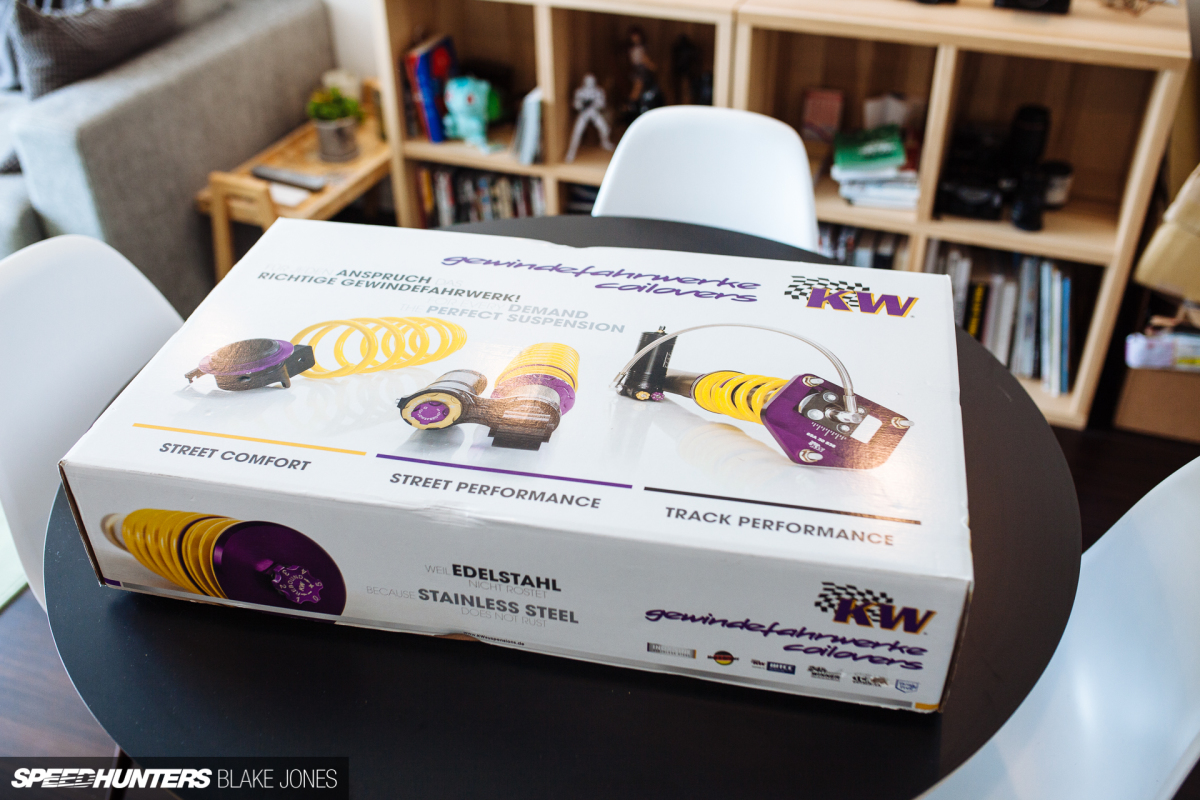
KW offers two off-the-shelf options for the NSX: The V3 and the Clubsport. I’ll explain the differences in a second, but it’s worth discussing the shared development that both packages benefit from.
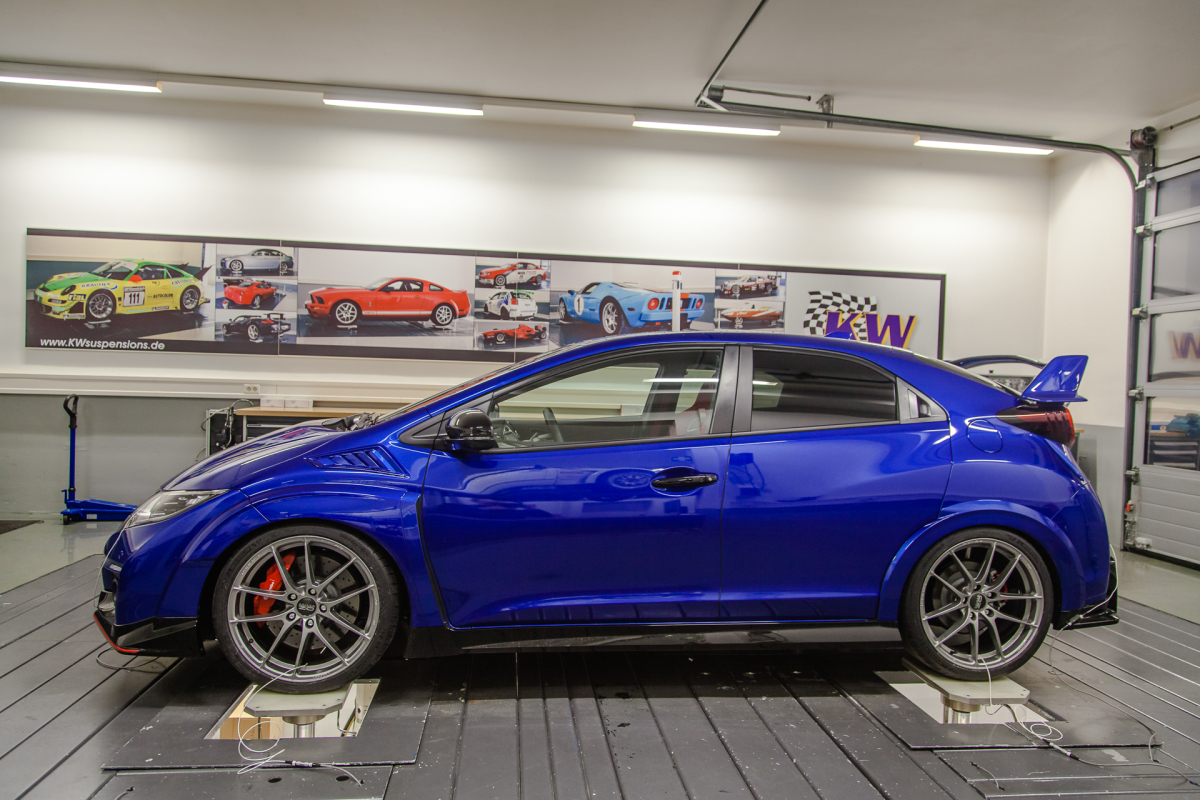
As you’ve already read about in Paddy’s story on KW’s development facility, a key differentiator for KW is the use of a seven-post frequency analysis rig, one of only a handful in the world. Here you can see an FK2 Civic Type R undergoing frequency analysis – from this angle the rig looks deceptively simple, but underneath the false floor lies a huge and complex hydraulic ram system. Like how a dyno allows a tuner to see precisely where an engine is making (or losing) power, this ‘shaker’ rig provides a quantifiable analysis of a coilover’s performance over varied simulated road conditions, and allows KW to measure the influence of other variables, including but not limited to tyre choice, tyre pressure and even drivetrain bearings.
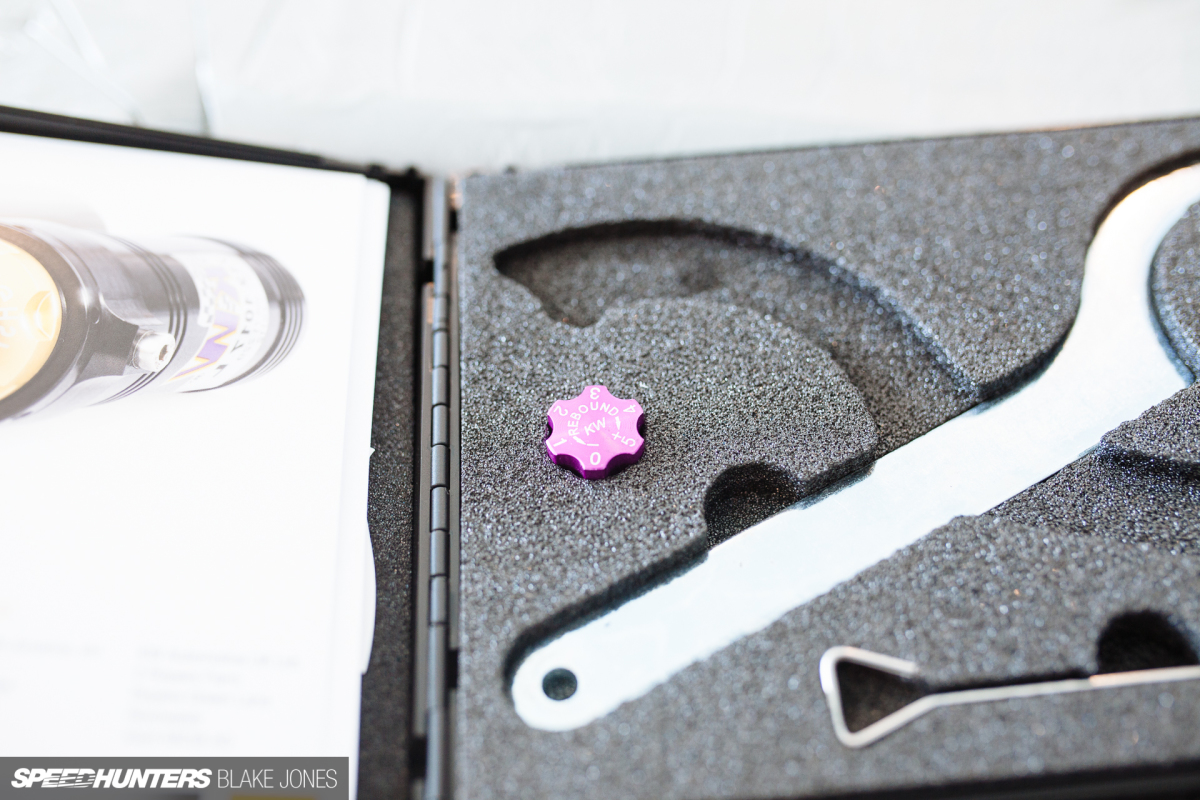
KW’s NSX solution is two-way adjustable, meaning the action of the shock can be tuned easily to vary the amount of compression (initial action of the shock when encountering a bump or weight transfer) and rebound (secondary action of the spring returning to its initial position) independently. For peace of mind KW has also ensured that even at maximum lowering, no damage will result to axle joints, coupling rods, tie rods, drive shafts, brake lines and so on.
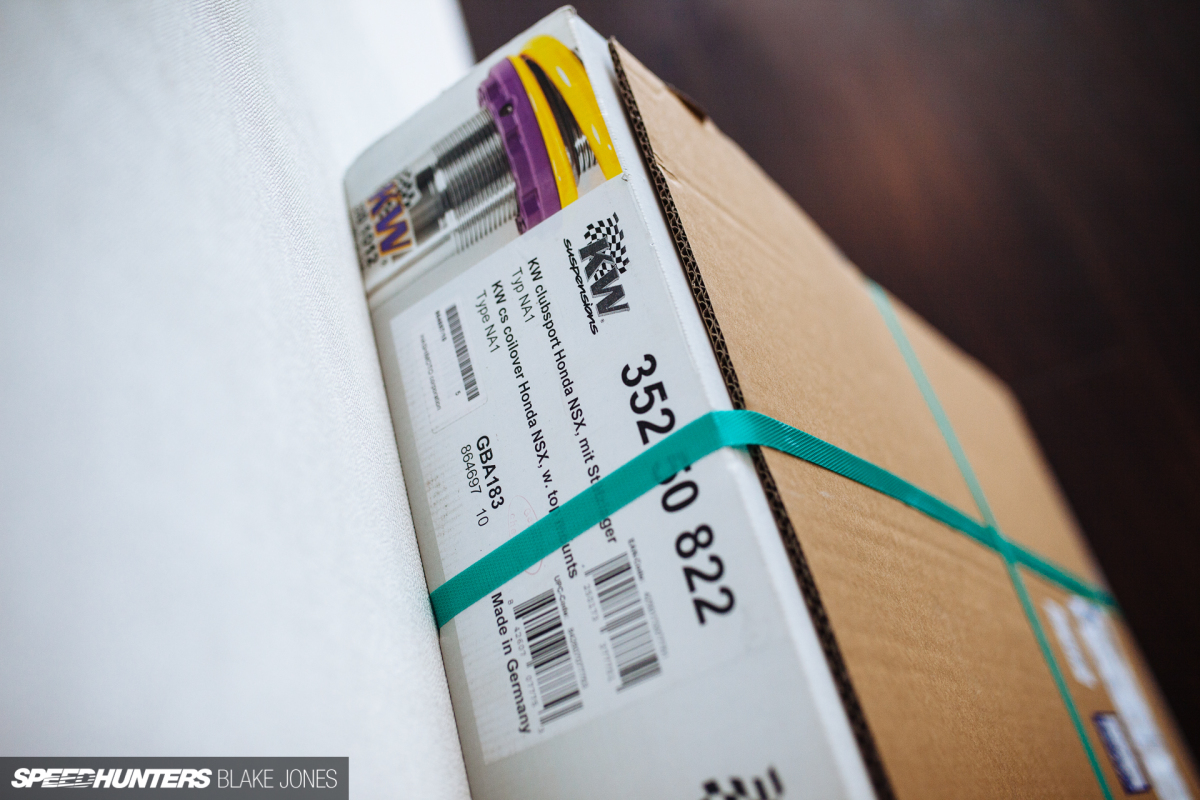
The suspension was designed to be the ideal compromise between circuit and road driving, being tested on the autobahn, Germany’s many country roads, and of course that famous curled ribbon of tarmac – the Nürburgring Nordschleife. The ‘Variant 3’ is KW’s top-selling coilover across all makes and models, and is what you’ll find under most street-driven NSXs in the owners groups that I’m involved with. However, KW also offers an option for those owners looking for an even more performance-oriented coilover: the Clubsport.
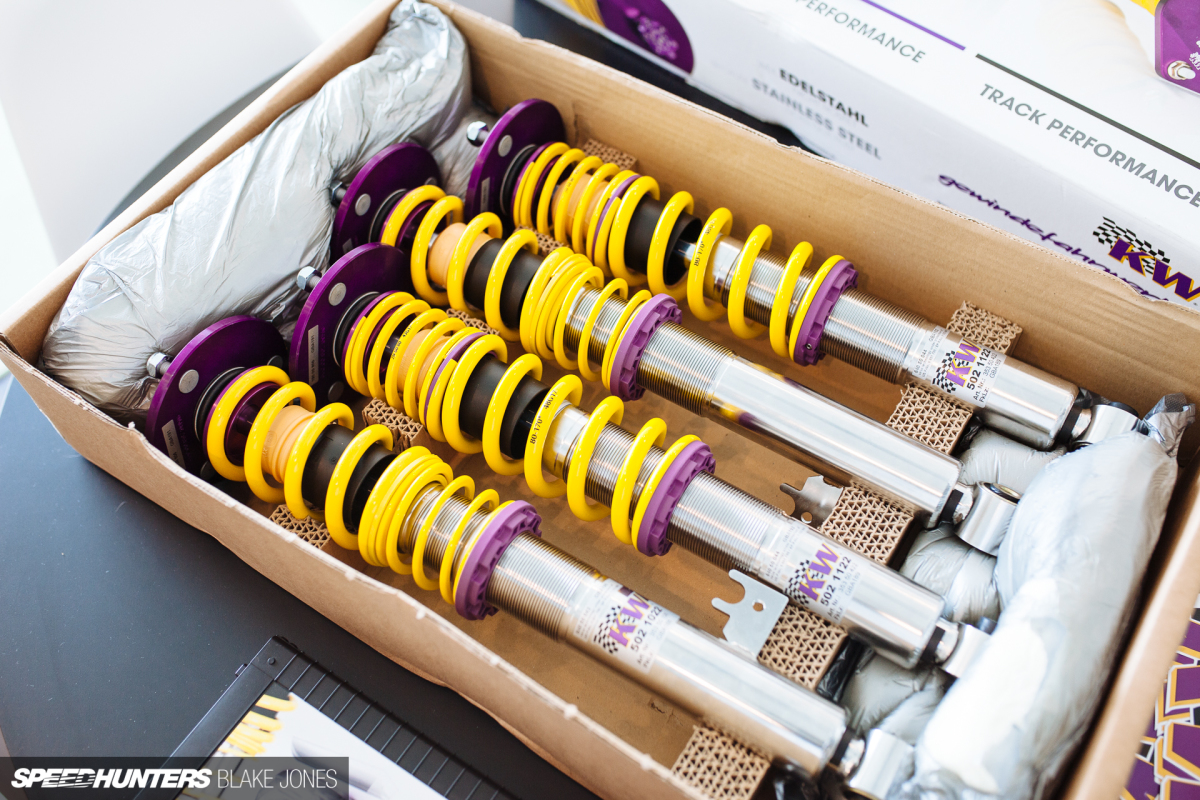
As such, the Clubsport package is a track-focused development of the V3. Whereas the V3 uses 6kg/cm springs front and rear, the Clubsport steps it up to an 8kg/cm spring. As always, Honda’s factory performance models are a useful reference point here – the 1993 NSX-R utilized 8kg/cm front springs and 6kg/cm rear, while for the 2002+ NSX-R the rates jumped to 10.4kg/cm and 8.3kg/cm respectively.
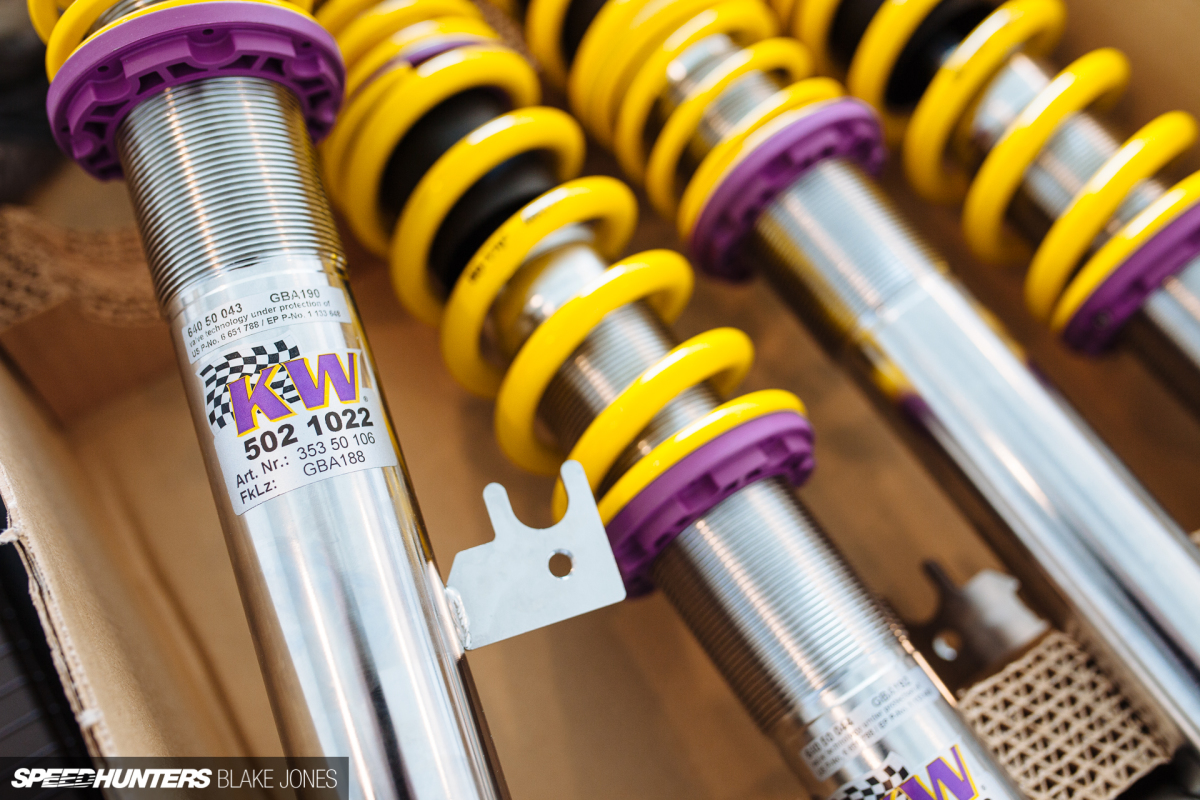
A stiffer spring rate means less roll through corners, which is great for grip. Go too stiff and your ride comfort and ultimately grip will start to evaporate, so the key for KW when developing the kit was to provide a high level of stiffness appropriate for a sports car like the NSX without going too far.
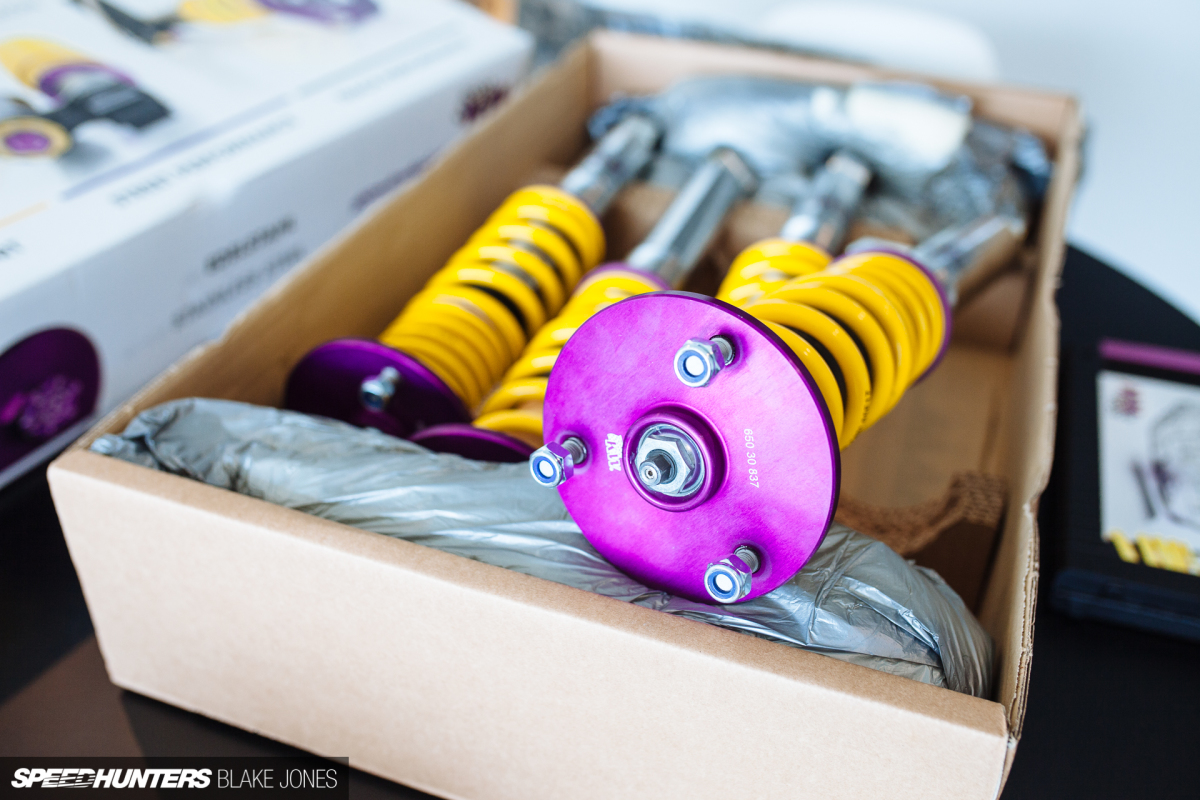
The Clubsport also features KW’s aluminium uni-ball top mount to replace the stock rubber units, creating a more rigid mount and thus a more direct and responsive feel. A solid top mount does come at the expense of some compliance, but the performance trade off was well worth it considering my objectives for Project NSX.
Honda NSX, Meet KW Clubsport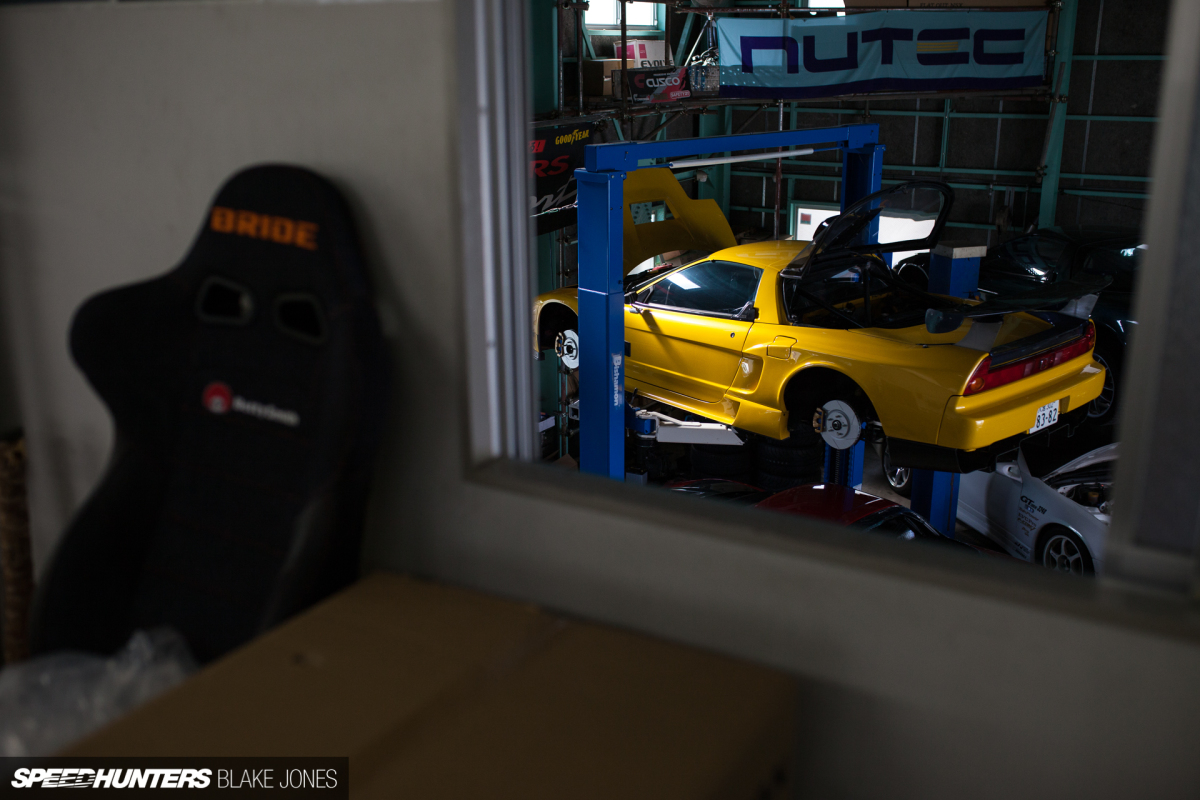
Having a flexible and trustworthy shop is an absolute necessity for most garage-less car owners in Tokyo like myself. I’ve found both those attributes in Yokohama’s Advance, so it was only a quick email before the car was booked in for a Saturday afternoon install. You guys always seem to enjoy when we poke around these Japanese workshops, so while Yagi was getting the car onto the lift I snuck around with my camera to see what I could find.
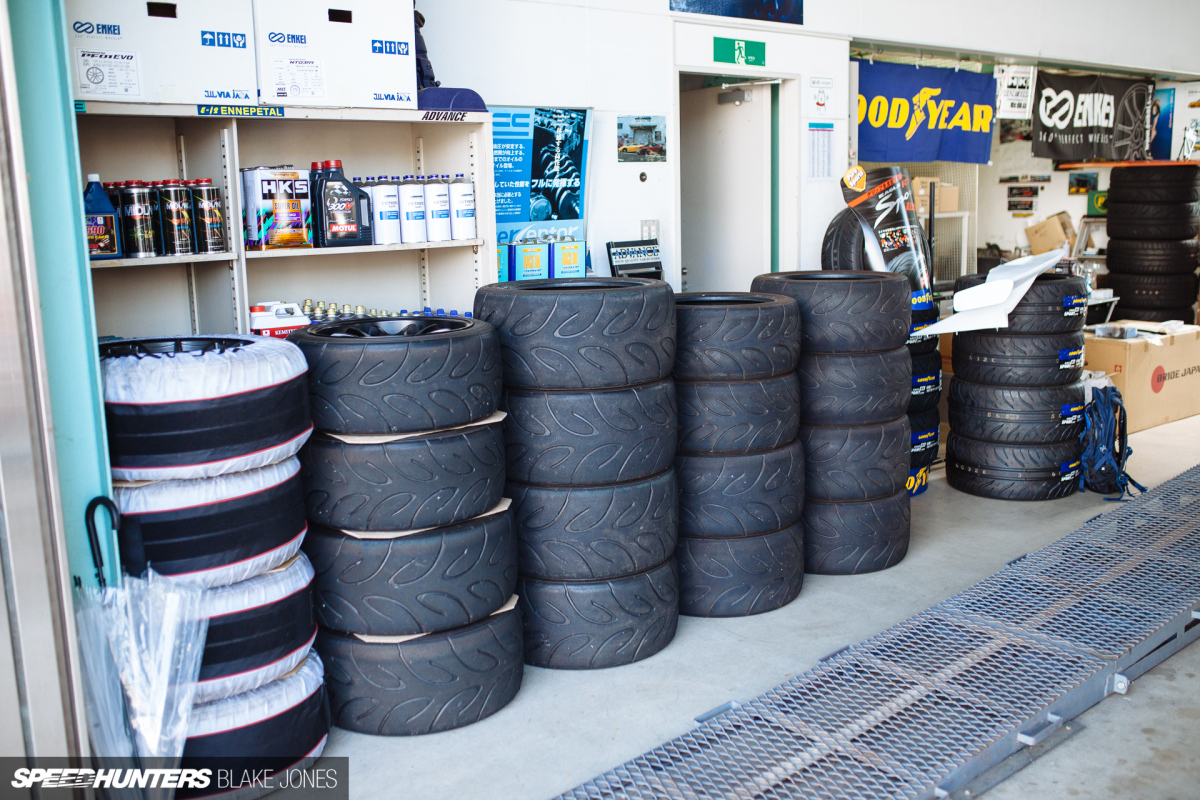
A supply of semi-slick tyres is always a good sign you’re dealing with a serious circuit-car shop, so this stack at the entrance did not disappoint. On this day there was the usual mix of NSXs and other Japanese models, including that Z34 we took a look at last month.
Tucked in the corner was the most curious car of all – this white Nissan 300ZX. The Z’s ’90s lines are certainly coming back in vogue, helped here by that F40-esque wing on the rear hatch. Bonnet up meant missing the big turbo SR20DET swap was impossible.
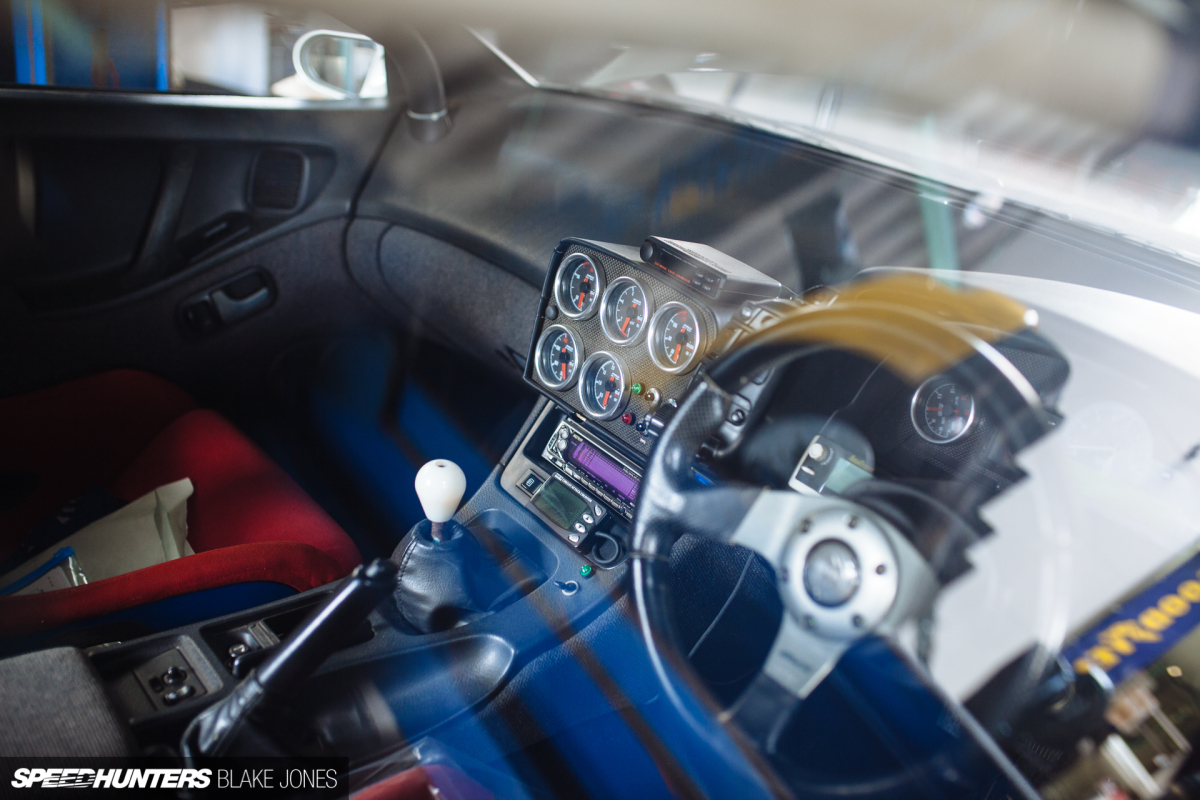
Taking a look inside was a flashback to the peak of JDM tuning – carbon-Kevlar Koenig bucket seats and a Stack digital/analogue cluster only matched by the bevy of gauges squeezed into the centre of the dash. Something so practical yet unique would be a joy to own – anyone want to see if we can get the owner to sell it to us as the next Speedhunters project car?
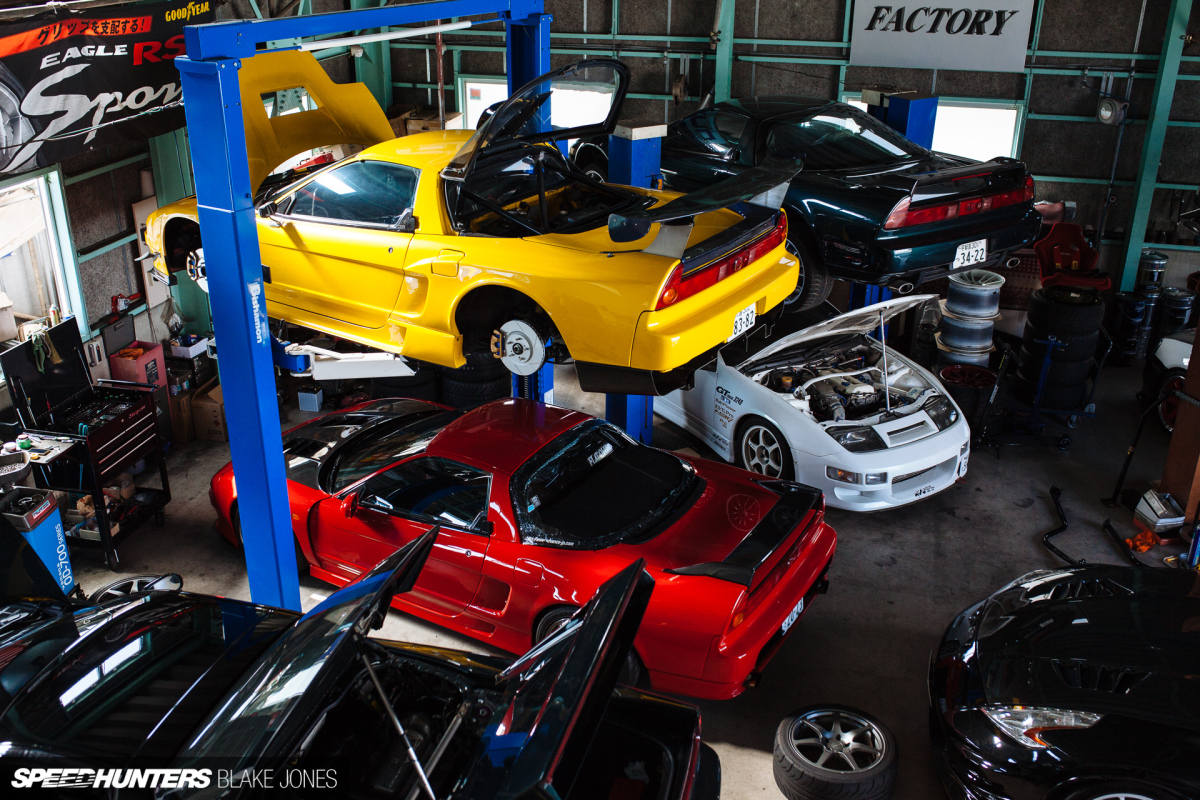
But of most interest to me were the other customer NSX builds. The more I learn about the Honda the more small custom touches I notice on these cars. Most of the customers have owned their cars for years – some even from new – and have worked with Advance to slowly improve their ability to go fast.
This red NSX is the perfect example of a car I notice more about every time – a one owner NA1 in extremely good condition, with a whole bunch of rare JDM performance parts. What’s not to love?! Just check out that crazy Ikeya Formula shifter that converts the H-pattern into a sequential up-down shifter. It was in the shop getting the rear glass hatch replaced – apparently it exploded after hitting a bump on the highway!
Customers will often drop by just to hang out, and Masa and Yagi always take the time to put down the tools and have a chat. It sometimes looks more like a bunch of old friends hanging out than a place of work.
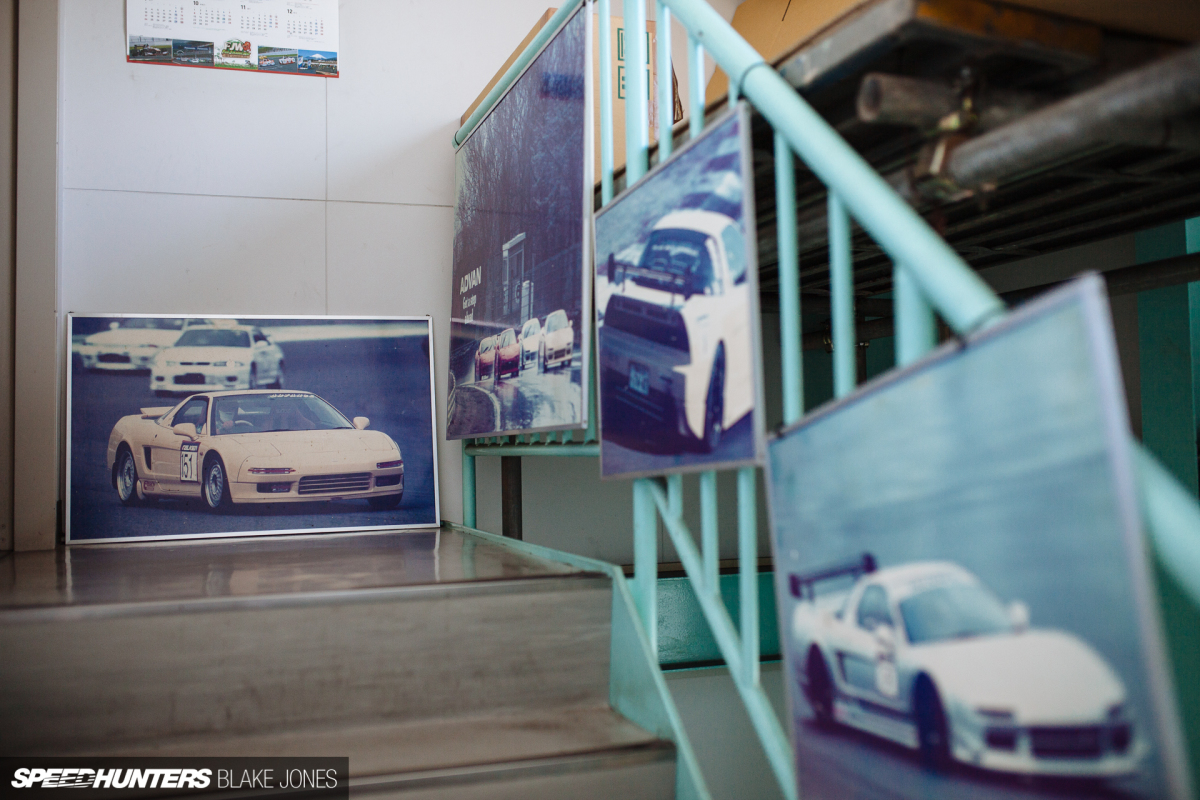
On the way up to the second floor office there’s some fading photographs from Advance’s early days, when founder Shinbori-san was one of the first tuners to try to eke more speed from Honda’s supercar. Shinbori-san tragically passed away in 2010, leaving his son Masa to step up to the helm. He was not alone however – Yagi, who had worked with Shinbori-san for 15 years, completes the two-man team.
The office space is littered with relics of Advance’s storied history.
This lower shelf here is reserved for magazines in which Advance has been featured – including issues of Hyper Rev’s ‘Tuning Bible’ which are a must-own for any NSX enthusiast.
Masa was in the office taking calls from customers wanting to register for the next track day at Fuji Speedway in June. In the heat of the moment, I told him I’d sign up too, but now I’m a bit nervous that the car might not be quite ready, with tyres, brakes and fluids on the list before a run at Japan’s highest speed circuit. Better get moving!
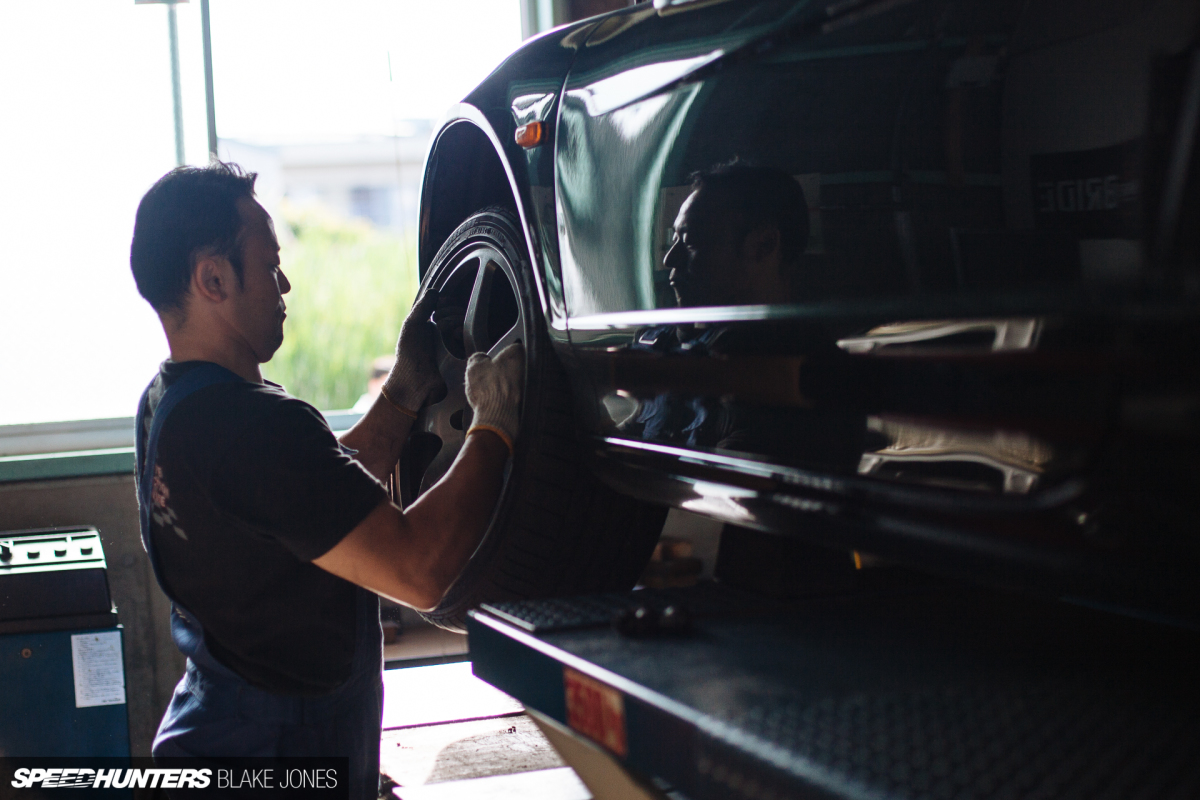
Respectful of my tight schedule, Yagi got straight to work. The car went up on the lift and a piece of tape was placed on each of the fenders for later height-setting measurement reference.
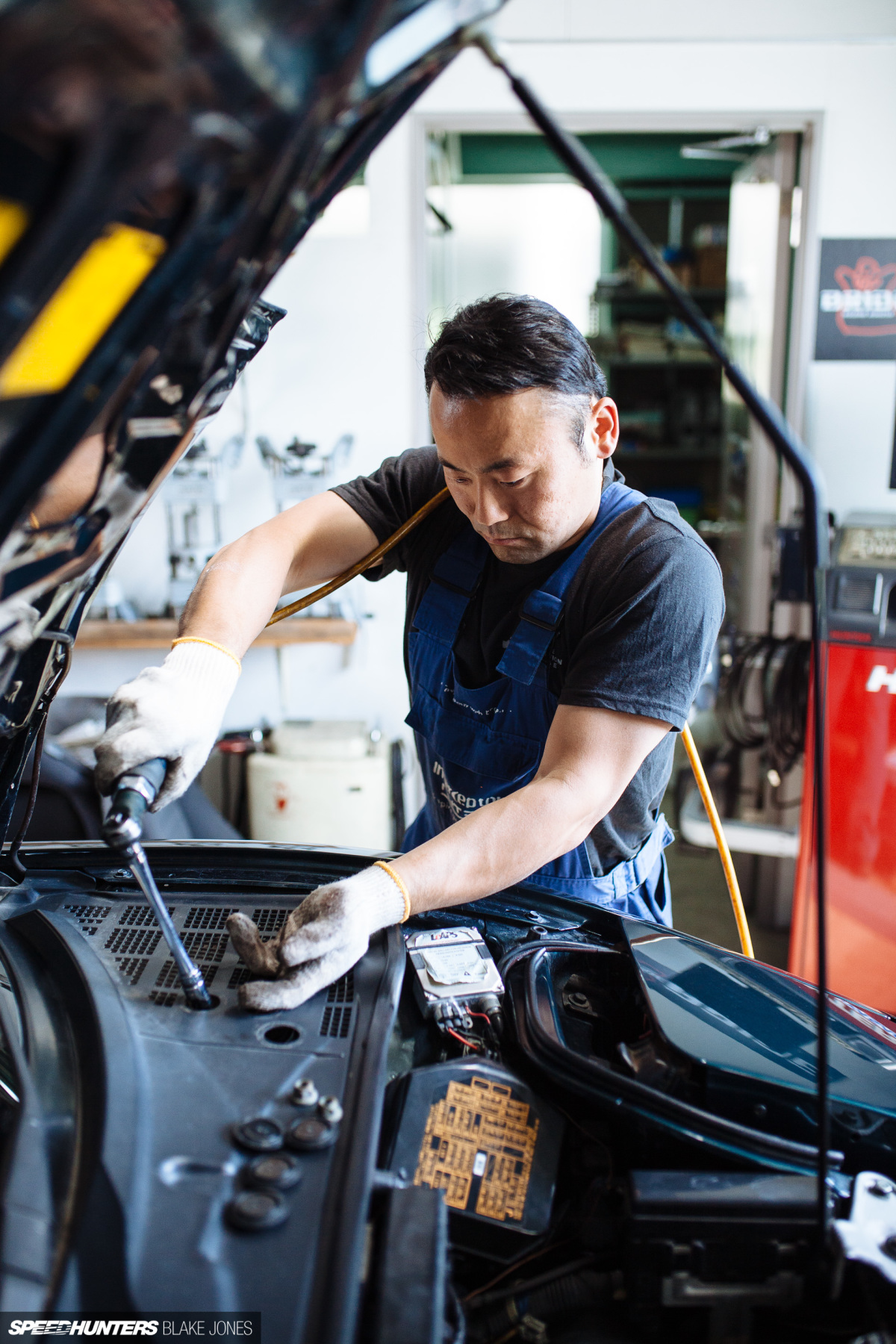
The wheels were deftly removed and Yagi made his away around the car with the rattle gun to remove the bolts holding each of the stock coilovers in place.
In the NSX, coilover top mounts are easy to access – the front just requires four plastic covers to be unclipped, while at the rear the mounded plastic vent that sits behind the rear hatch would need to come out.
I took the opportunity to weigh both the stock shocks and the KW Clubsports, as part of my mission to document the performance benefit (or downside) of each modification as precisely as possible. Getting extra power from the C30A is neither cheap nor easy so saving weight is of utmost importance for the build. A pleasant surprise then that the KW’s were on average 1.6kg (25%) lighter at each corner! Although it does raise the question if a shock body counts as ‘sprung’ or ‘unsprung’ weight…
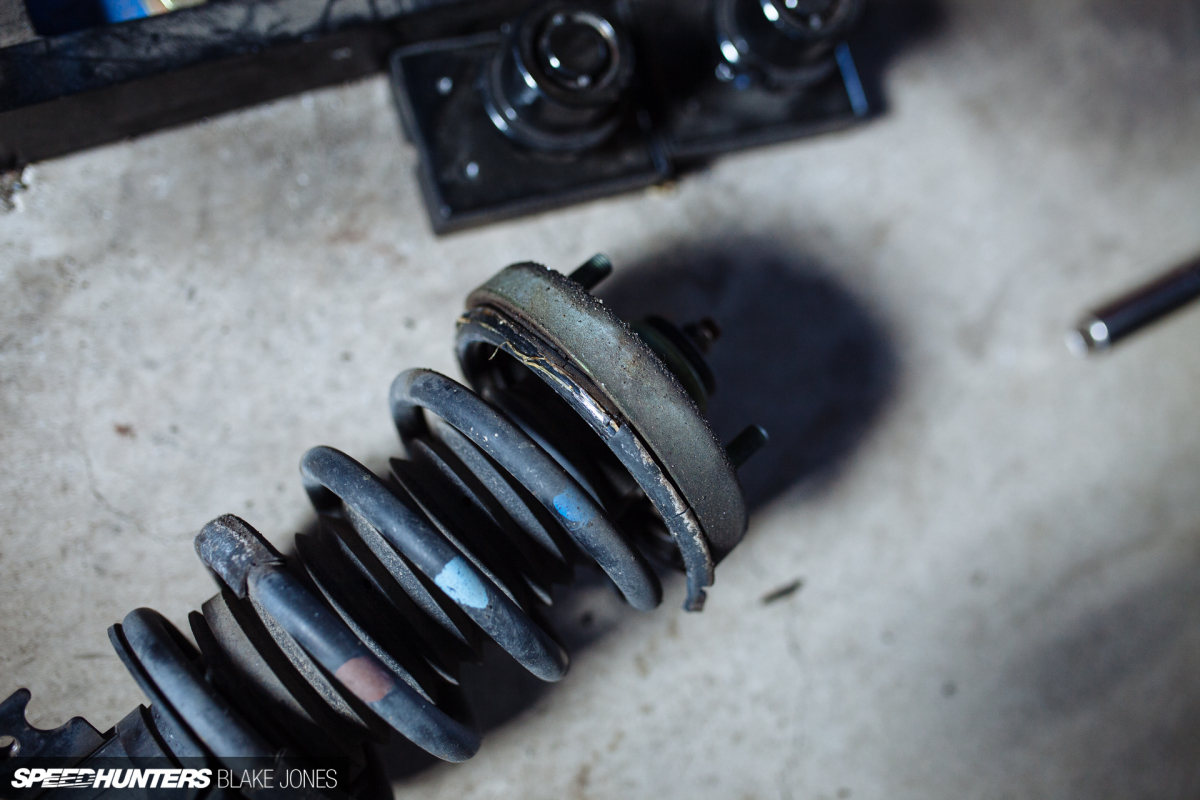
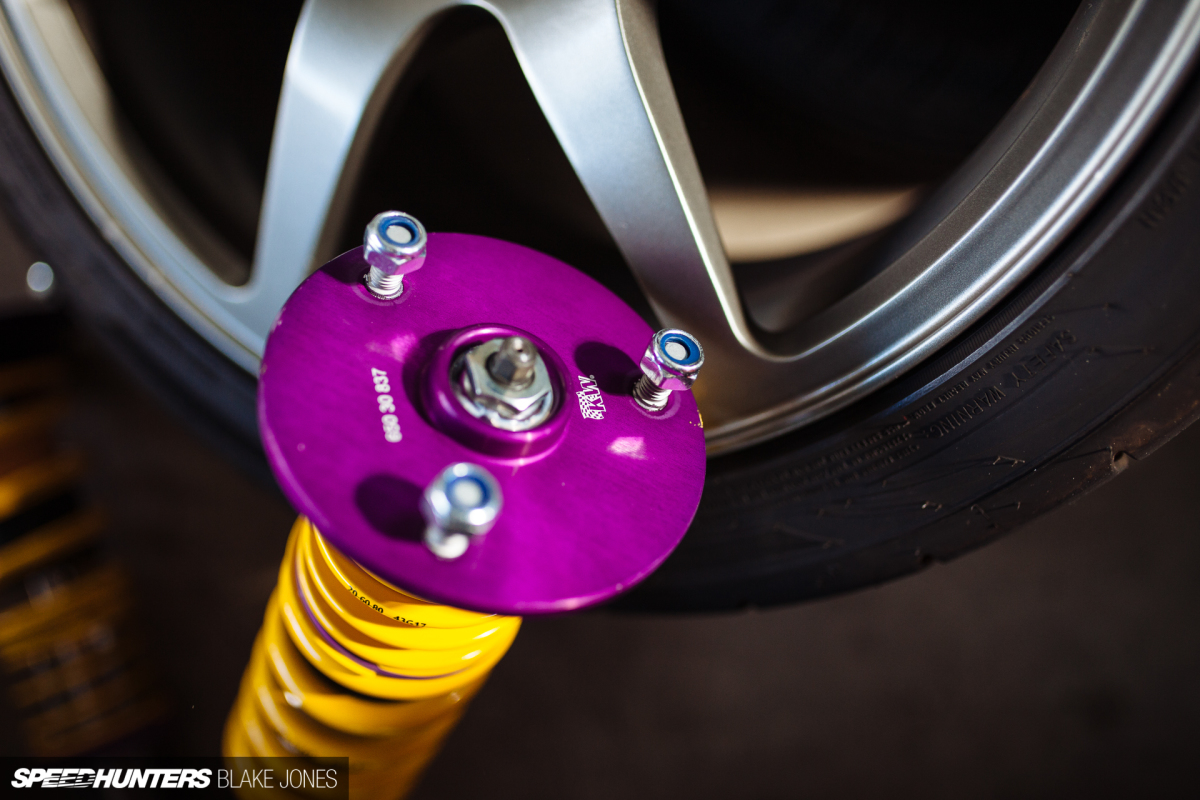
As with most cars the factory top mounts are rubber units, and at 25 years of age, the NSX’s had seen better days. The KW aluminium mounts are sealed and will never fail like the stock unit above.
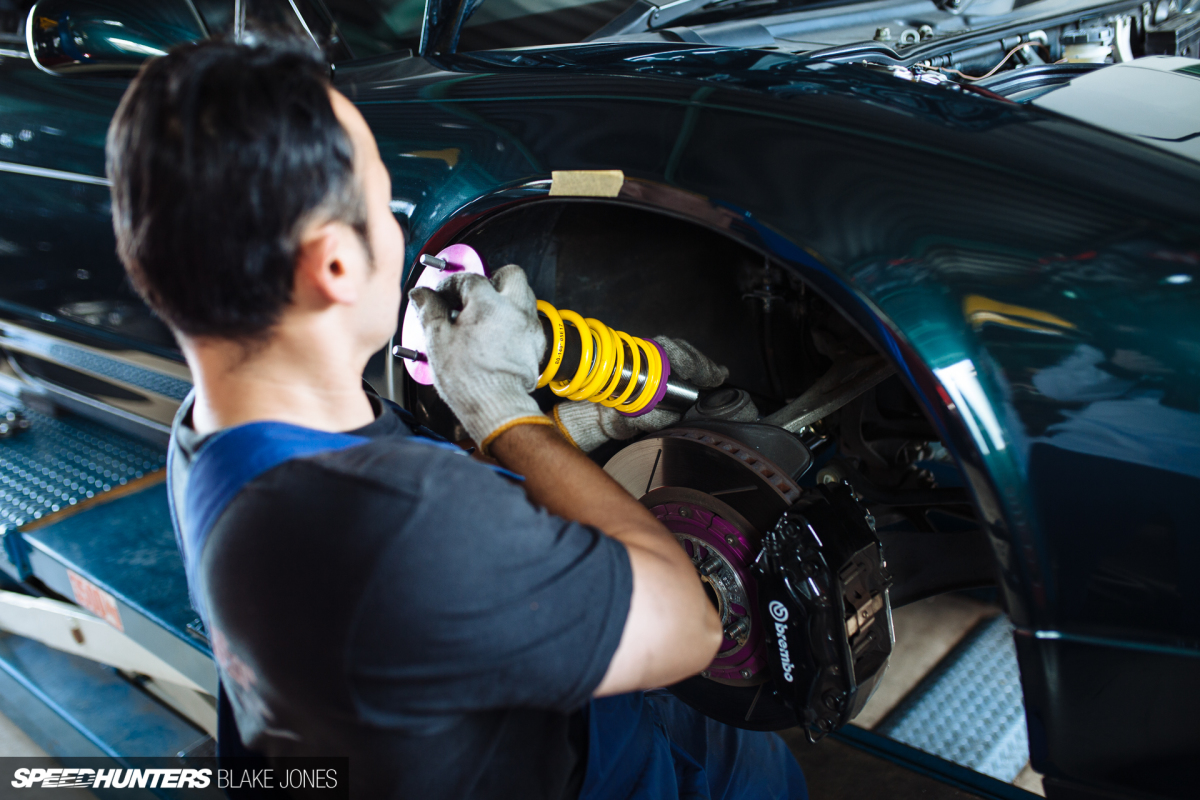
The units were then carefully manoeuvred into place.
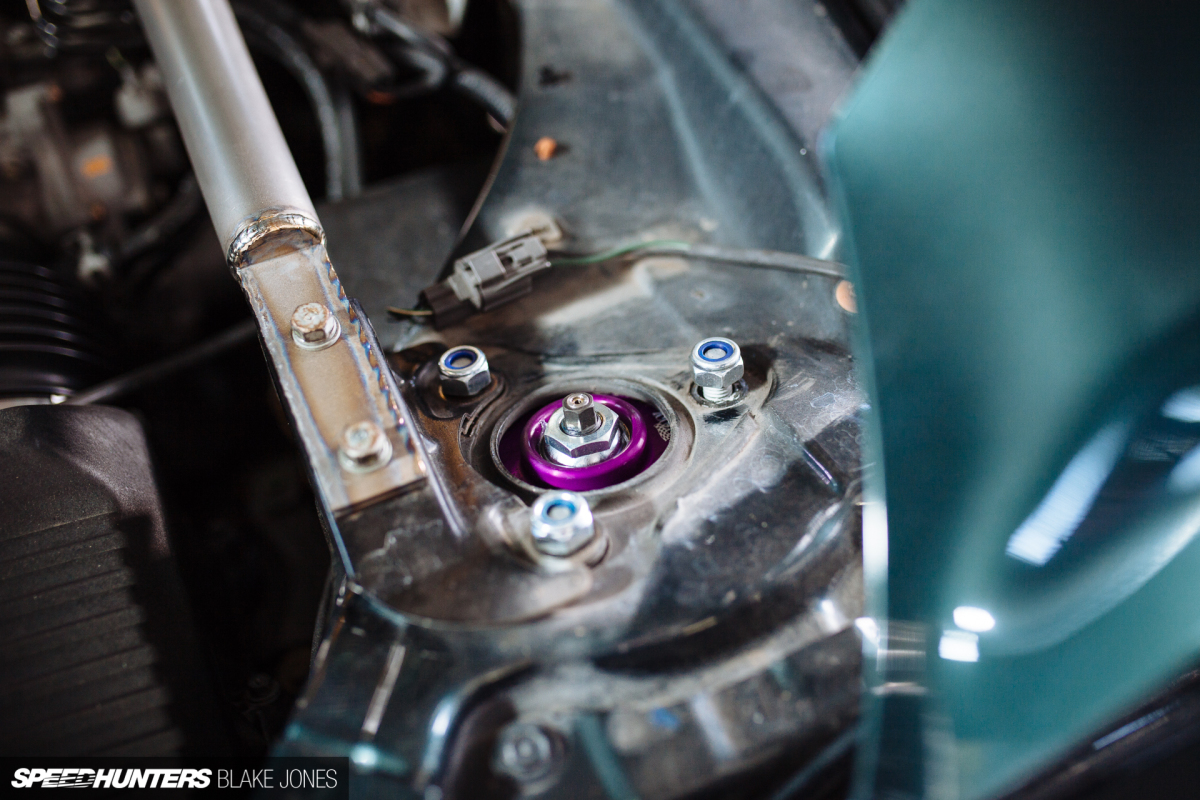
Once everything was aligned, the nuts were hand tightened before being finally torqued to specification.
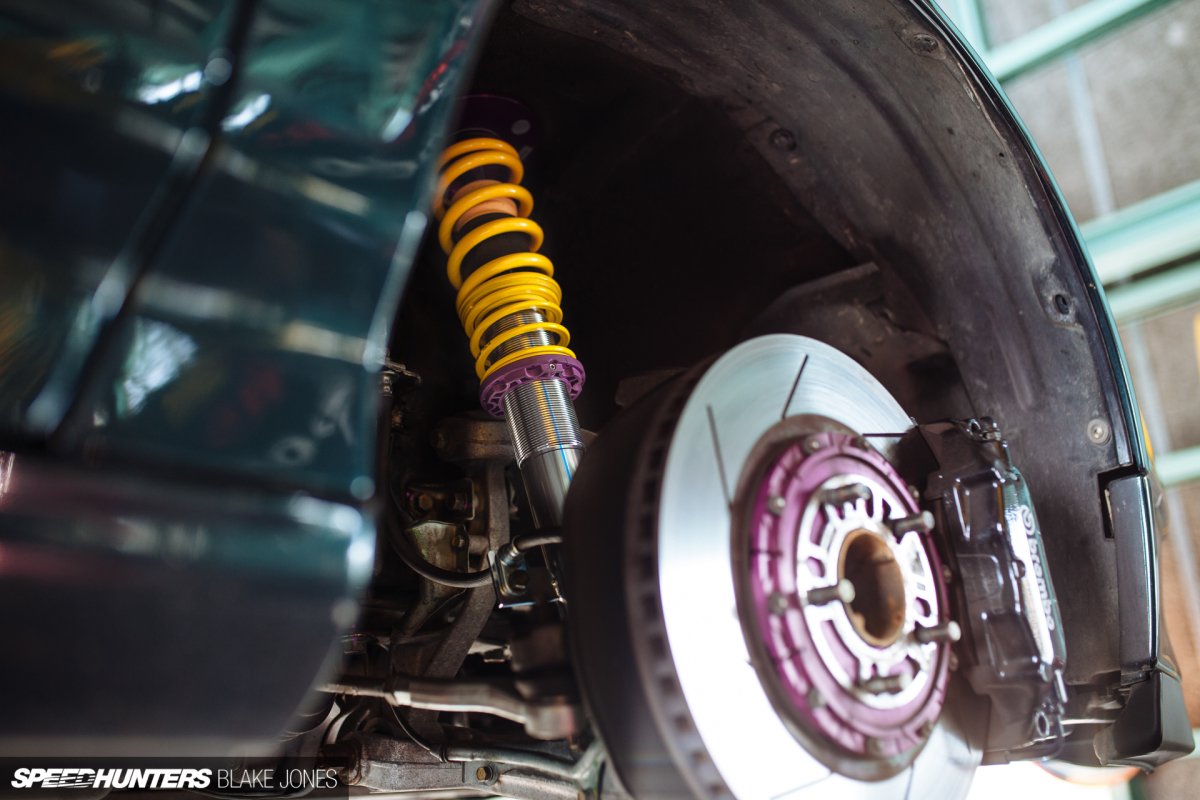
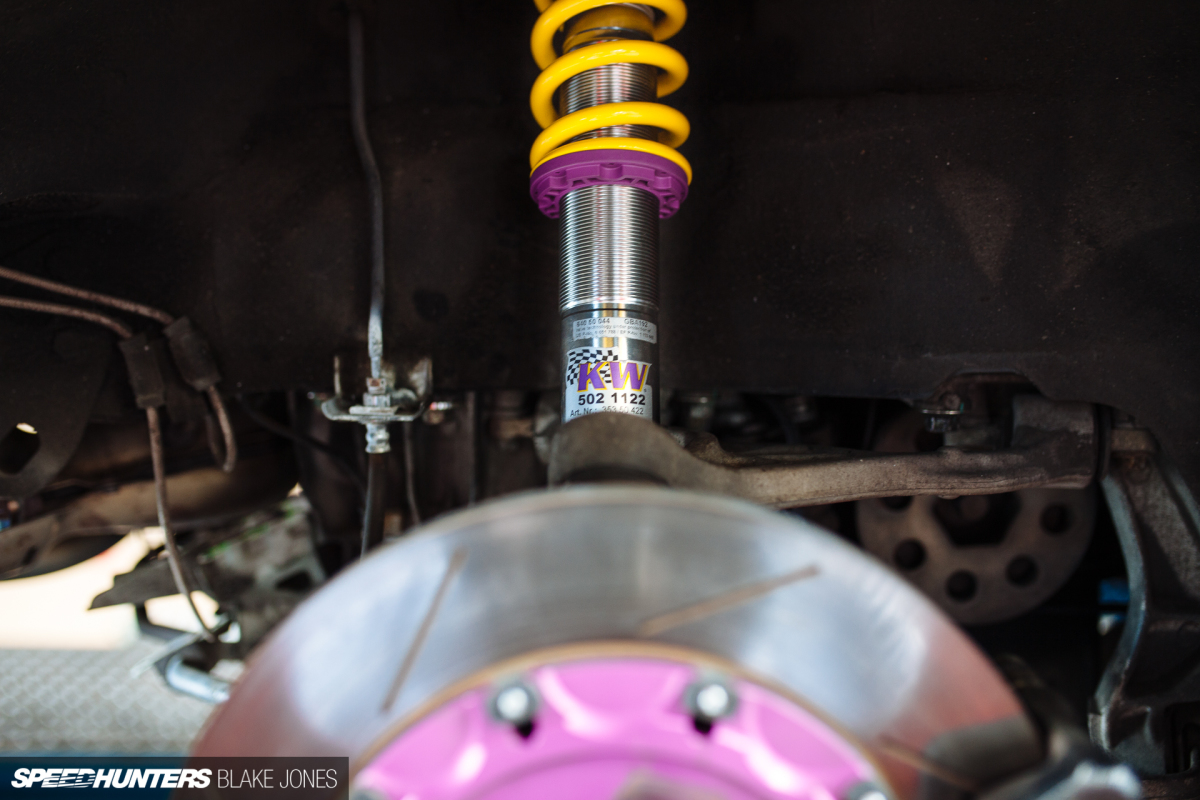
It’s almost a shame to hide the handsome KW’s inside Project NSX’s dirty wheel wells, so I made sure to photograph them looking spotless for posterity. At least I can take comfort that the stainless steel inox-line bodies will be impervious to any sort of corrosion.
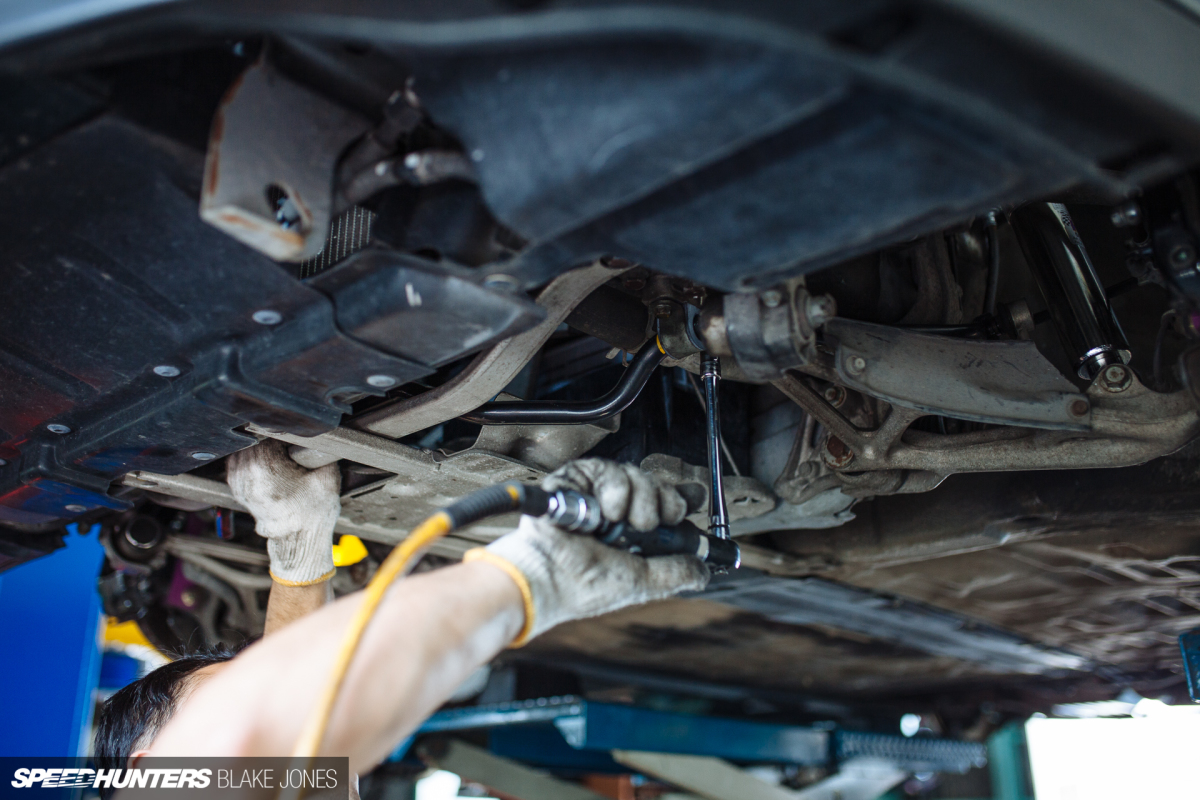
At the same time the coilovers were going in I decided to install a beefier OEM front sway-bar from the NA1 NSX-R. Yagi is a quick worker so I didn’t manage to snap a photo before it went in, but here you can see him installing the new bar. It’s 3mm thicker than stock and should usefully stiffen the front end. The rear bar is being left stock for now based on the recommendation of Advance, but if the front end starts to push I might go back to the stock bar.
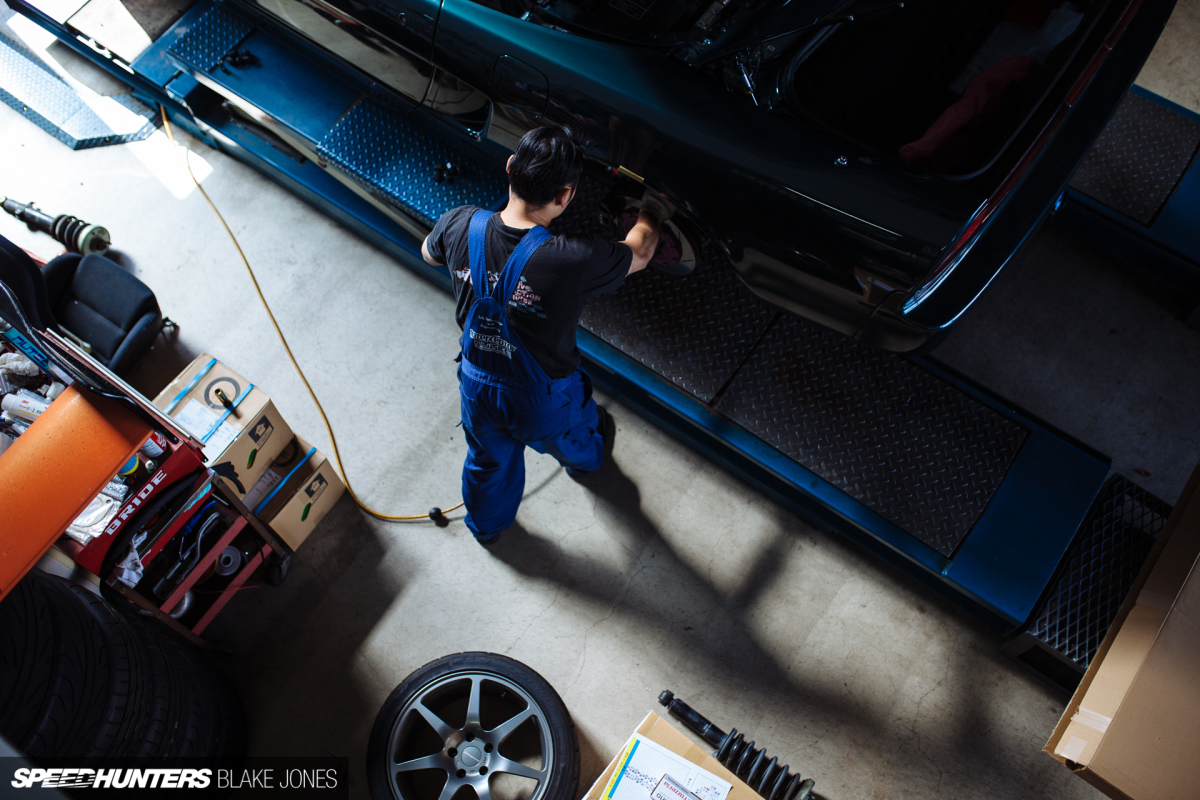
Yagi then asked me how low I wanted the car. Being indecisive, I threw the question back at him ‘osusume wa nan desu ka?’ to which he laughed. There were two options: his ideal ride height for a road/track NSX, and the legal height. I’ll let you guess which option I chose.

Height adjustment is made via an adjustable spring perch mounted on the shock body, as you’d expect.
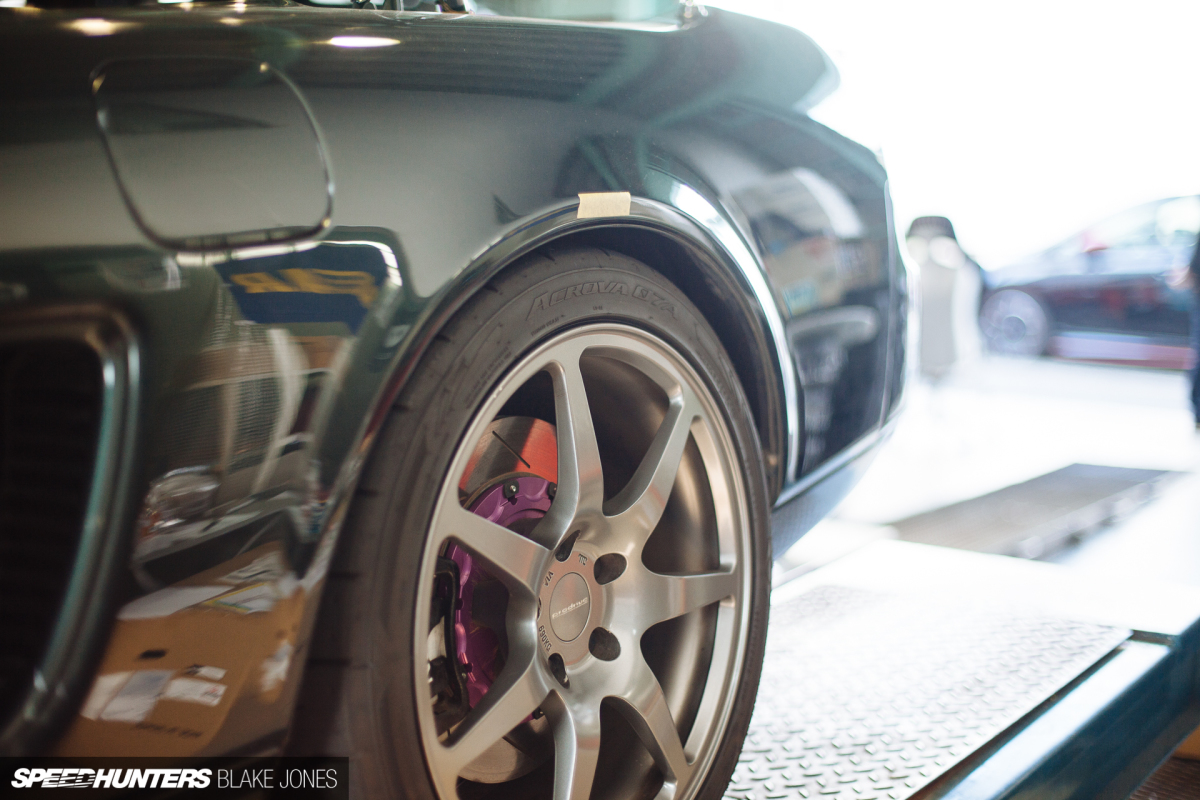
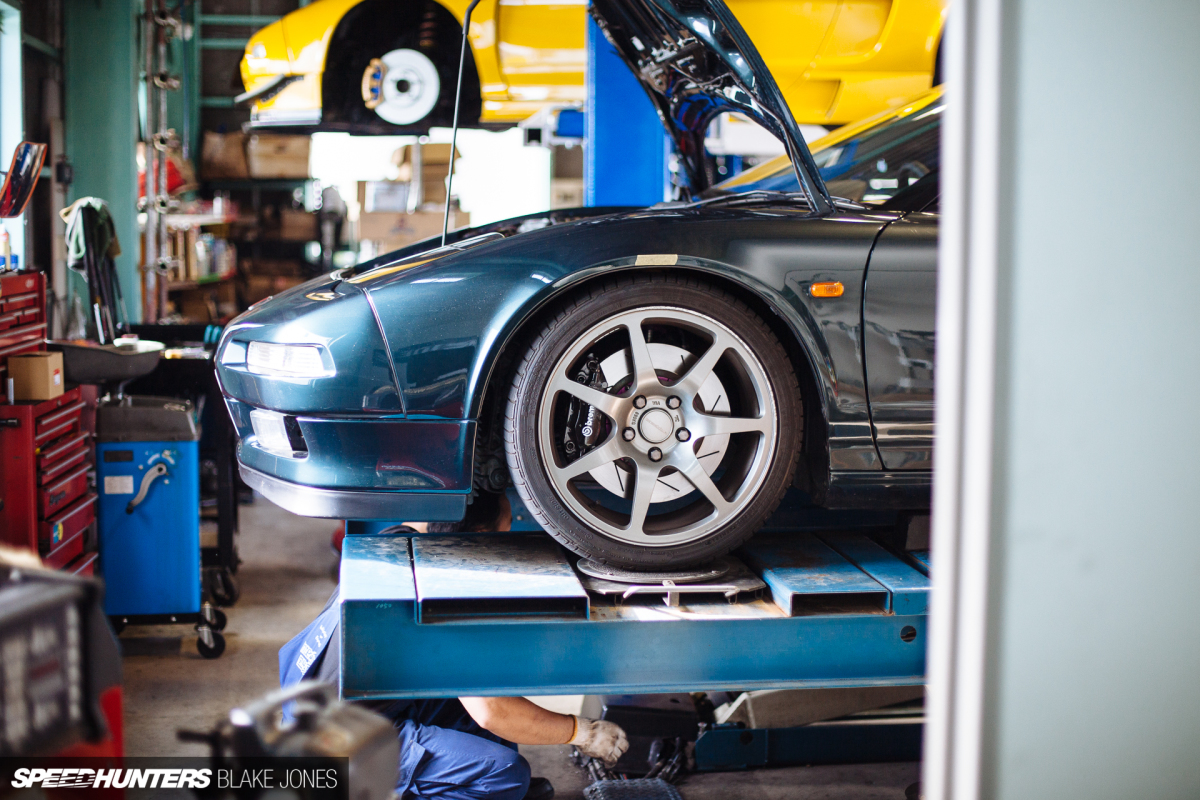
After a few cycles on the lift, Yagi had the new height set – about 30mm lower at both ends than before.
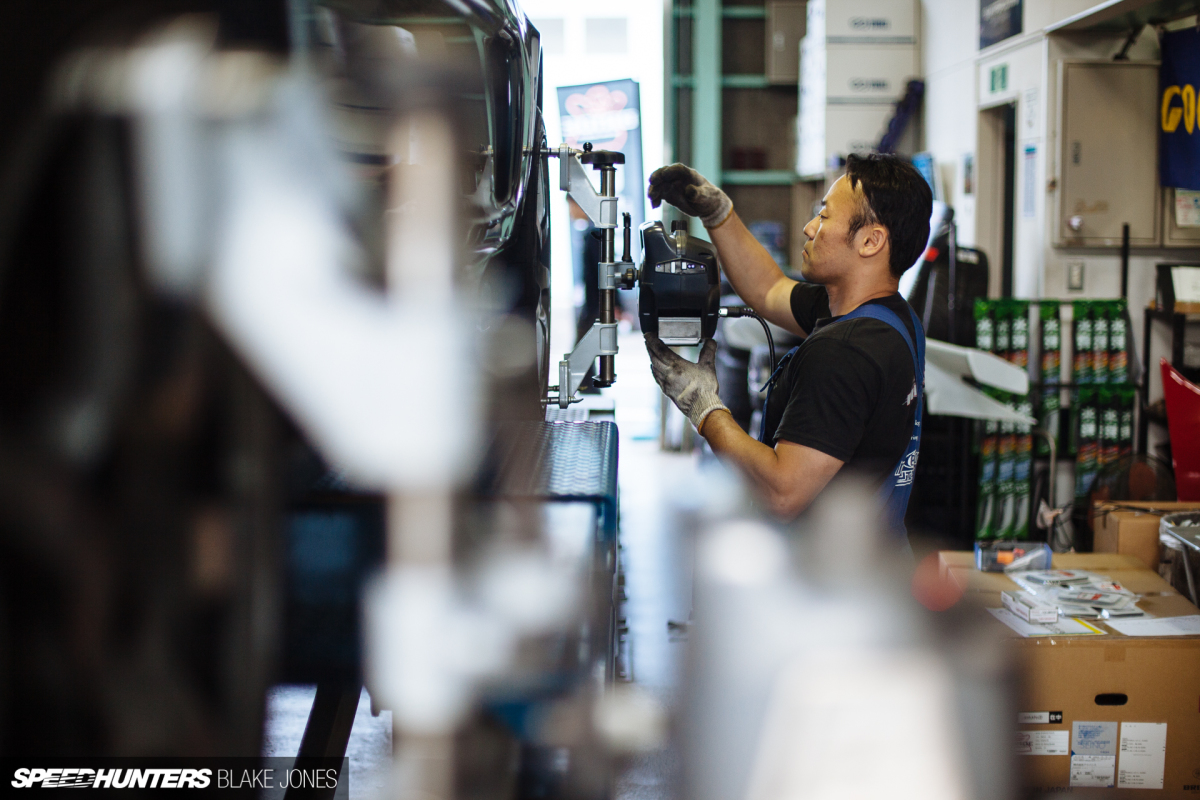
A significant portion of Advance’s work is pre-track day preparation, of which alignment is an integral task. There’s no strings or bobs to be found here – Yagi uses a laser system from Hunter.
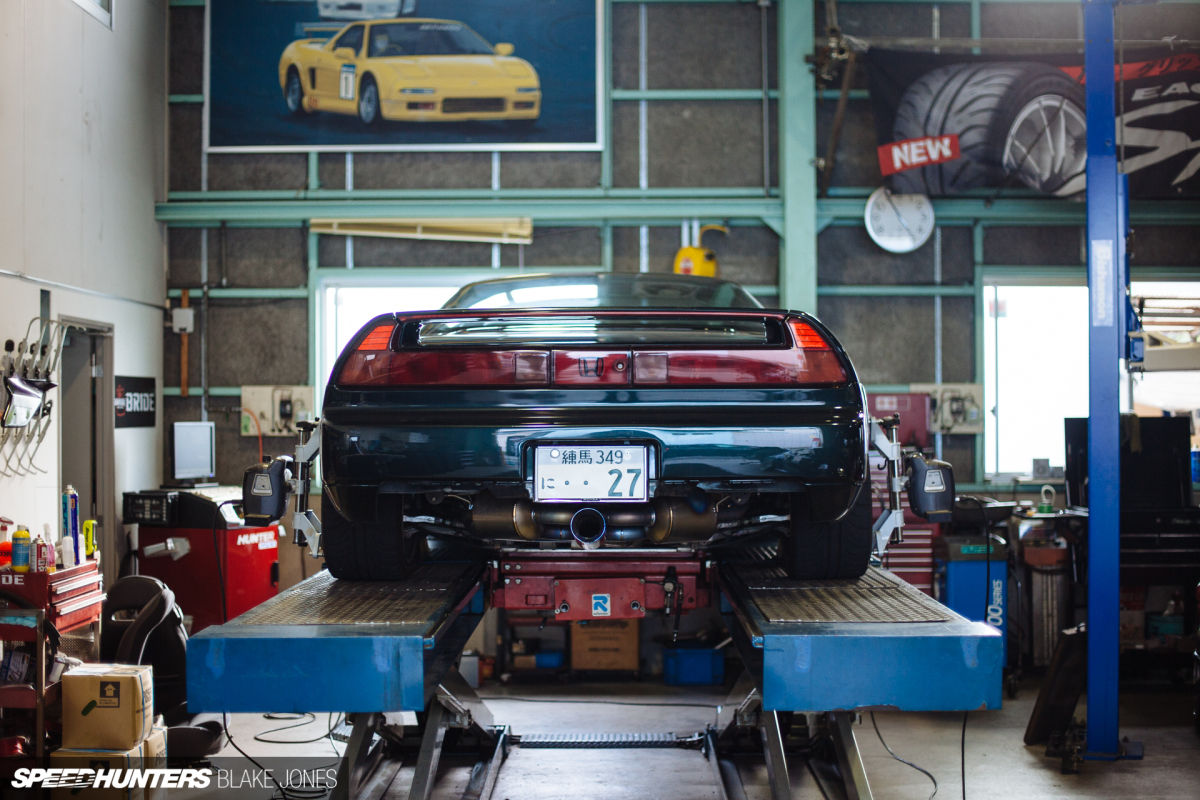
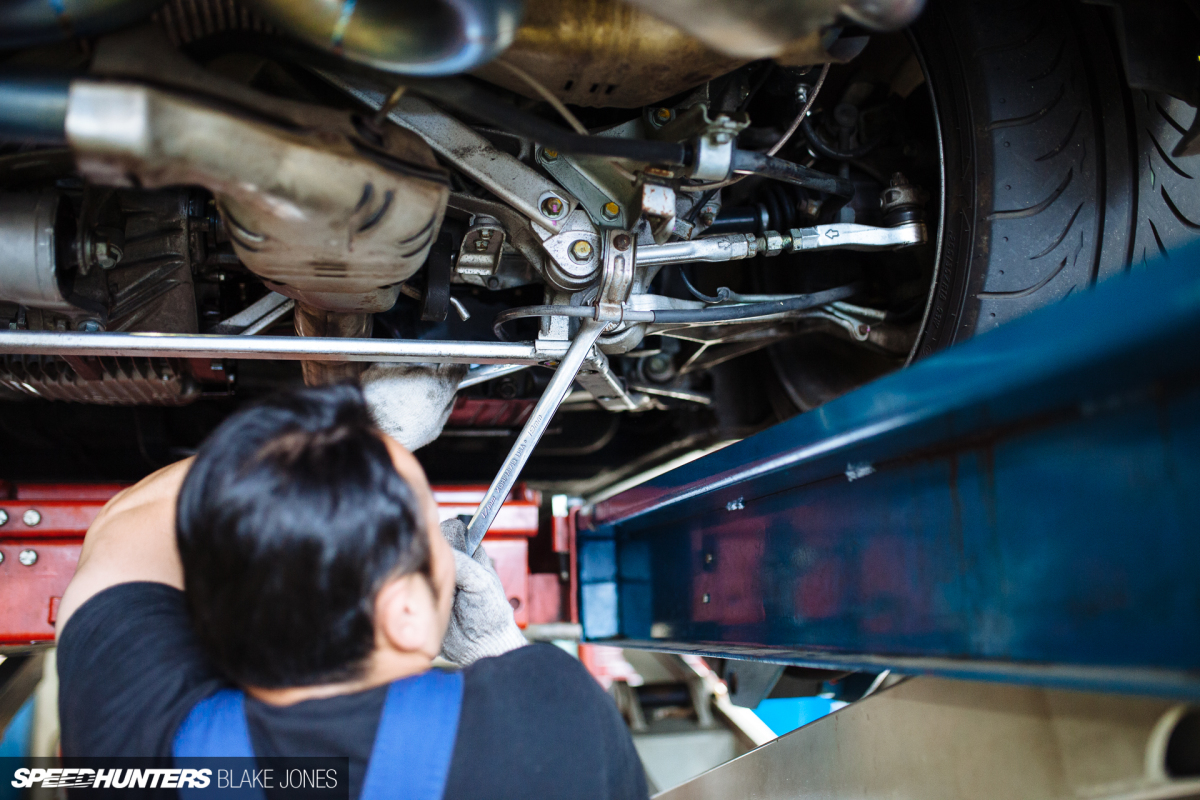
Despite paying for dozens of alignments over the years I’ve never stuck around to watch, so it was a pretty interesting process. The laser system means Yagi can quickly get each setting right (with an audible and visual confirmation from the machine) without the need for a second send of hands or eyes.
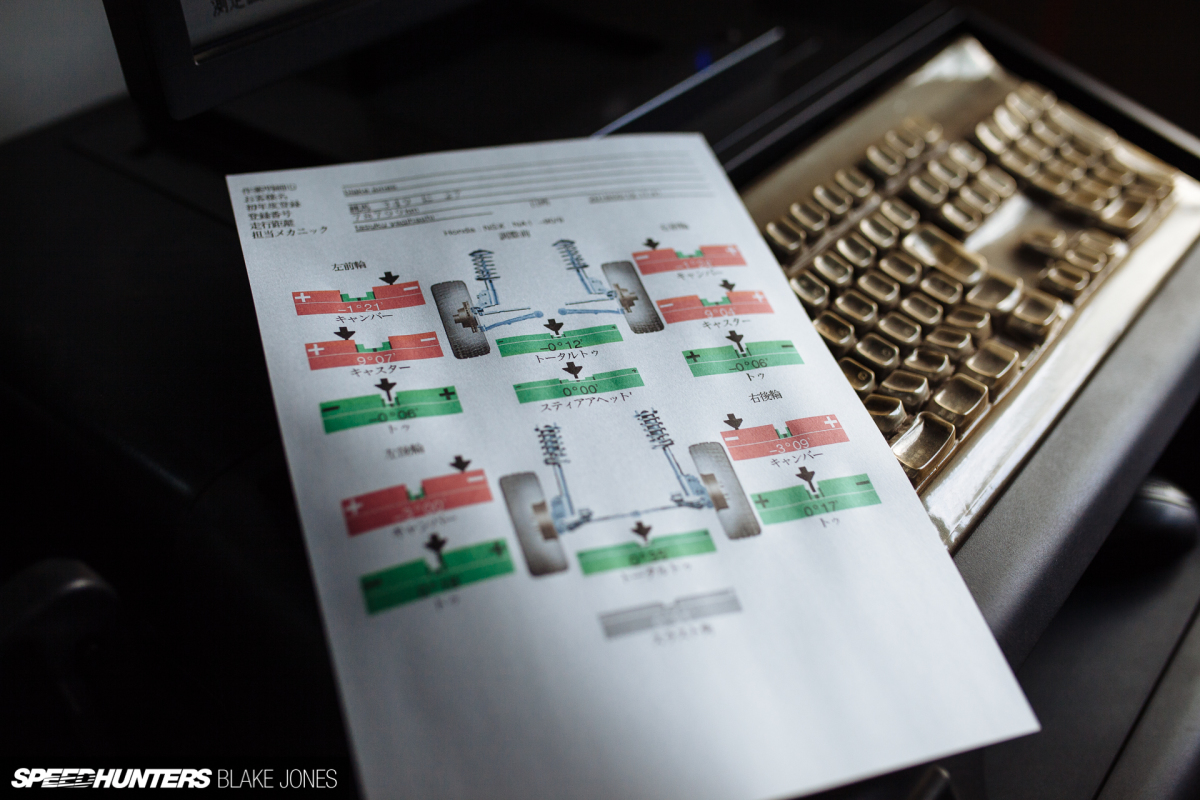
At the end, I got a print-out with my new alignment specs – sportier than stock but nothing too extreme considering the street tyres I’m using at the moment.
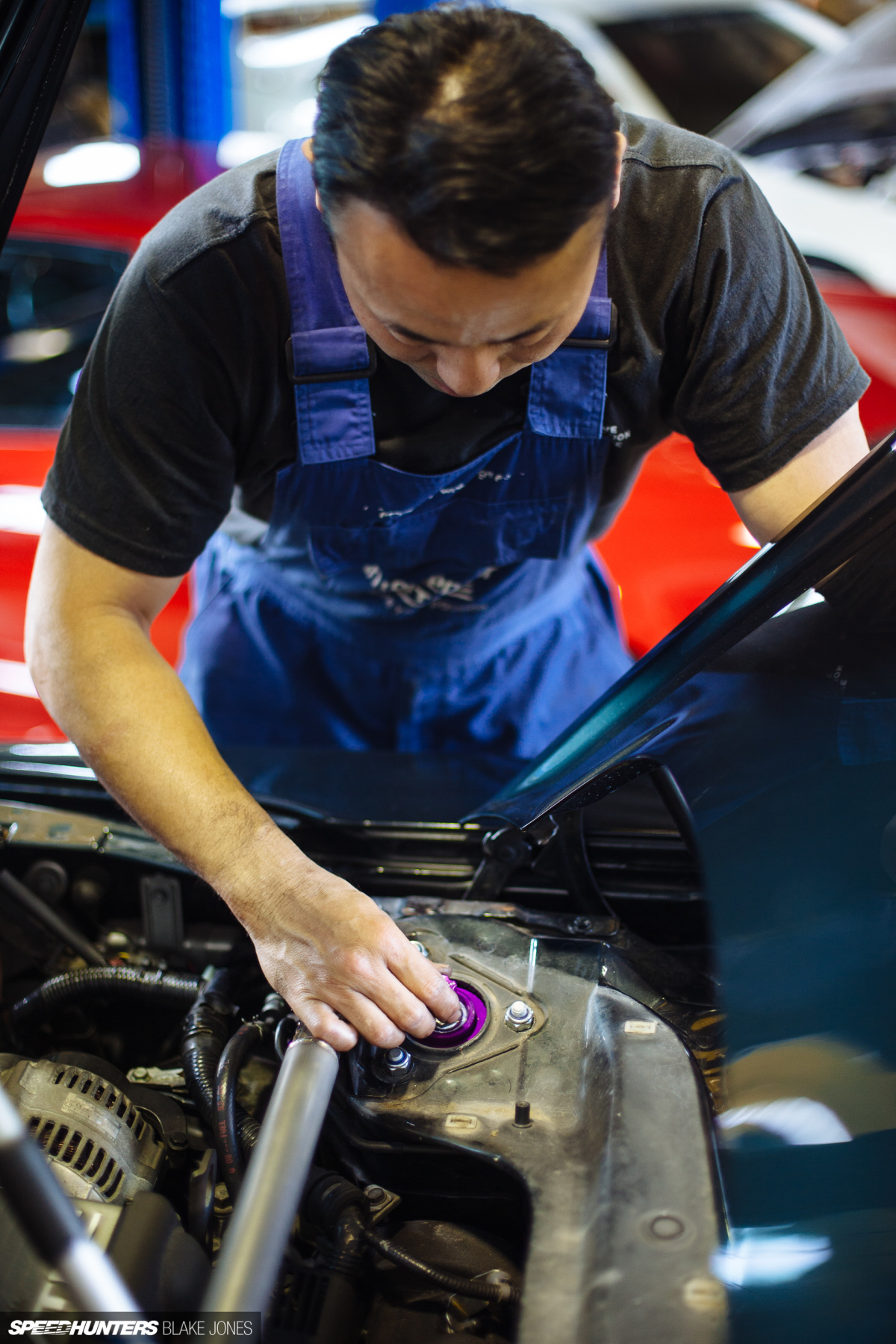
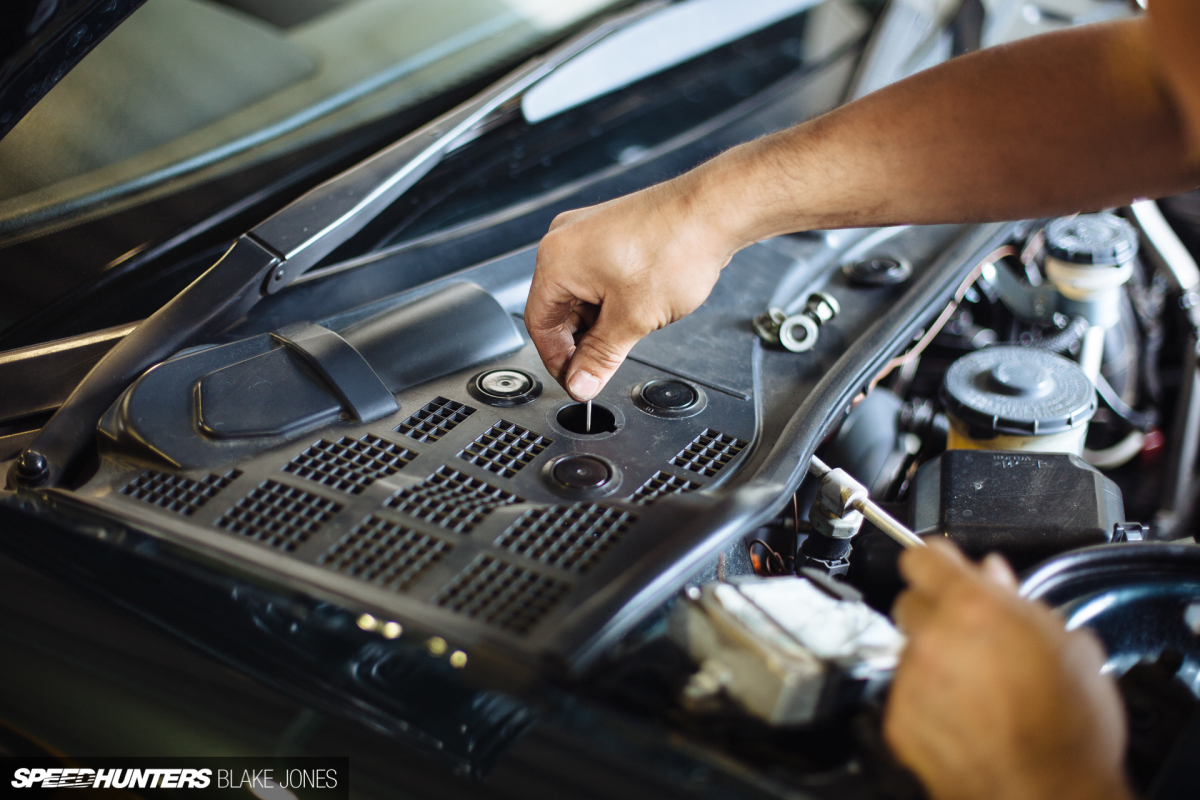
Those easy-to-access top mounts mean setting the rebound will be a quick and easy job. My plan is to start on the softer side and gradually ramp up the stiffness if needed in the future, so Yagi set both compression and rebound to full hard and then backed it off by five clicks.
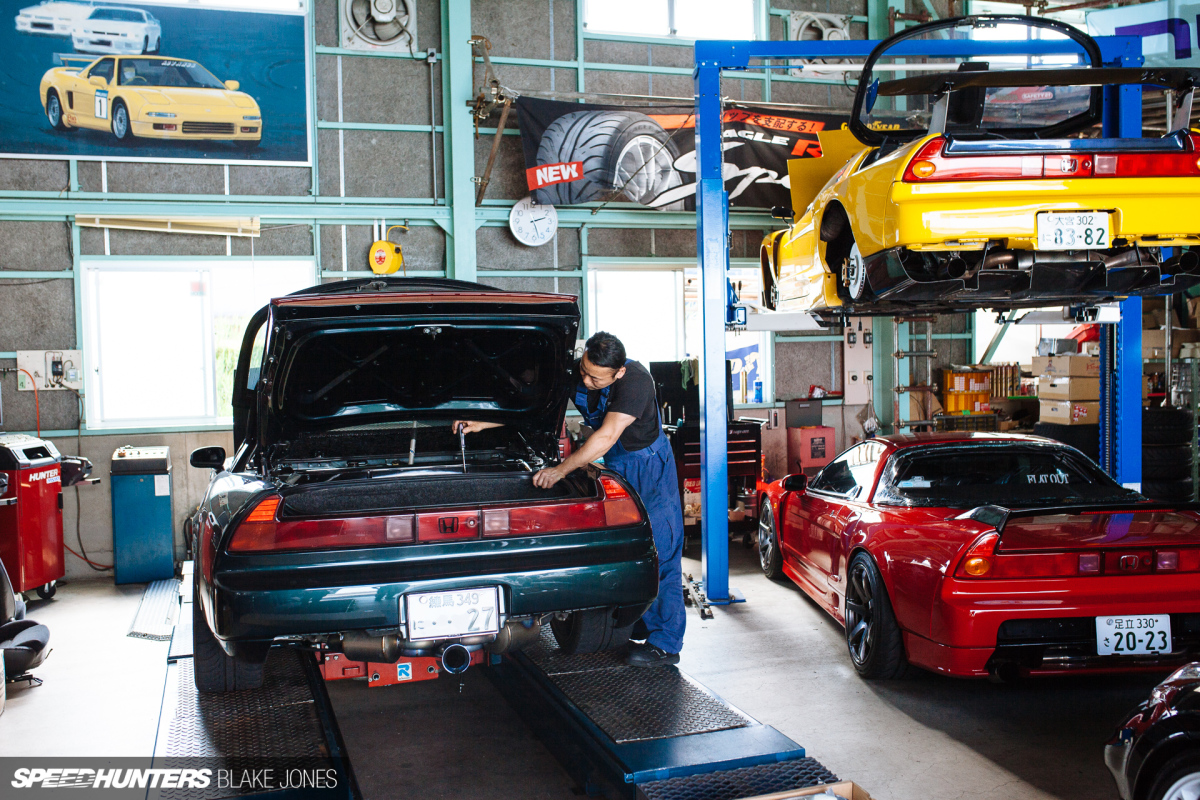
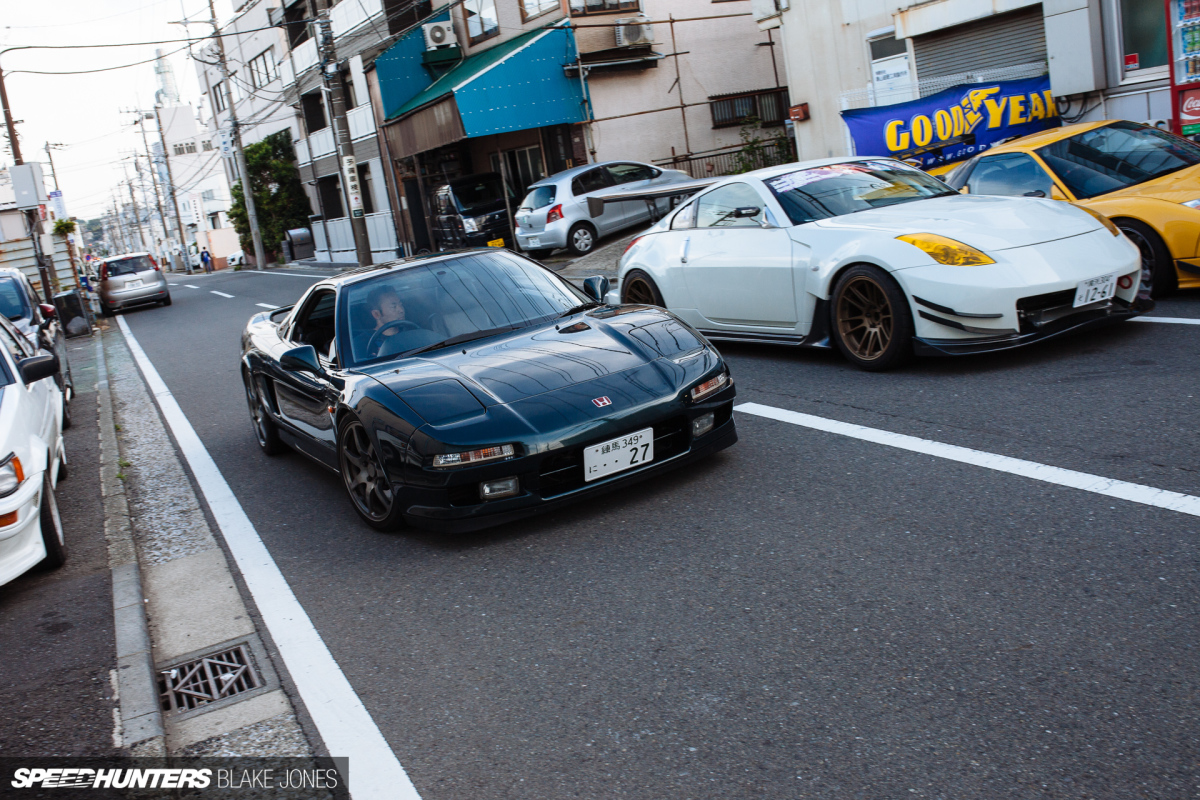
The only thing then left was for Yagi to take the car for a quick test drive and verify that his settings were correct and everything felt as it should. It was also the first time I could see the car at its new height – it looks so low now!
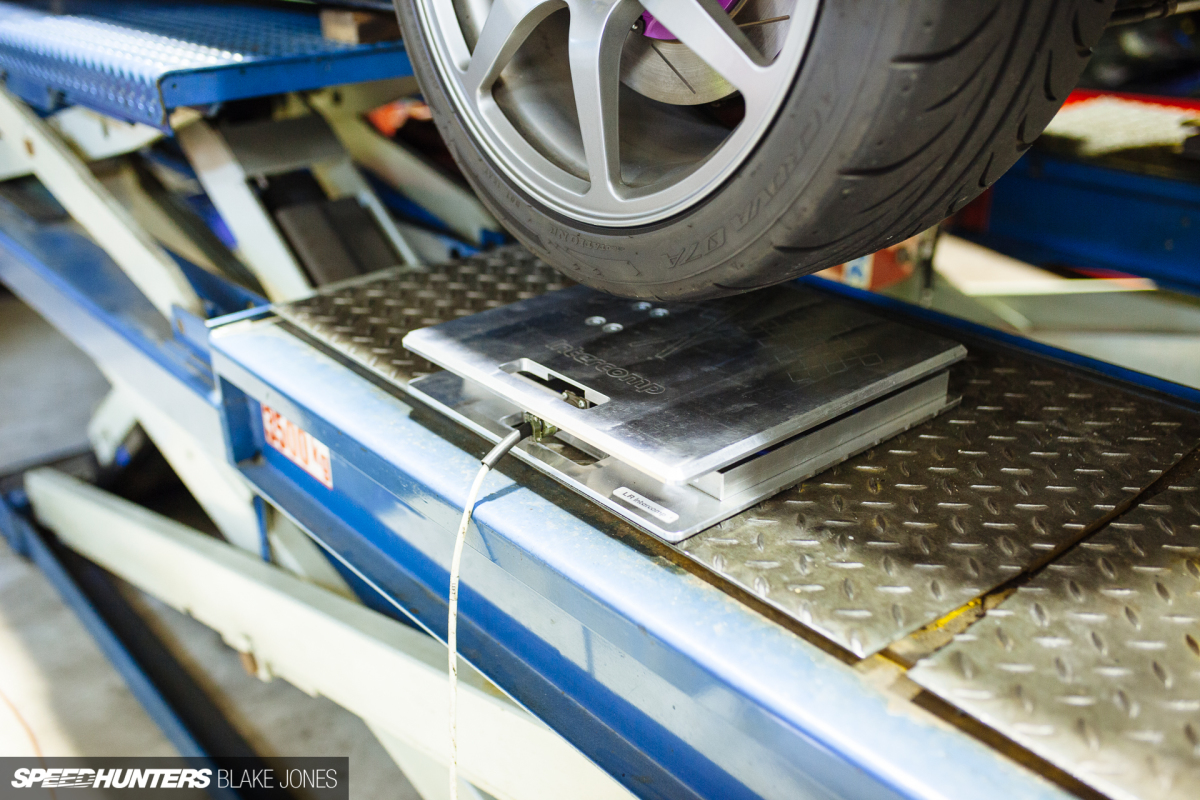
We also did a corner balance and I was able to check the overall weight of Project NSX, which I’ll go into in the next build instalment.
Final Impressions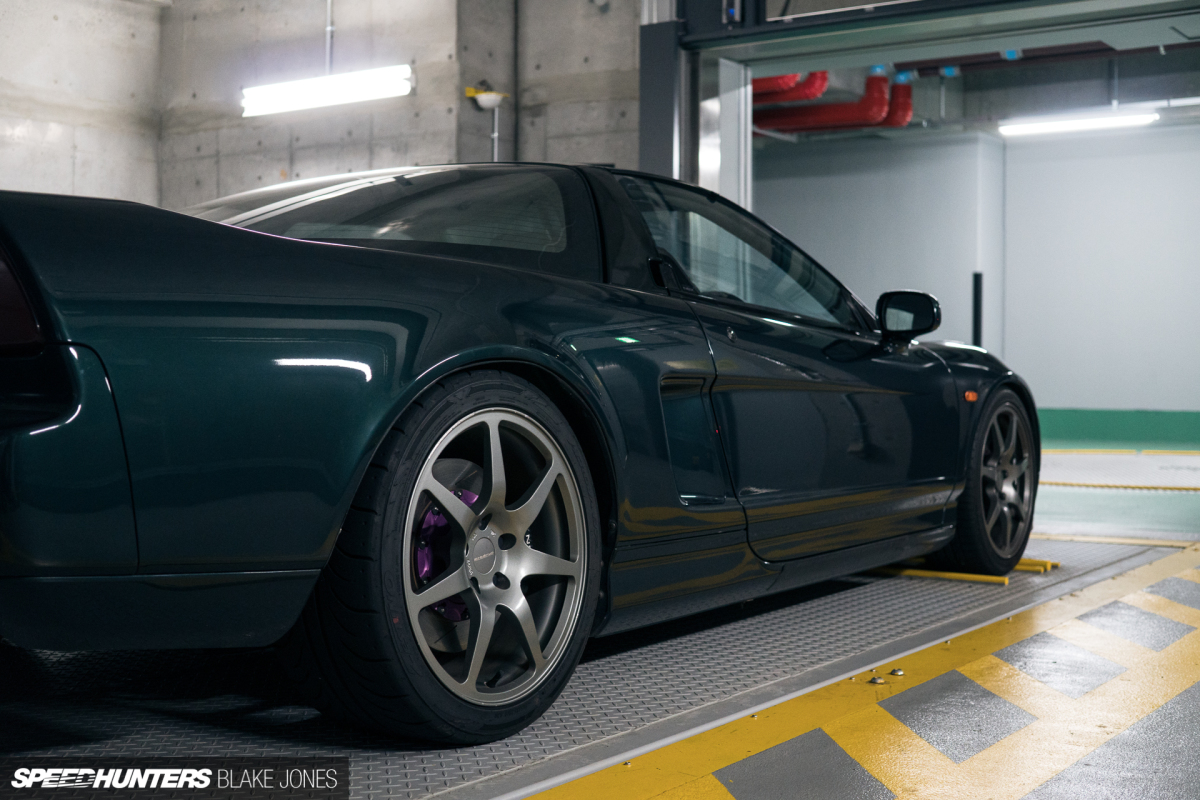
We all know that a dose of low can really bring out the best in a car’s looks, and I really think Project NSX finally looks like a bonafide supercar with that fender gap all but gone.
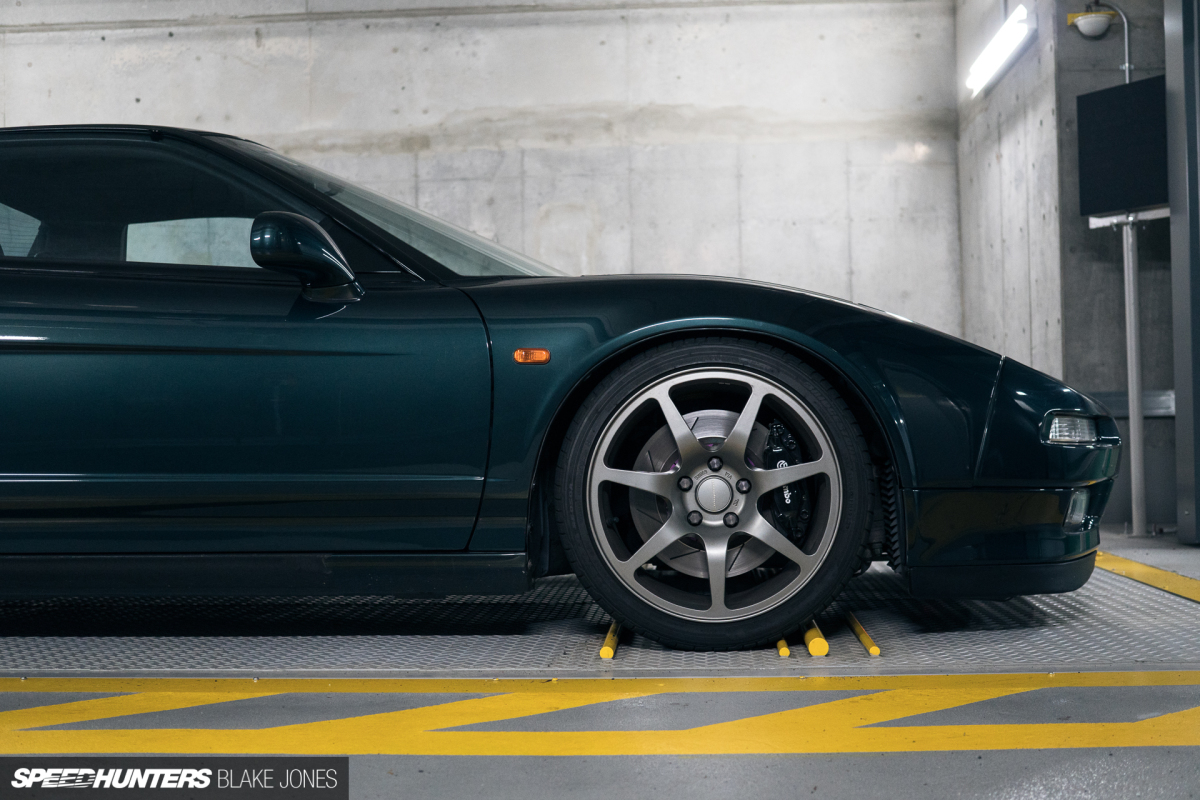
Aesthetically, I think the height is pretty much spot-on. It’s had the effect of making the wheels look larger, and has further convinced me that going down a size in diameter would be ideal for the look I want. The only risk is that 16-inch front wheels may not clear the Brembo calipers.
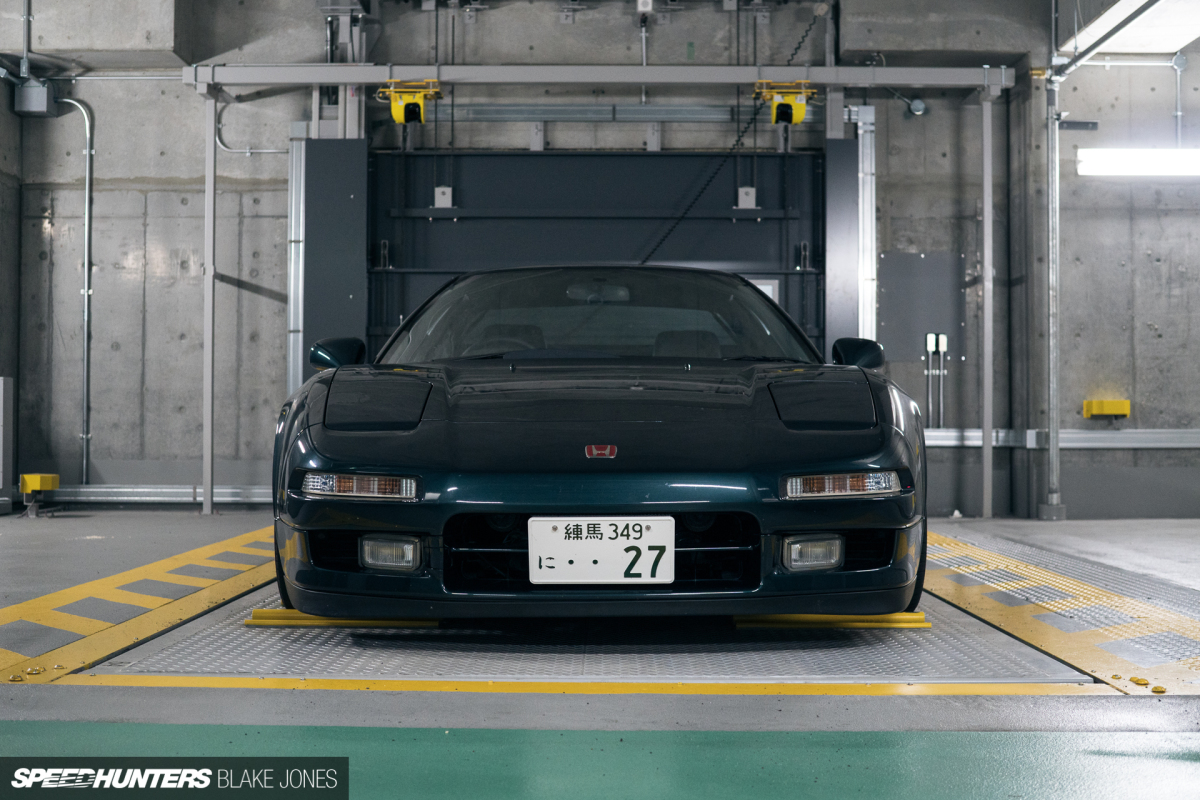
The NSX was a low car already, but with the new height I can literally drive it under the boom gate to access my apartment parking – how convenient.

Having only covered approximately 50kms since the install I will save a more detailed review for a later story. Suffice to say, body roll is barely noticeable on the road and the ride – although firm – actually has a silkiness to it that the stock suspension lacked.
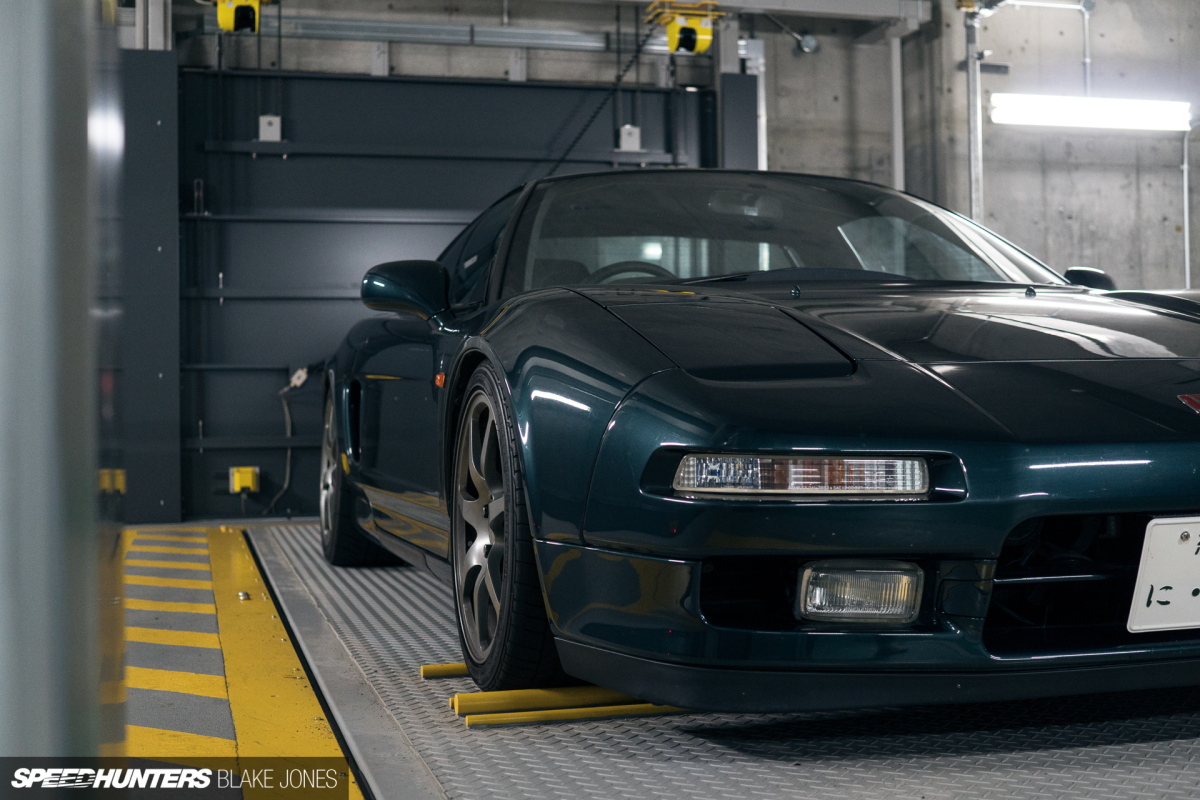
The real test for these Clubsports will of course be on the racetrack. Installing new suspension is only the first step in chassis set-up, and I’m itching to start playing with the adjustability of the coilovers to find a setup that suits my driving style best.
I still owe you a look at some of the other performance parts fitted in the meantime, so hold tight for next month’s update.
Blake Jones
Instagram: blaketjones
blake@speedhunters.com
KW Suspensions
KW Suspensions Japan
KW Suspensions US
Hashimoto Corporation
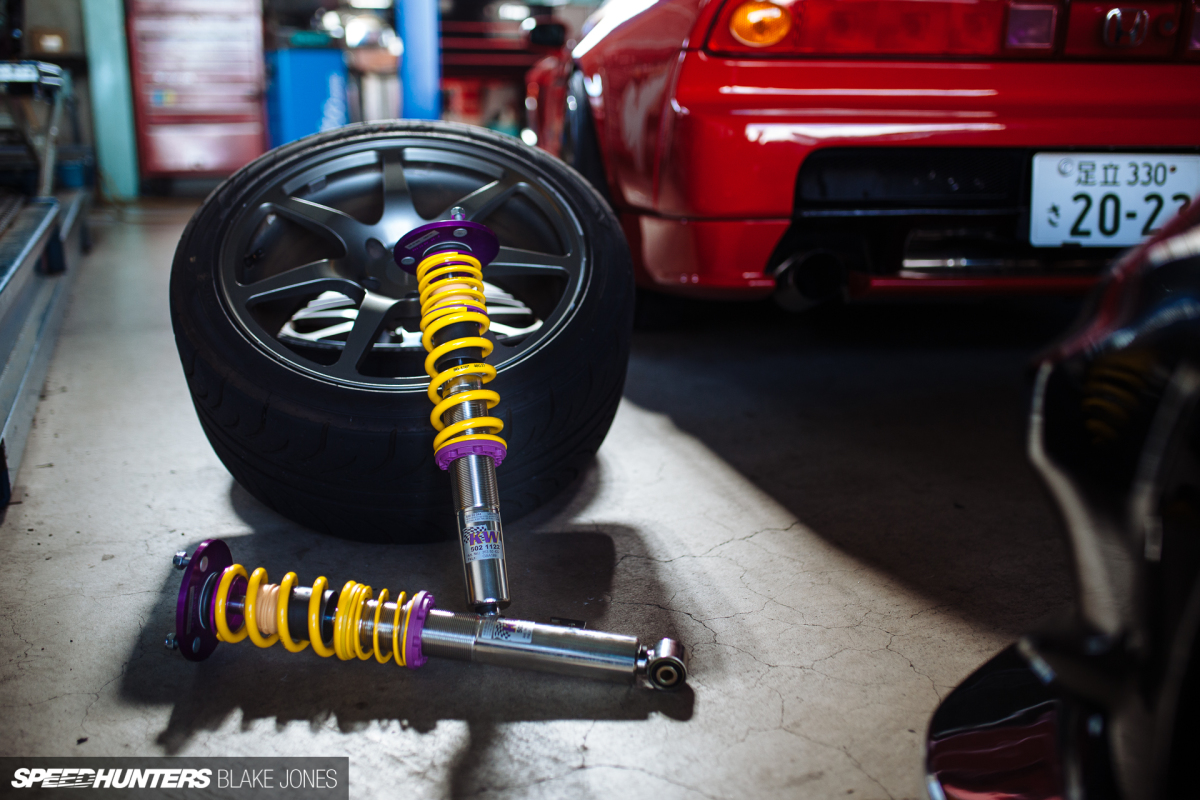
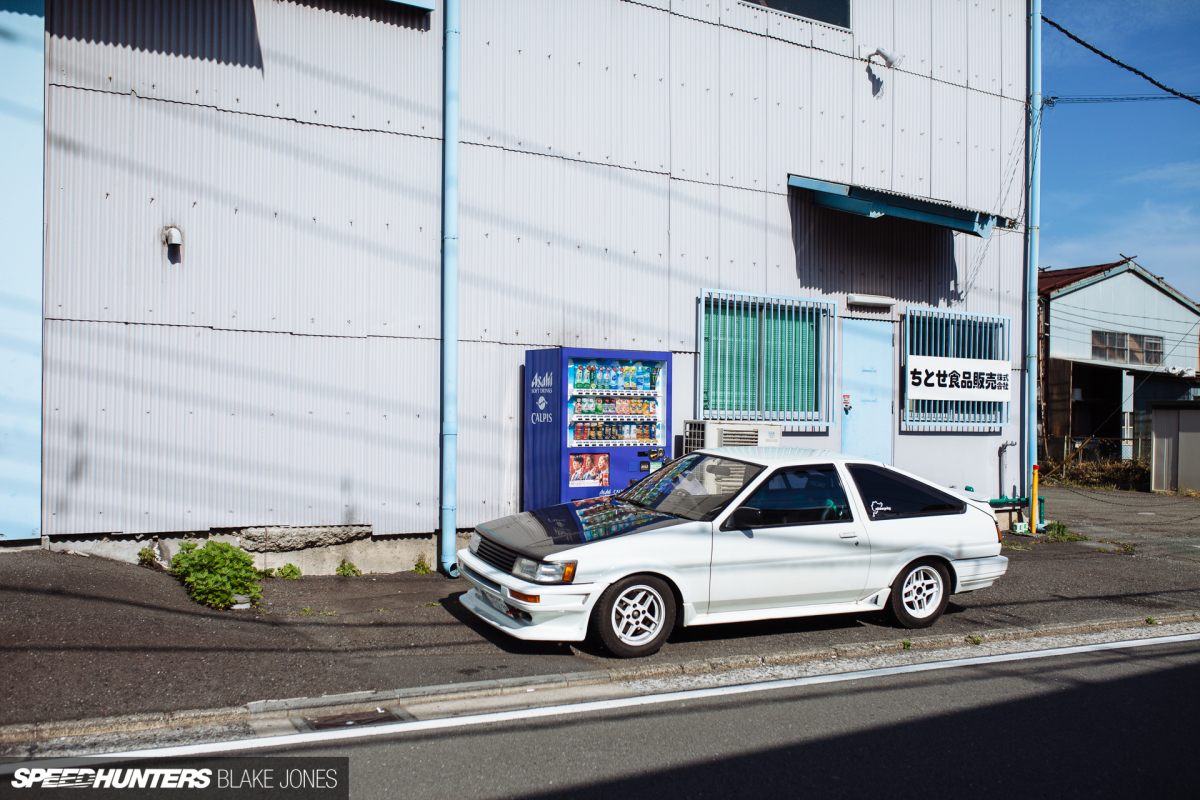
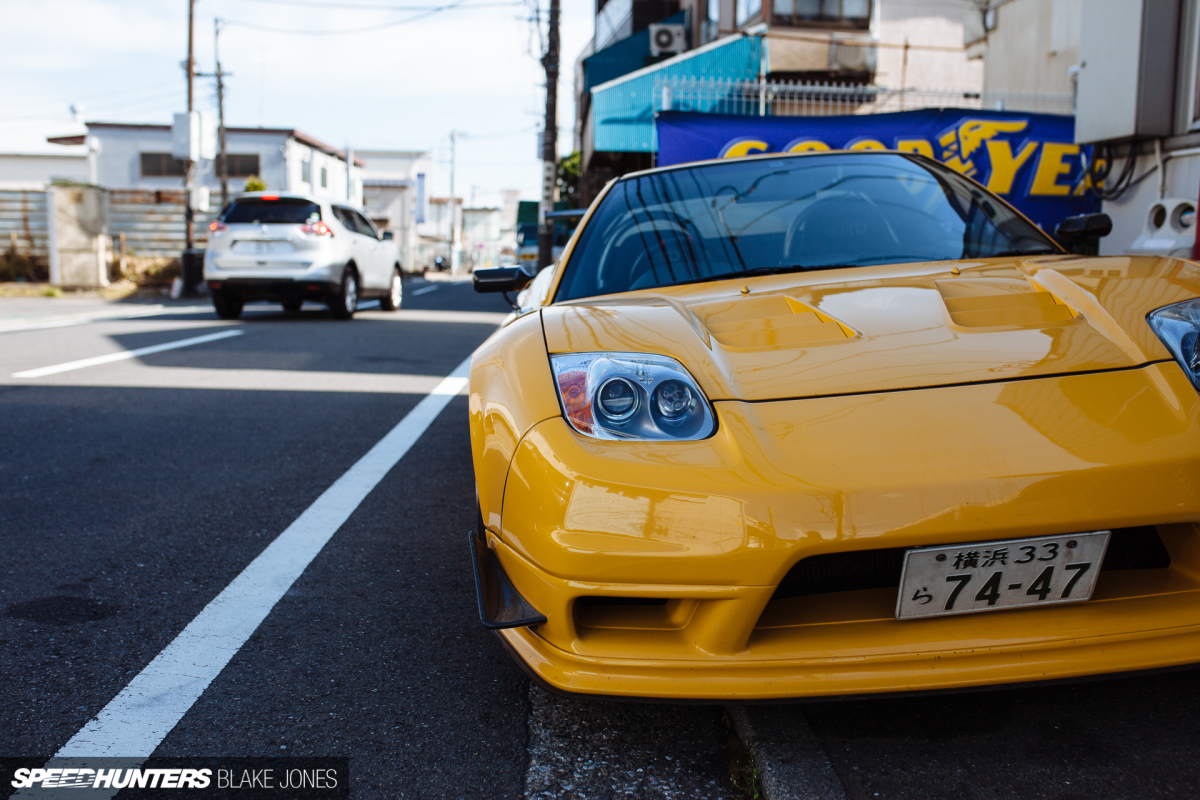
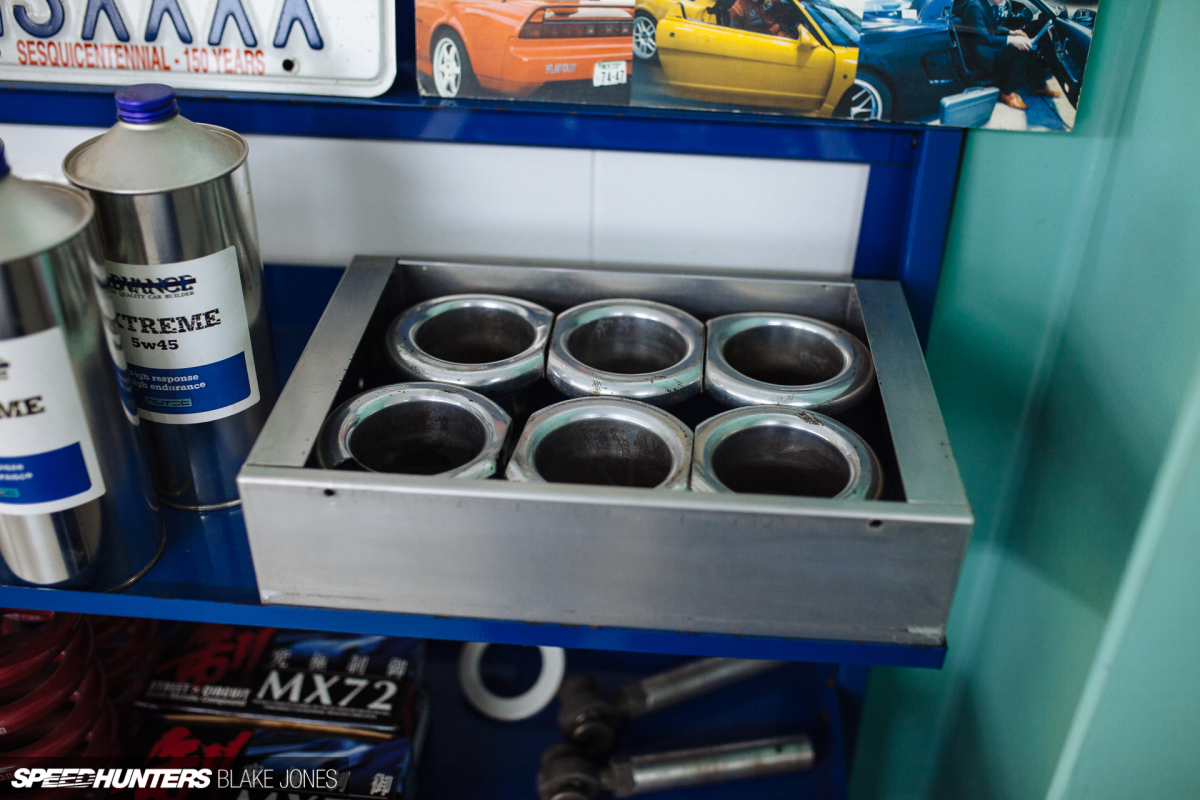
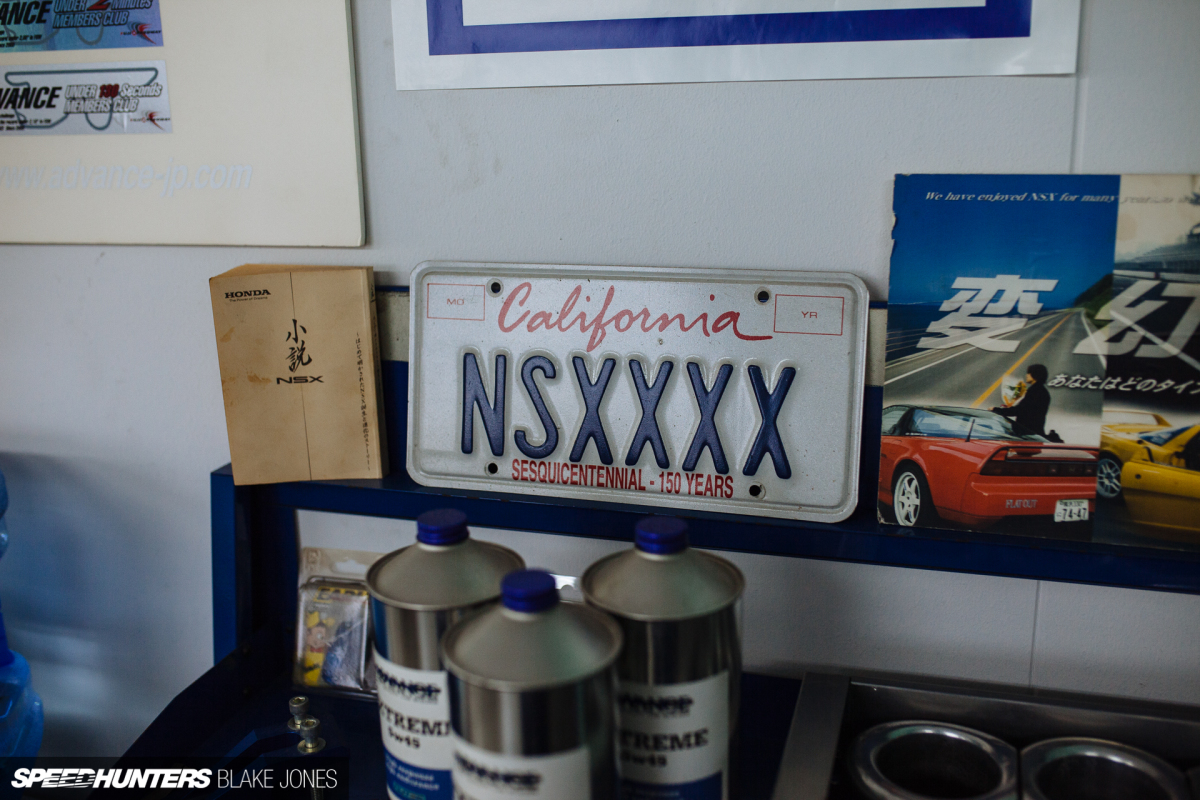
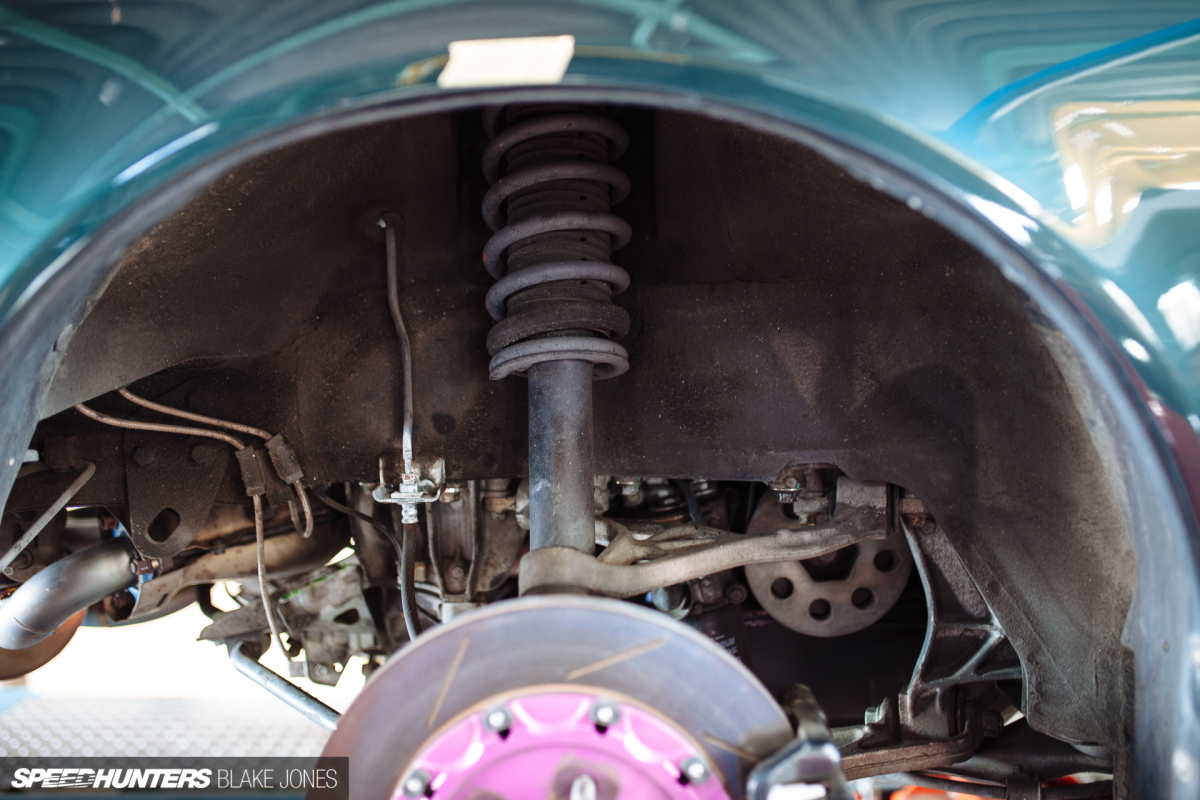
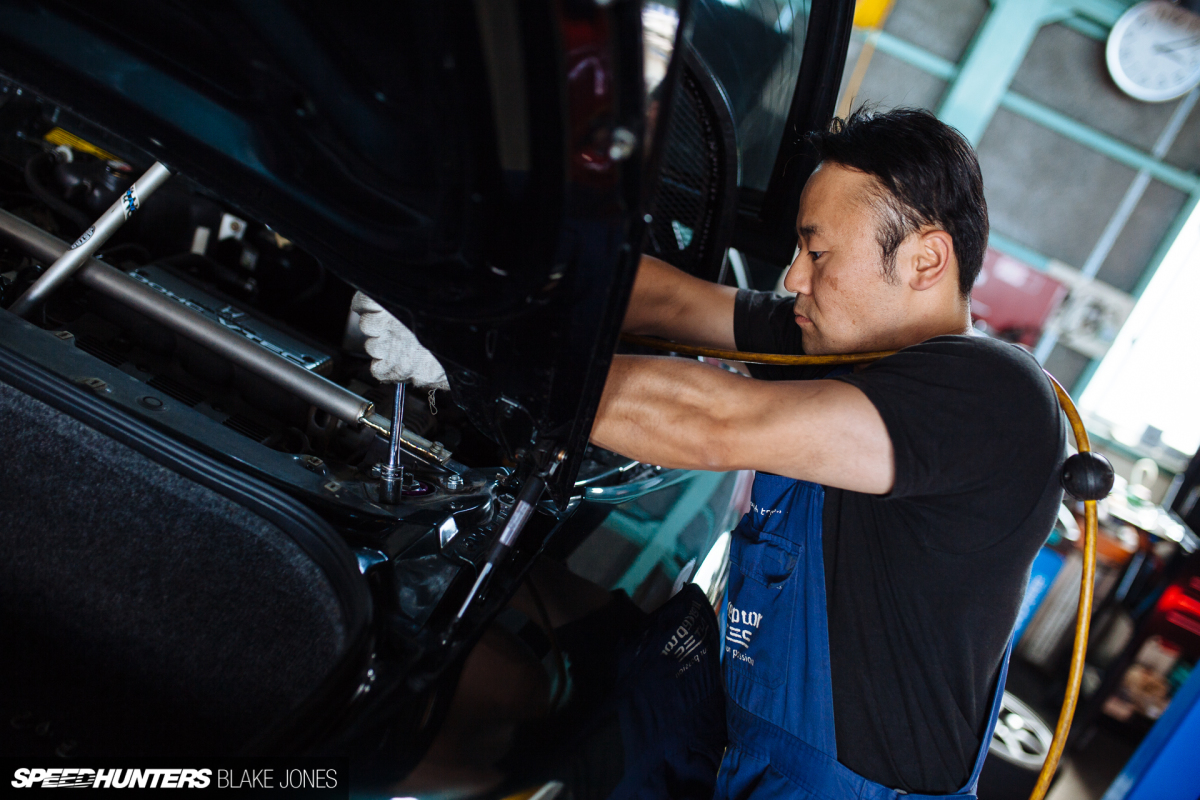
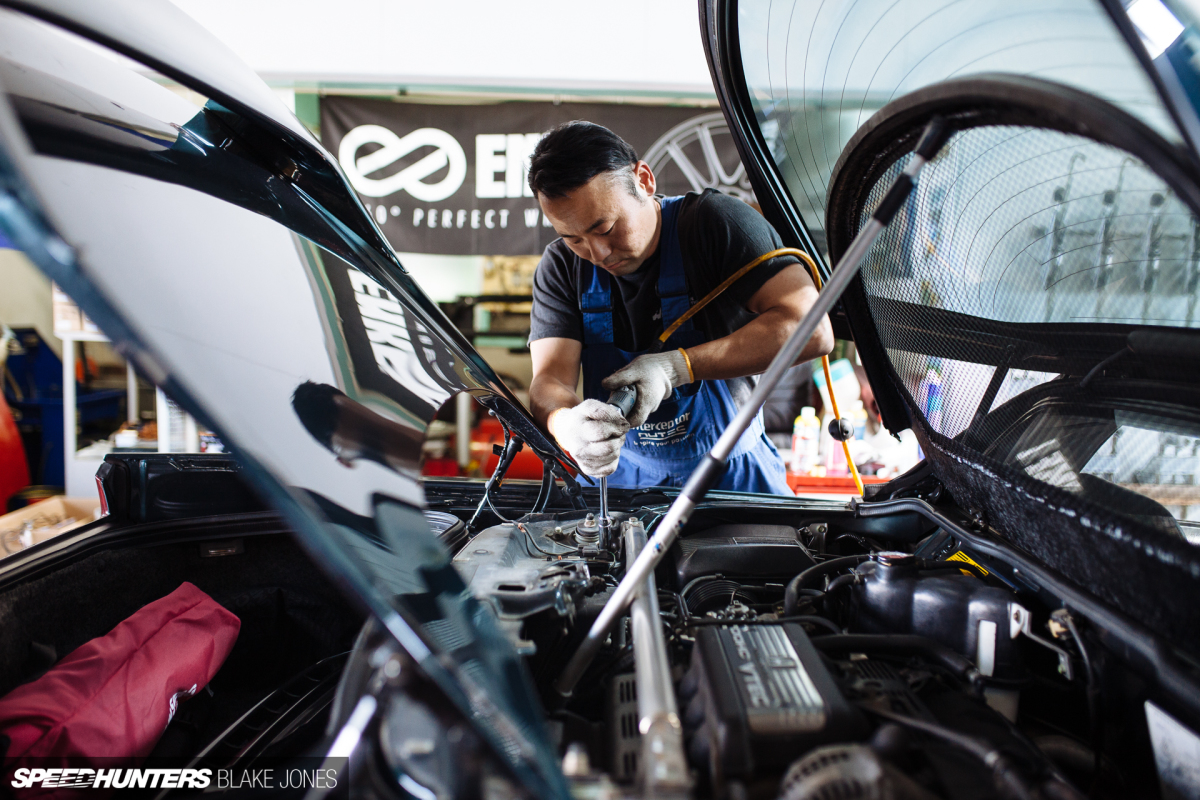
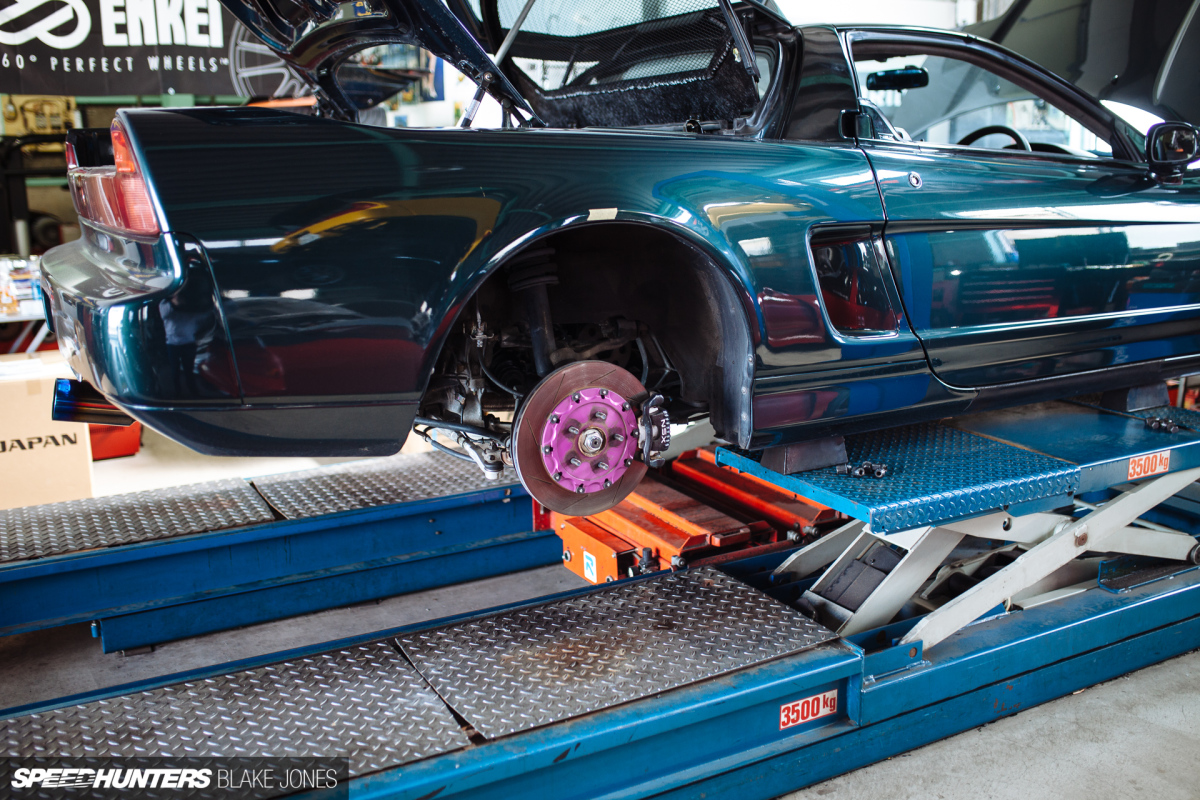
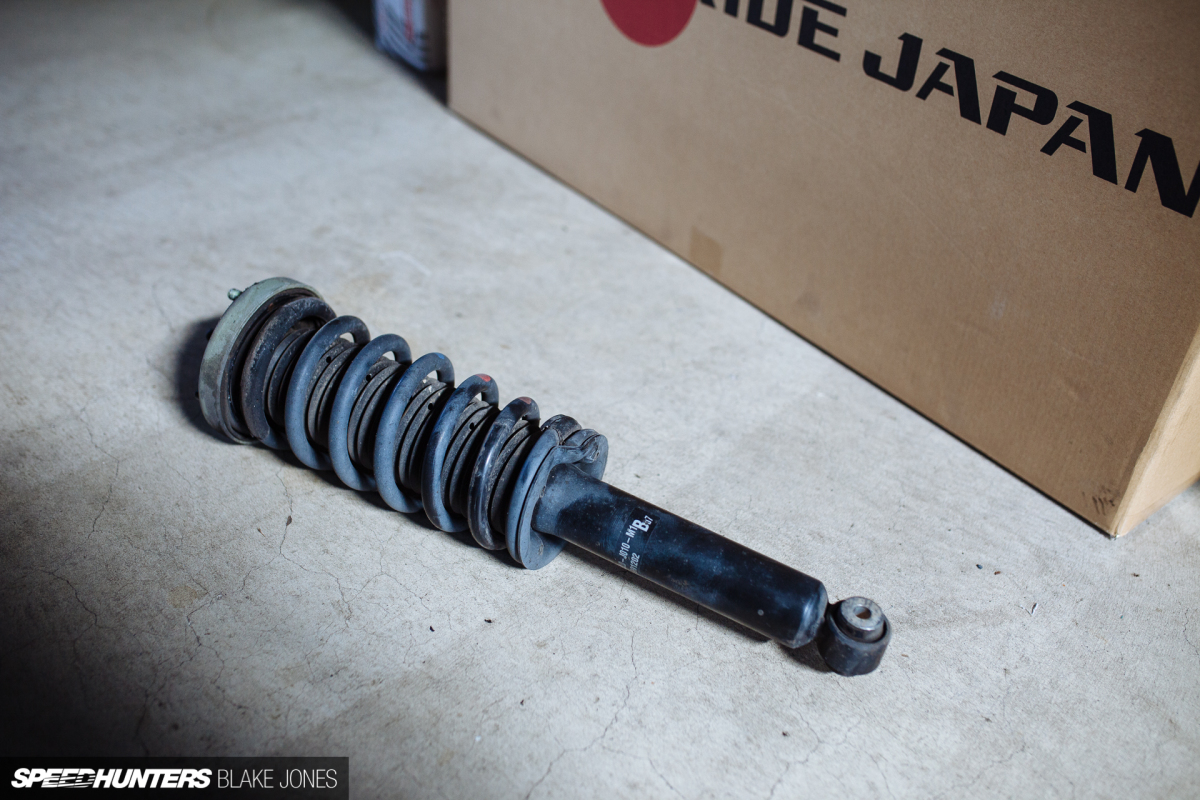
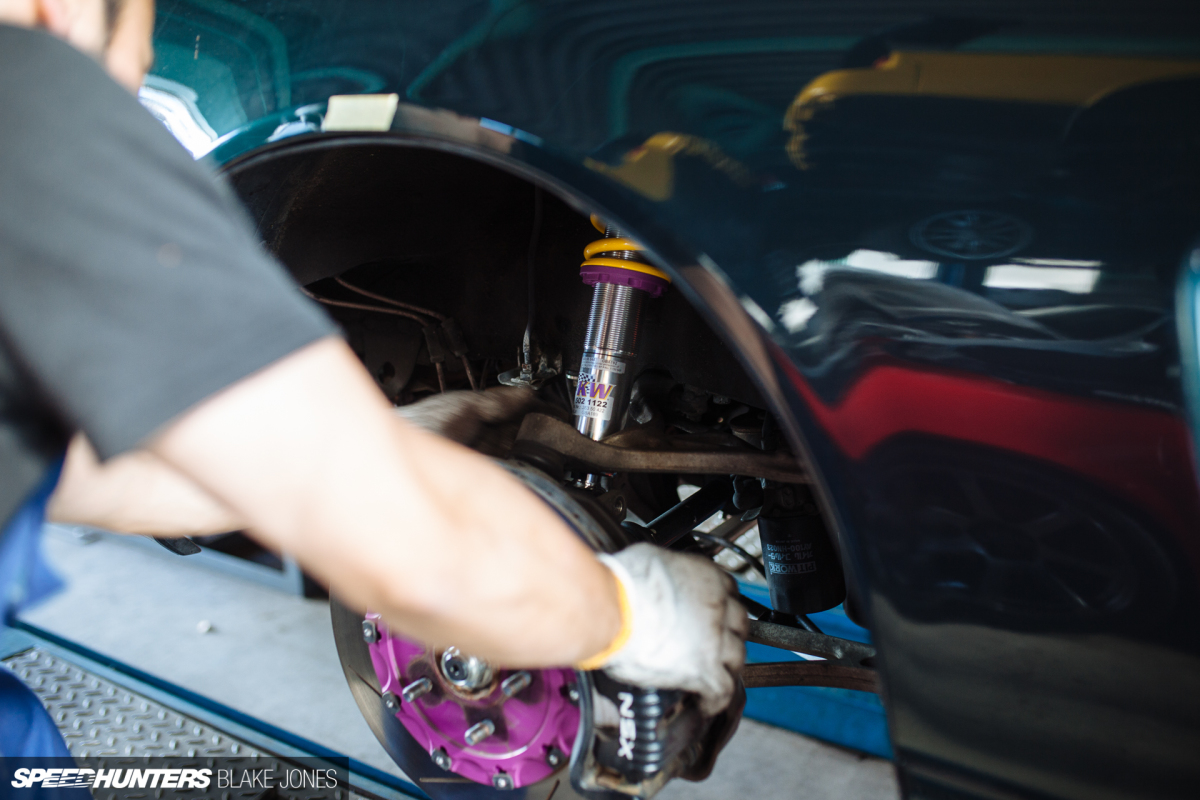
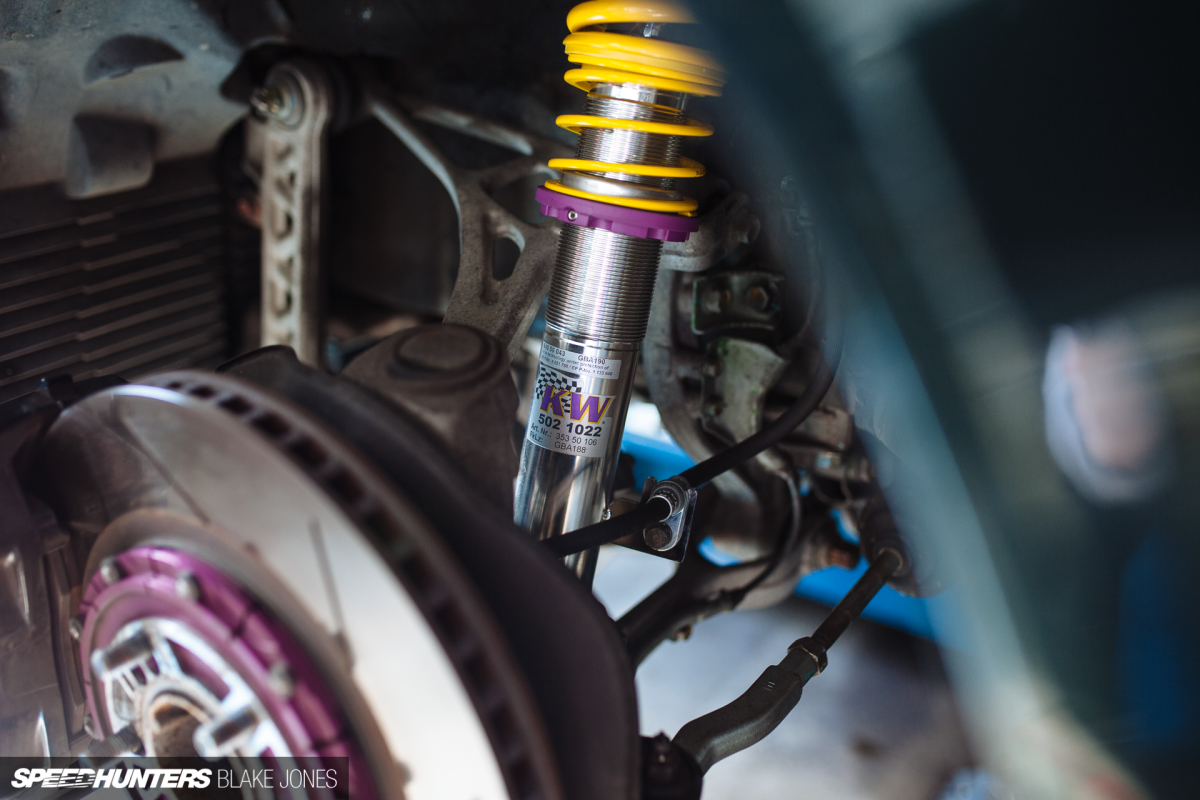
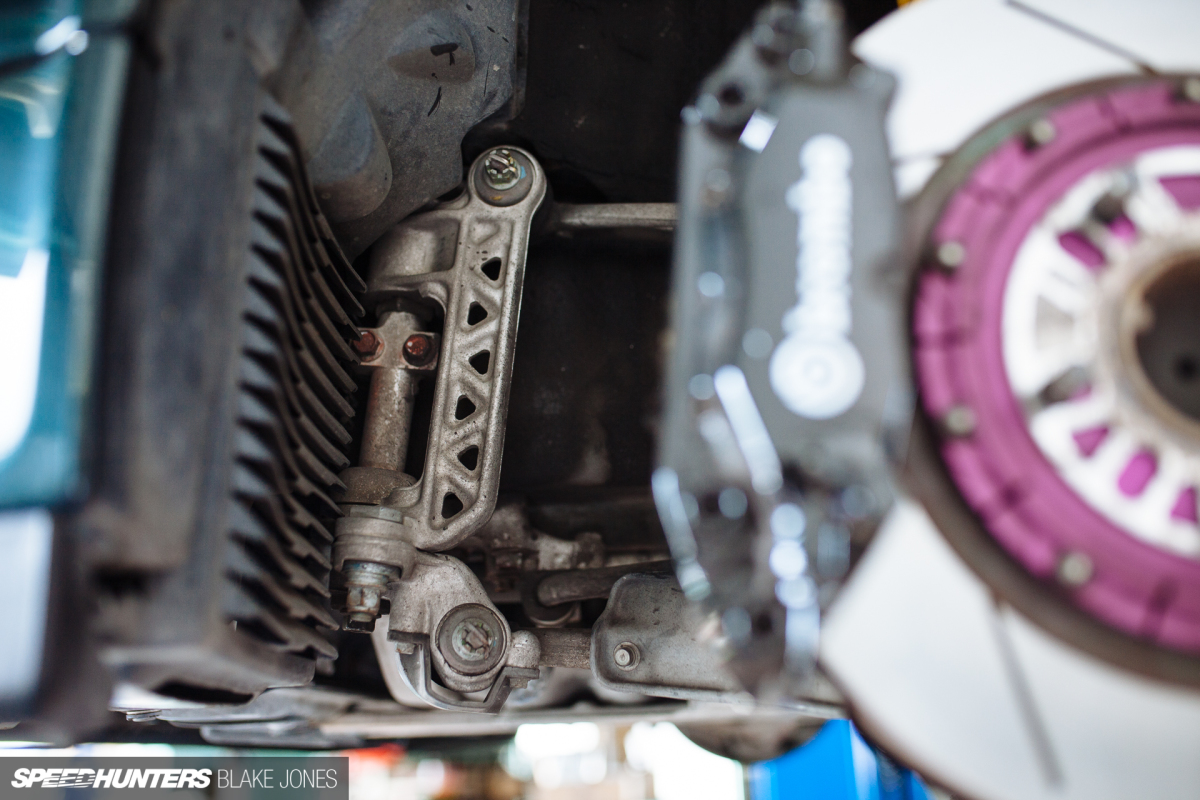
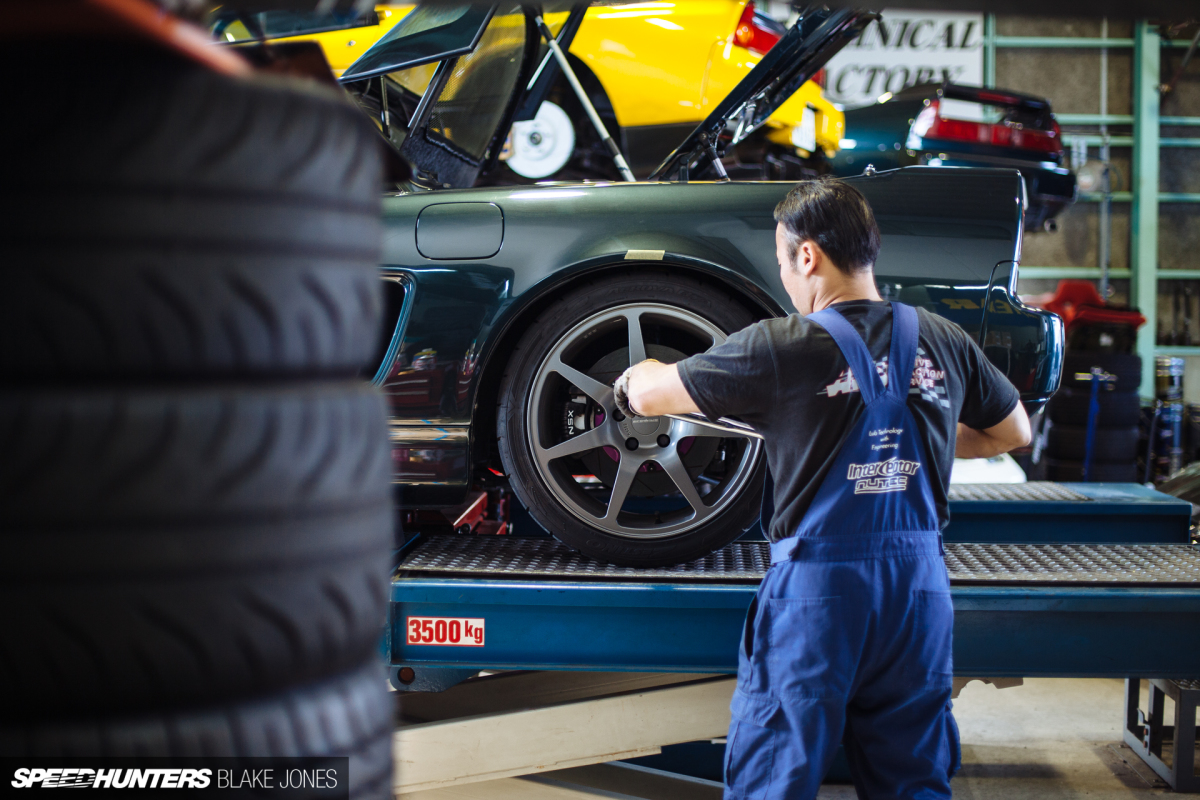
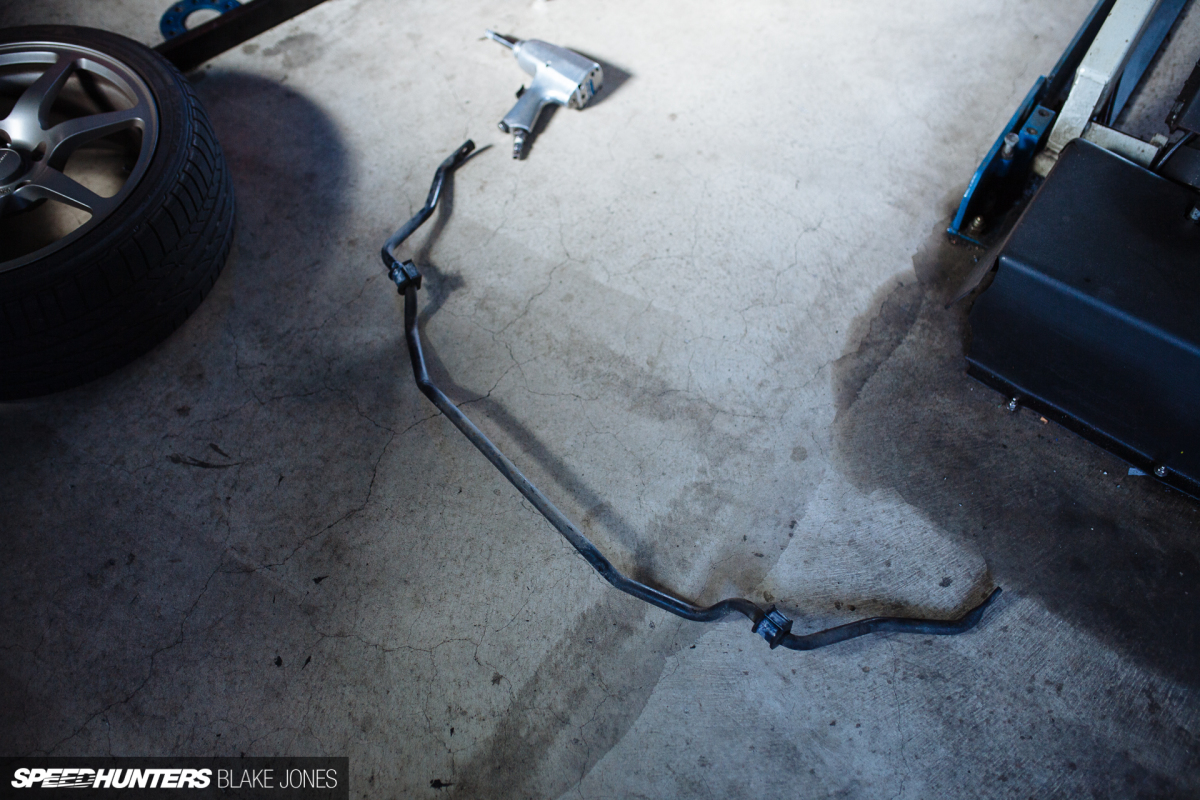
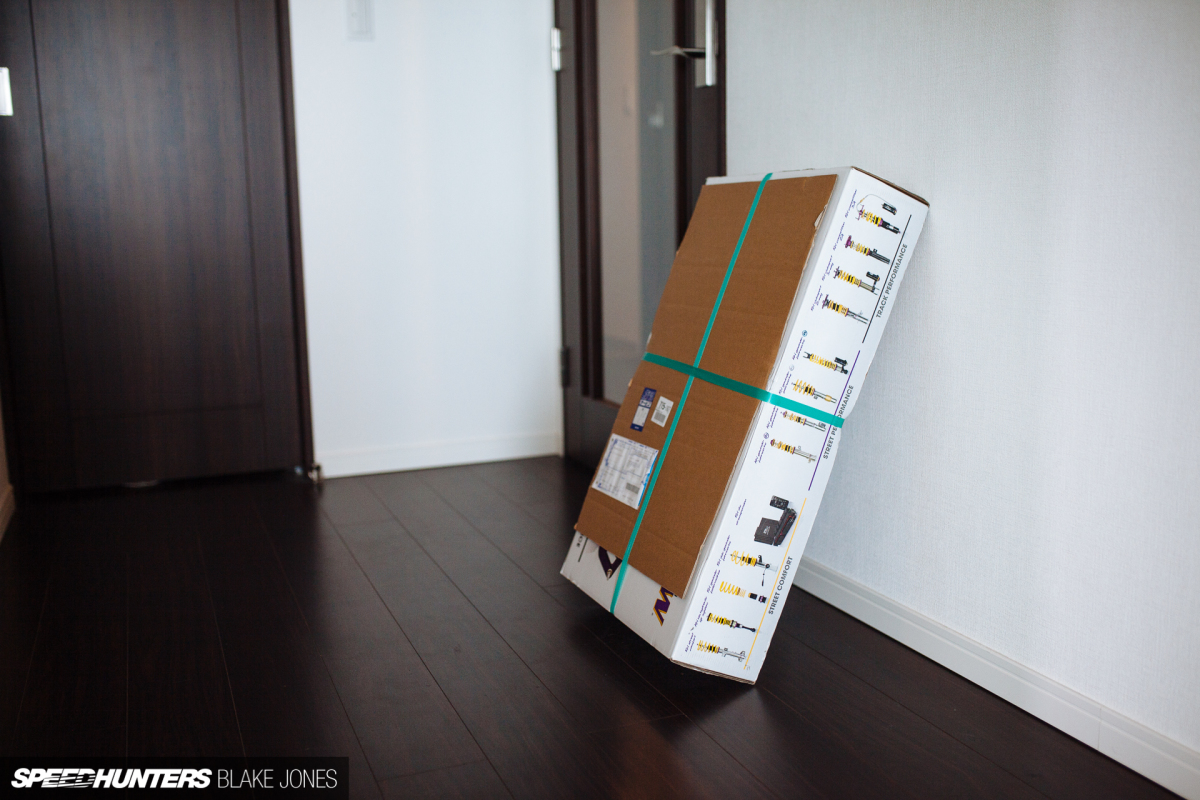
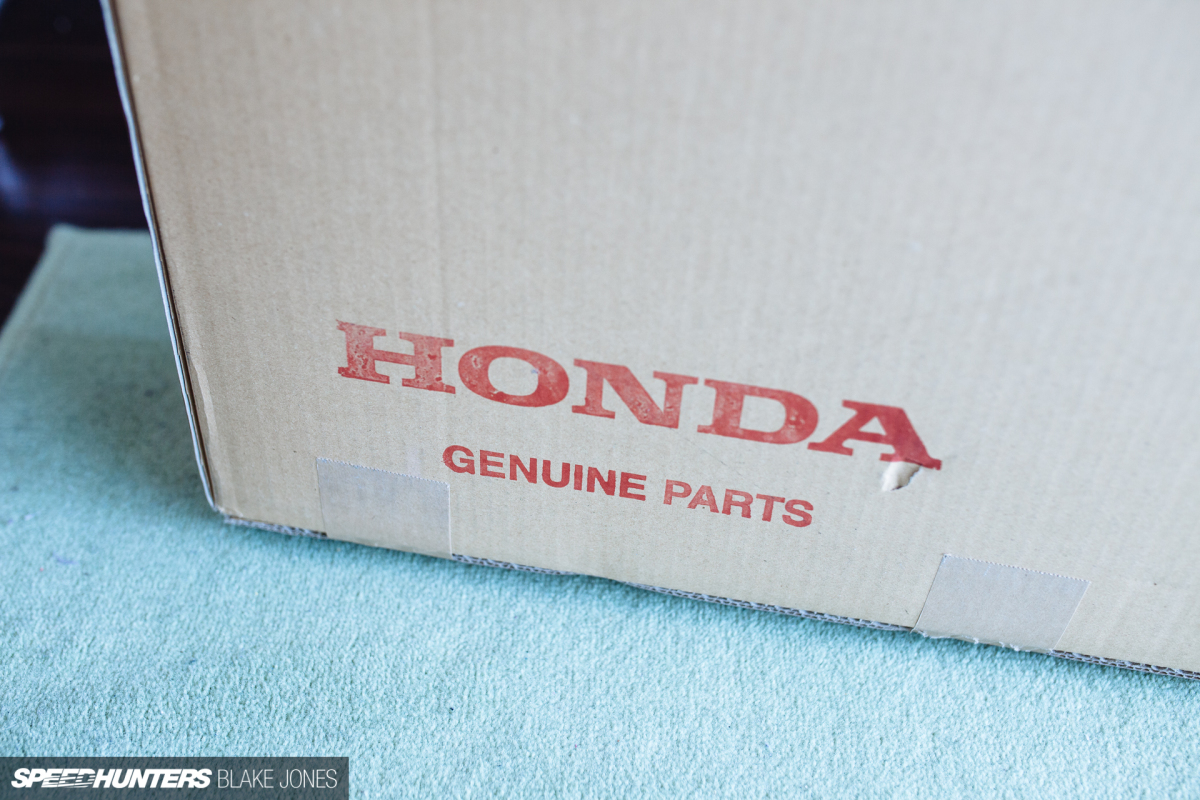
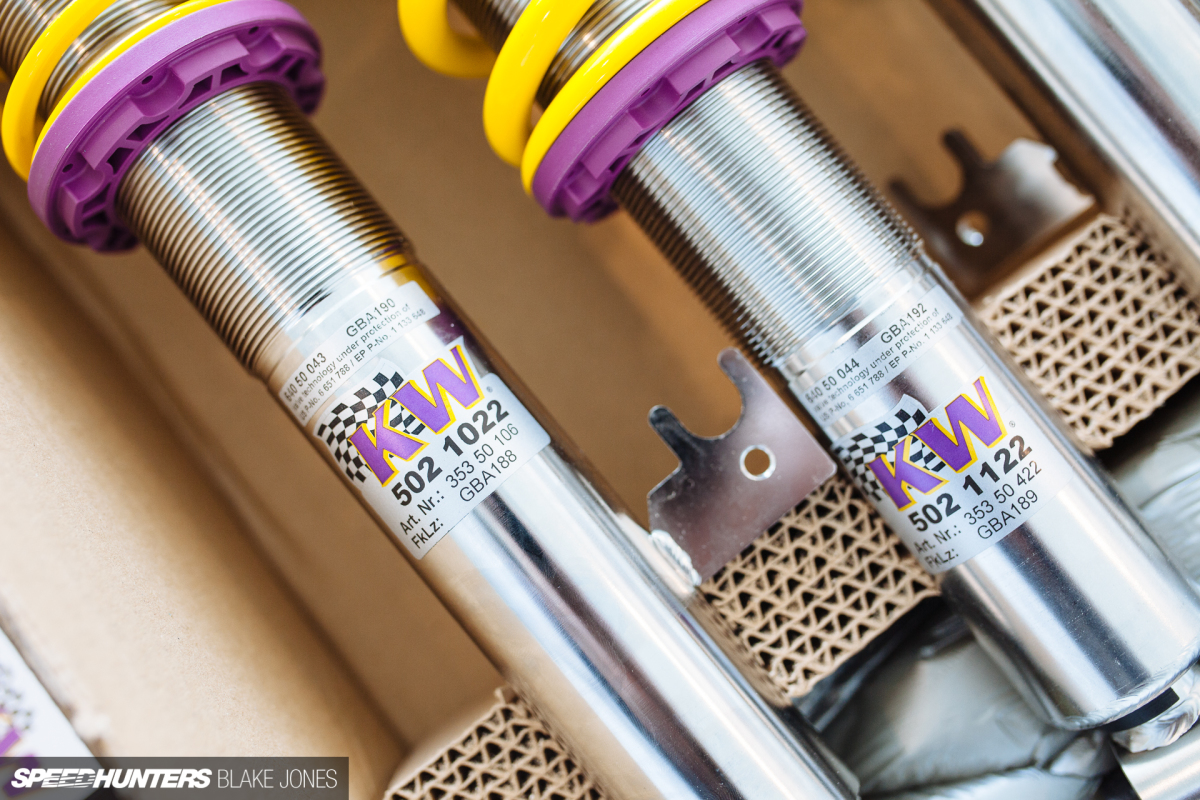
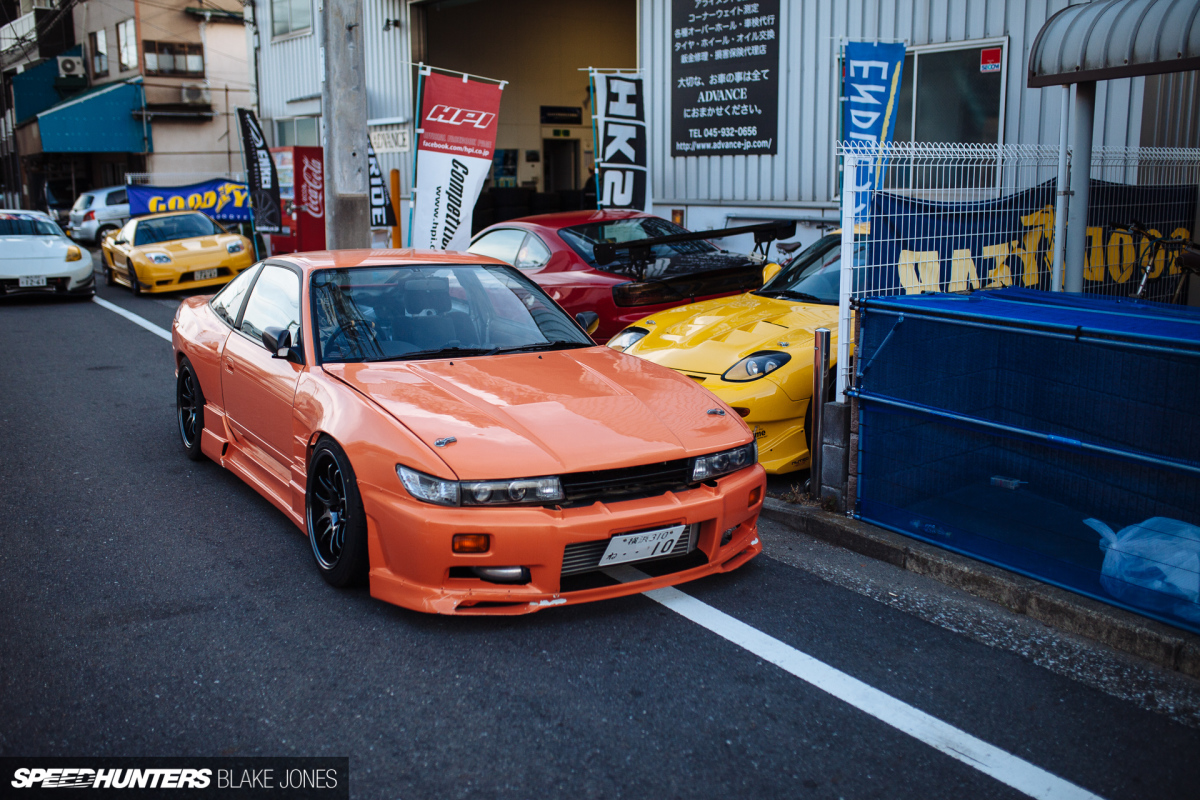
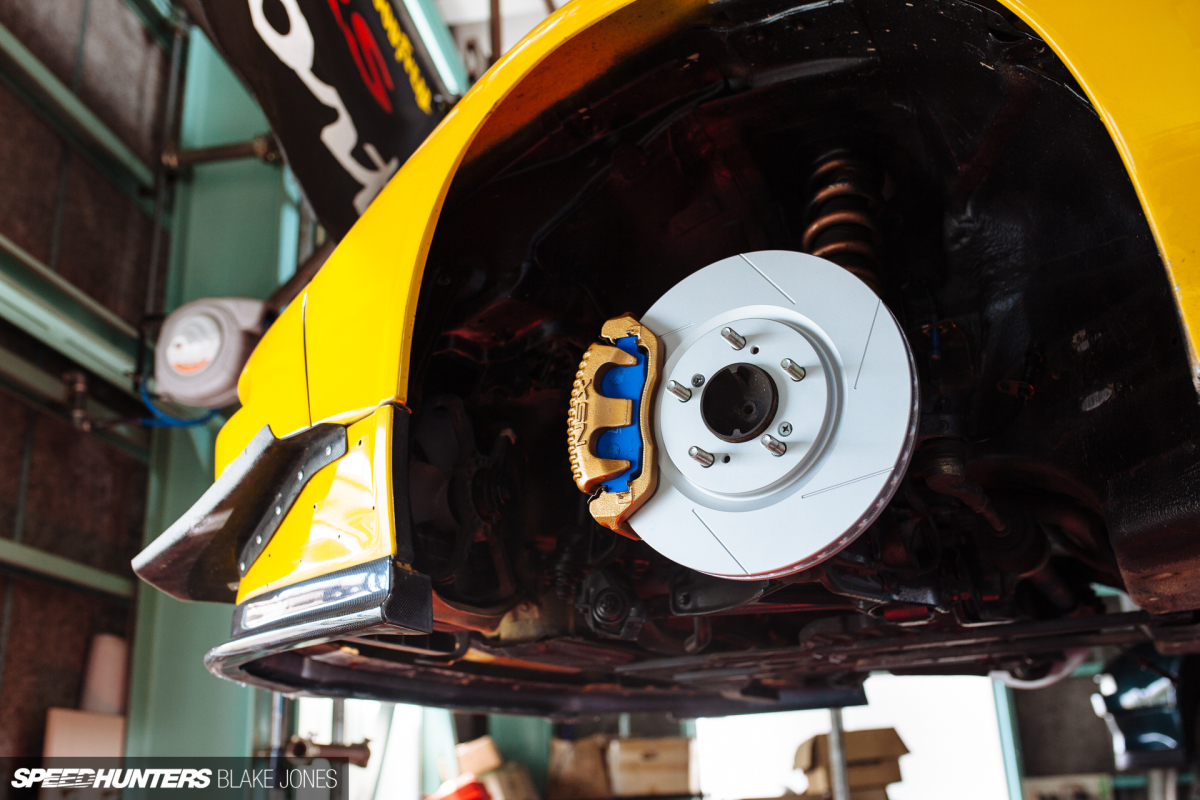
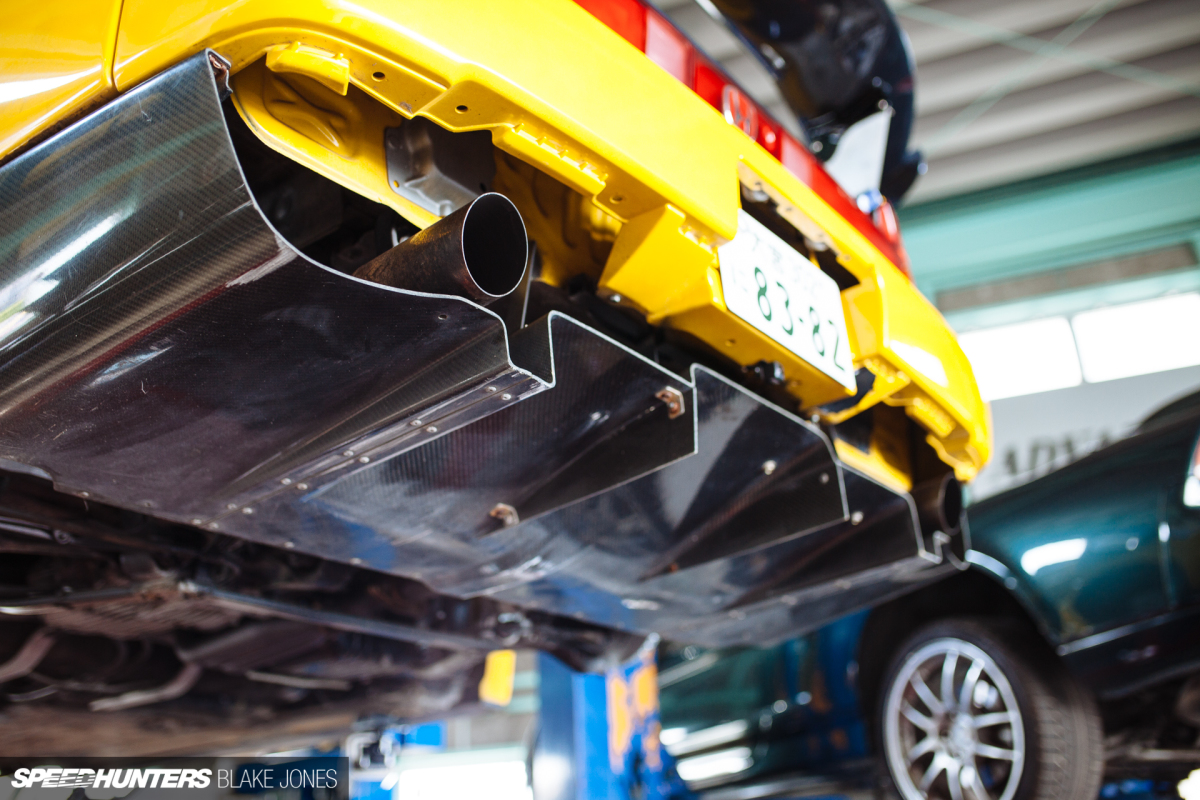
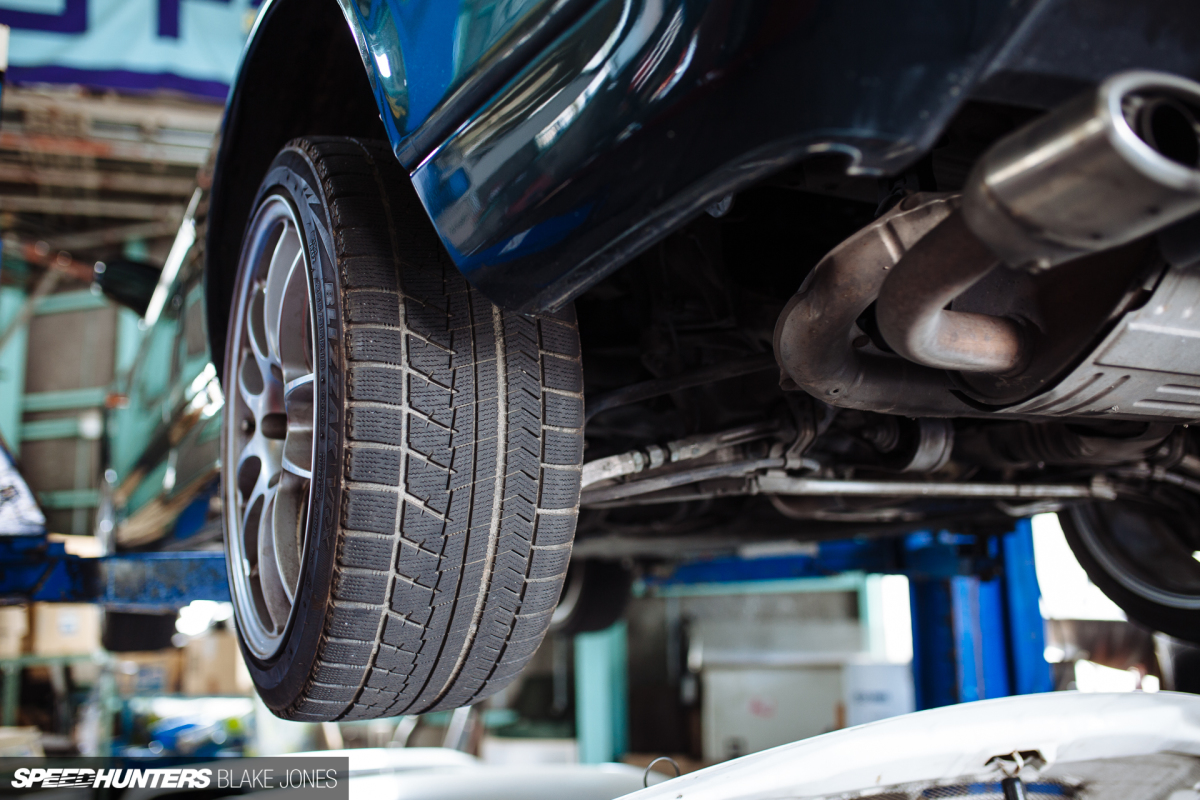
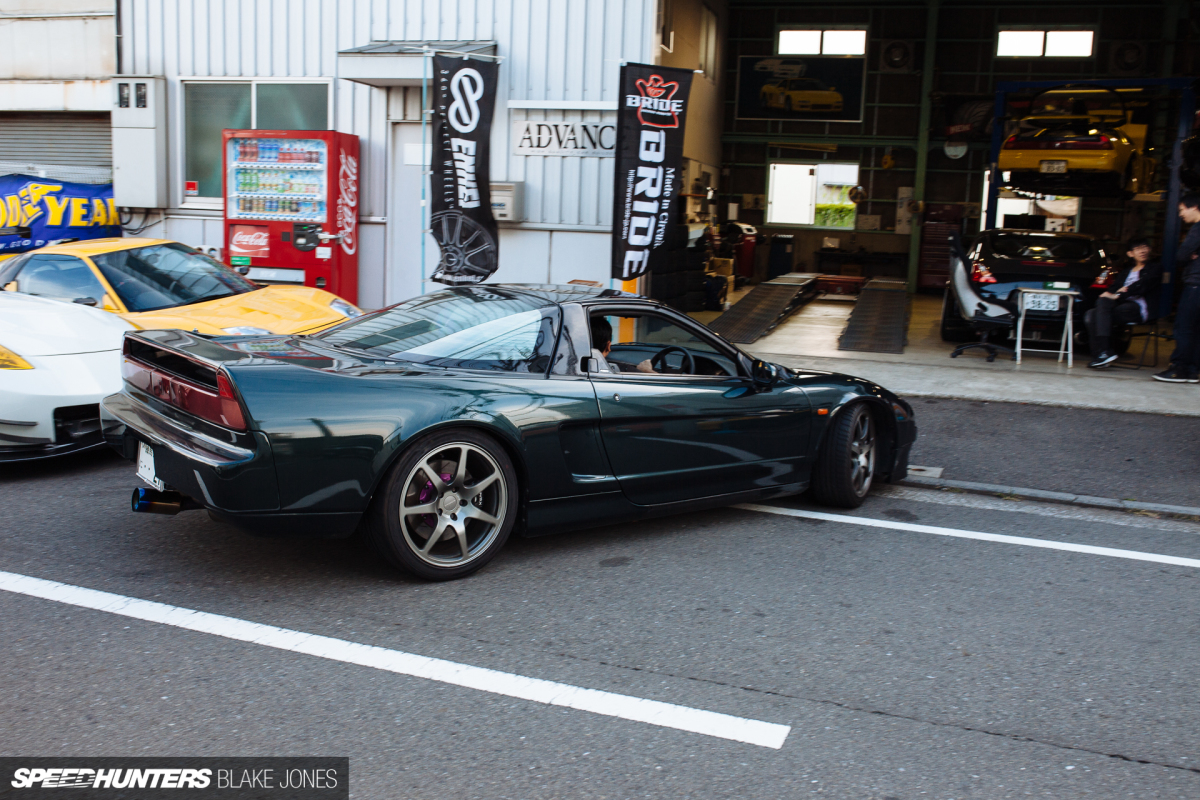


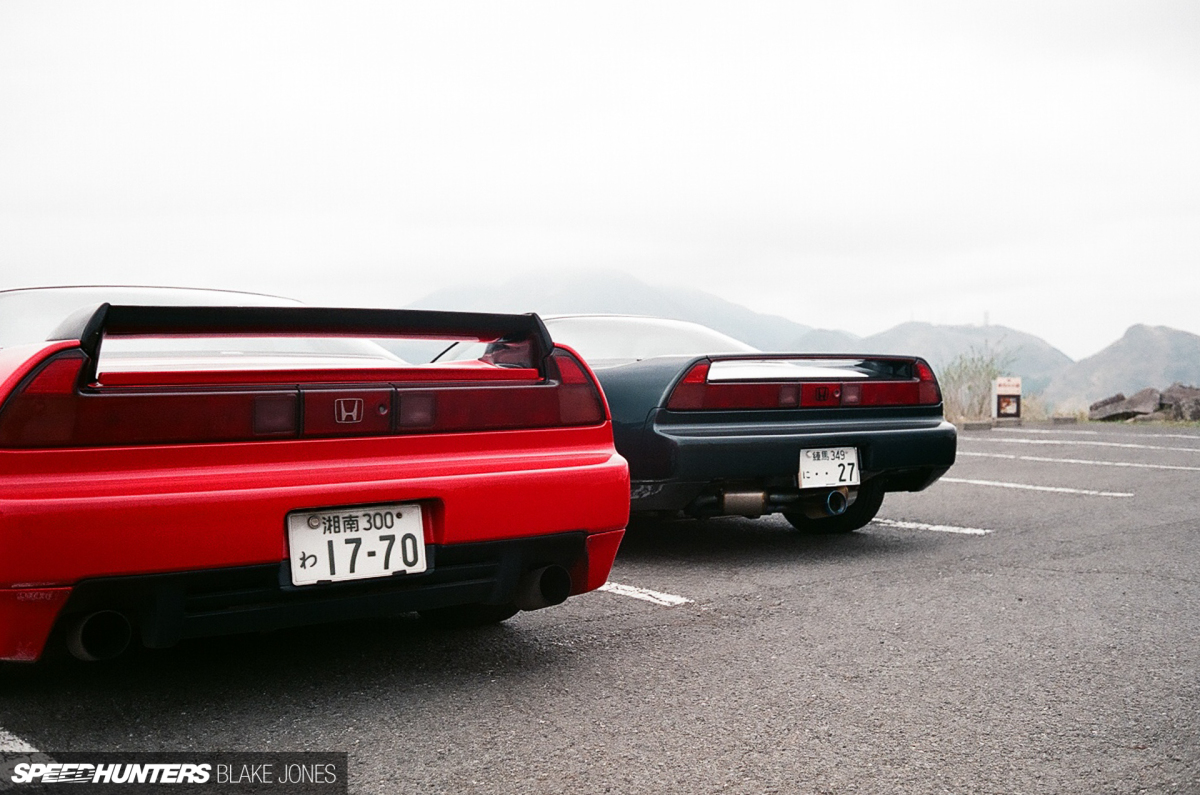
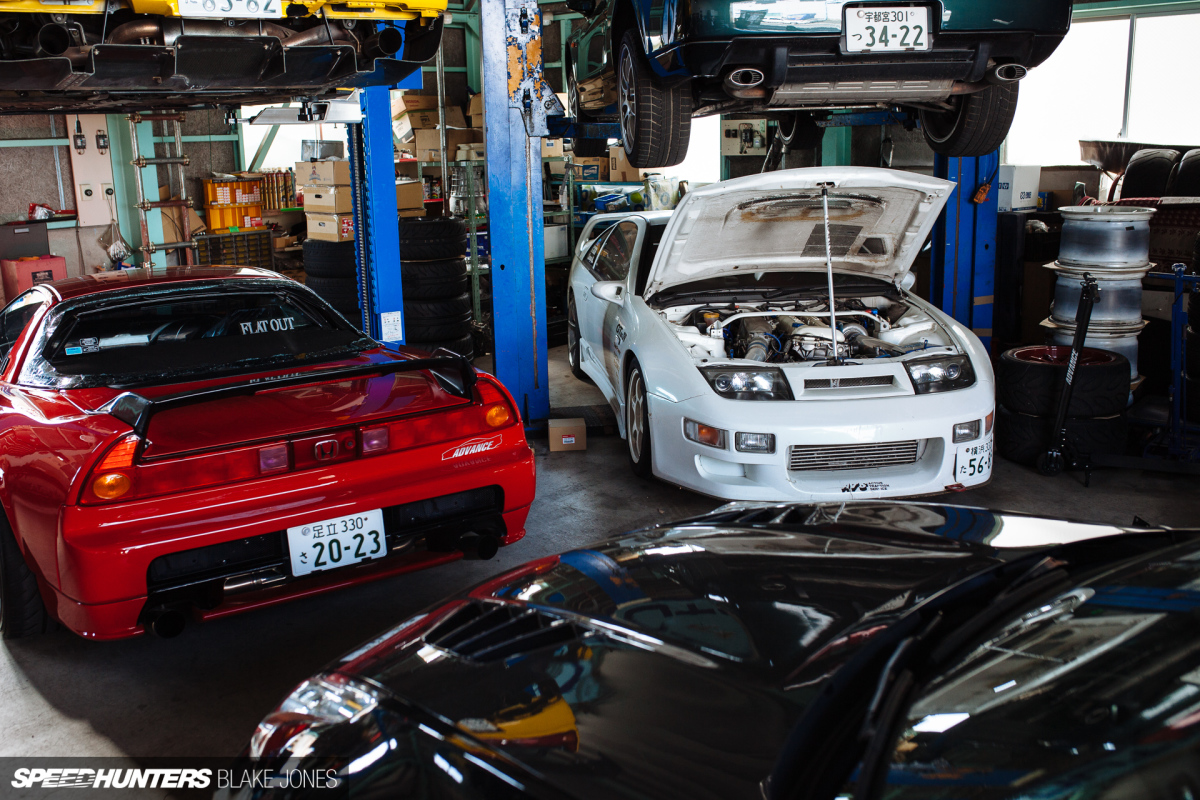
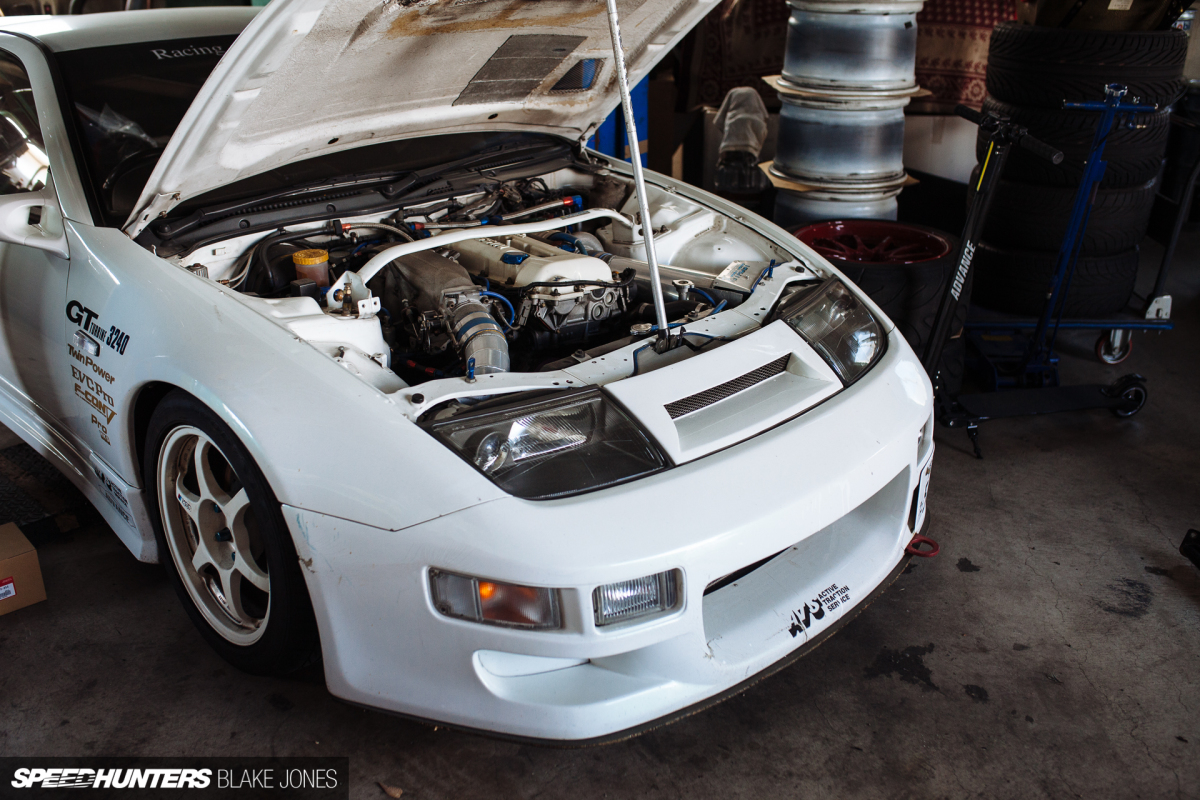
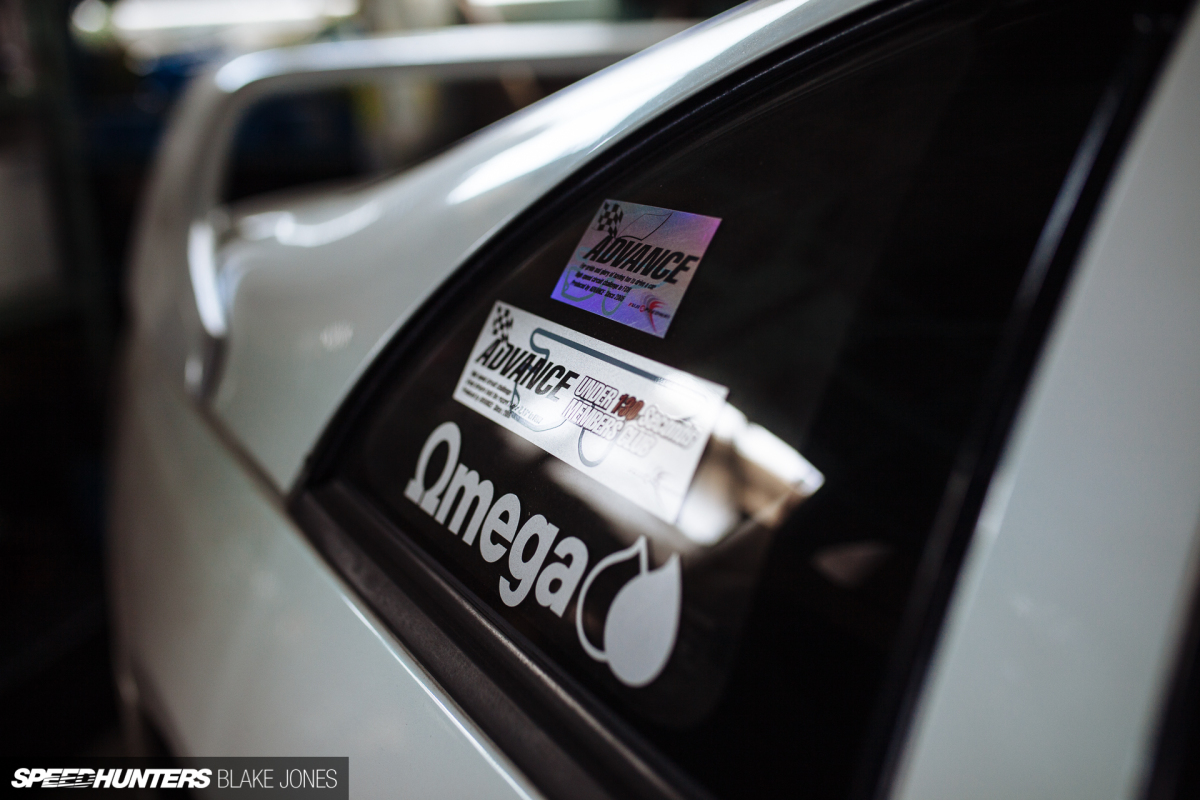
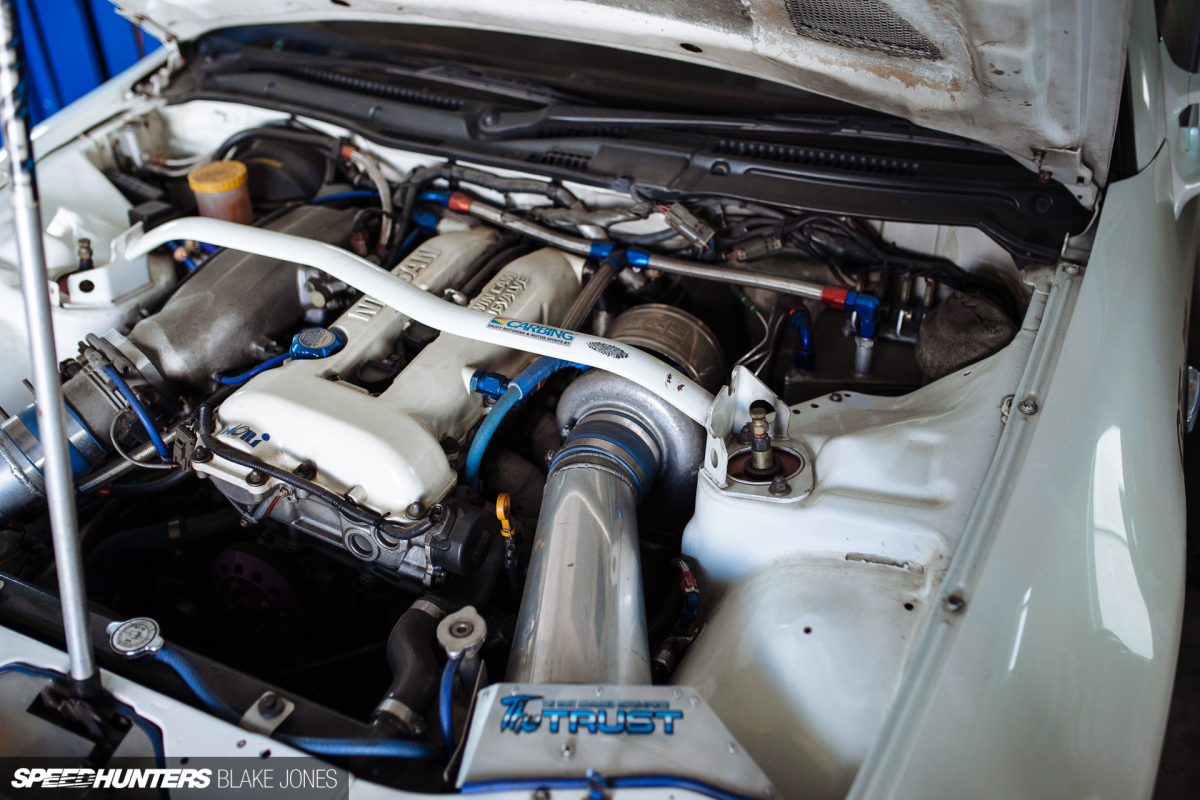
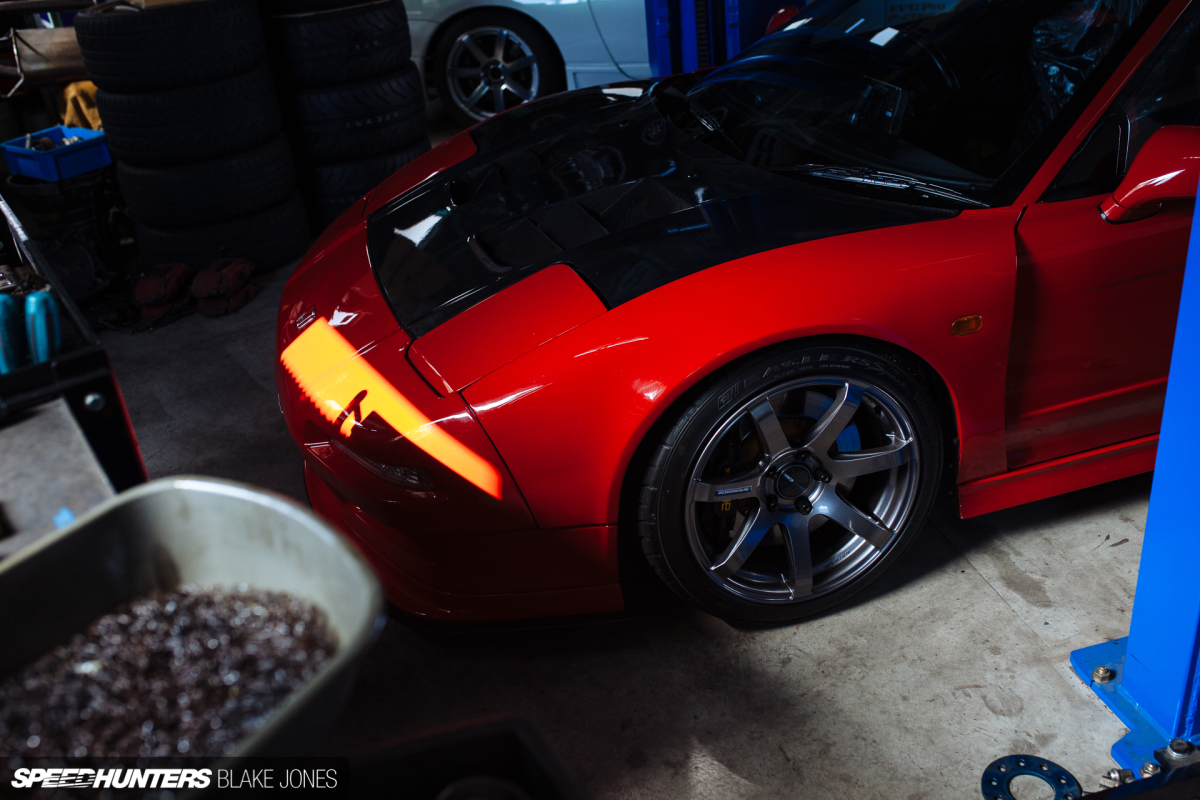
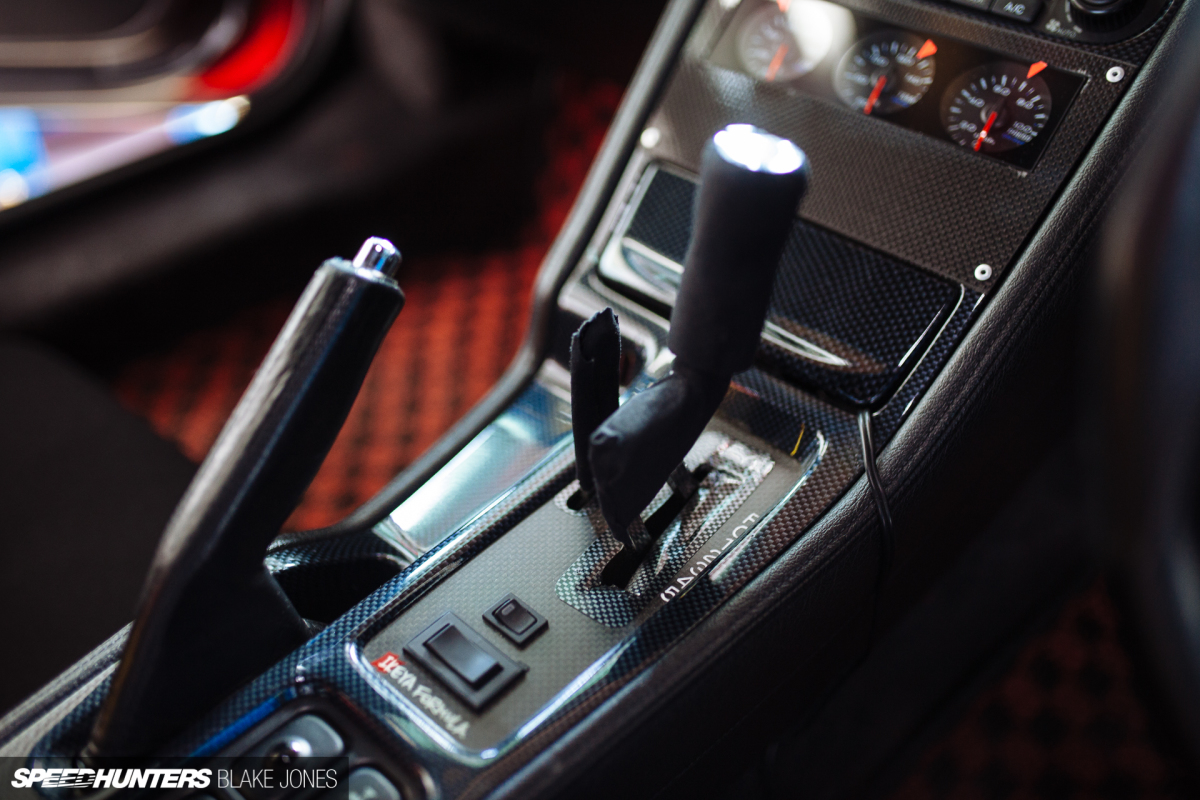
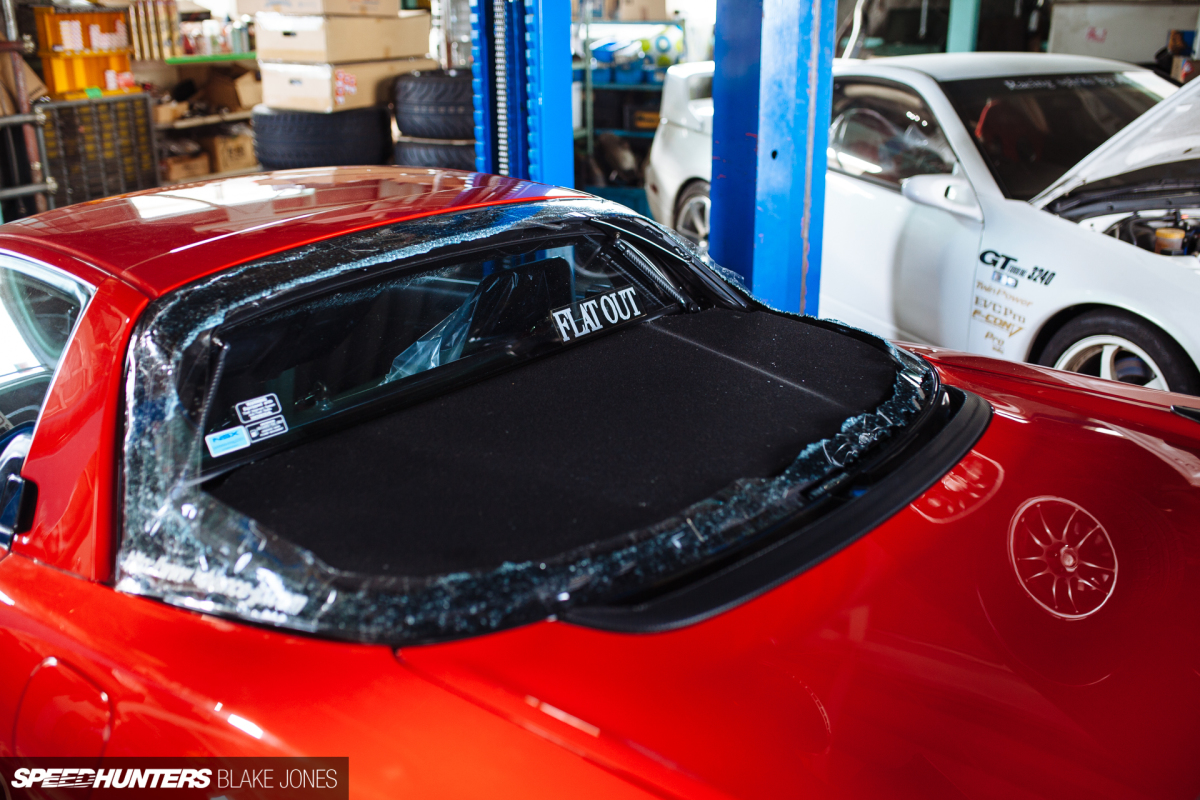
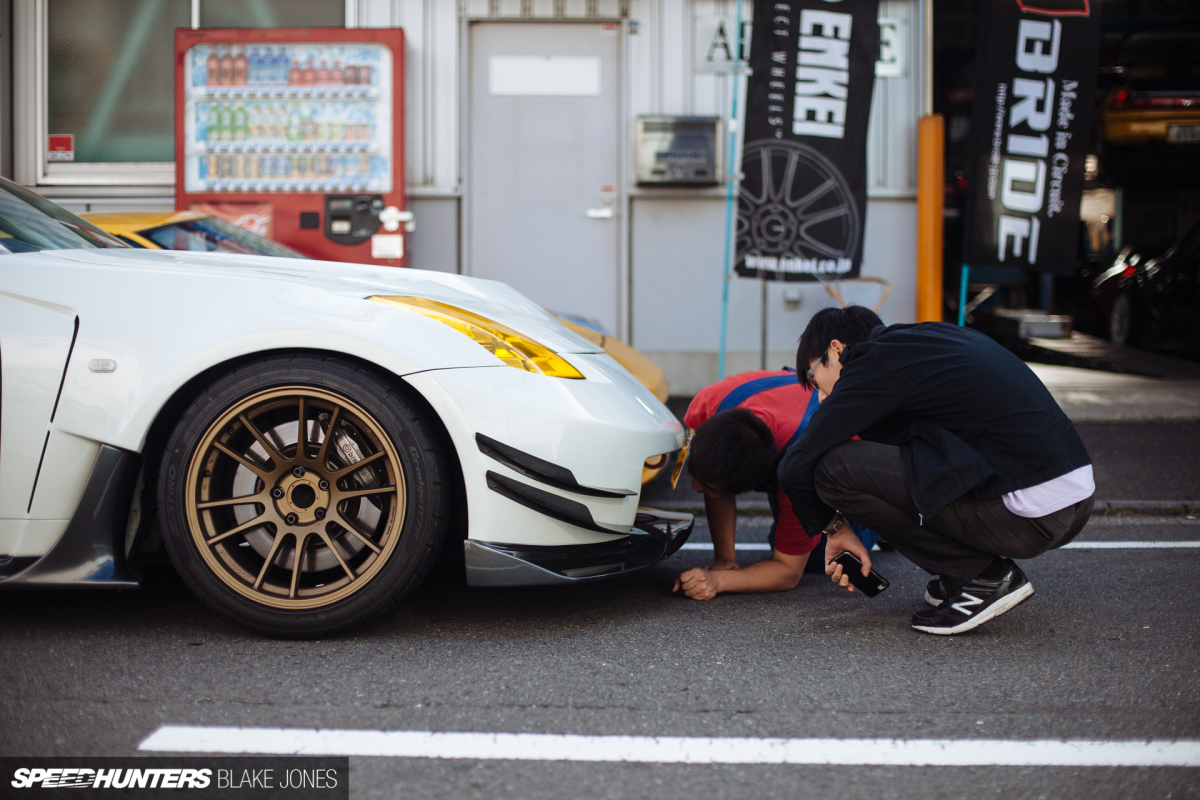
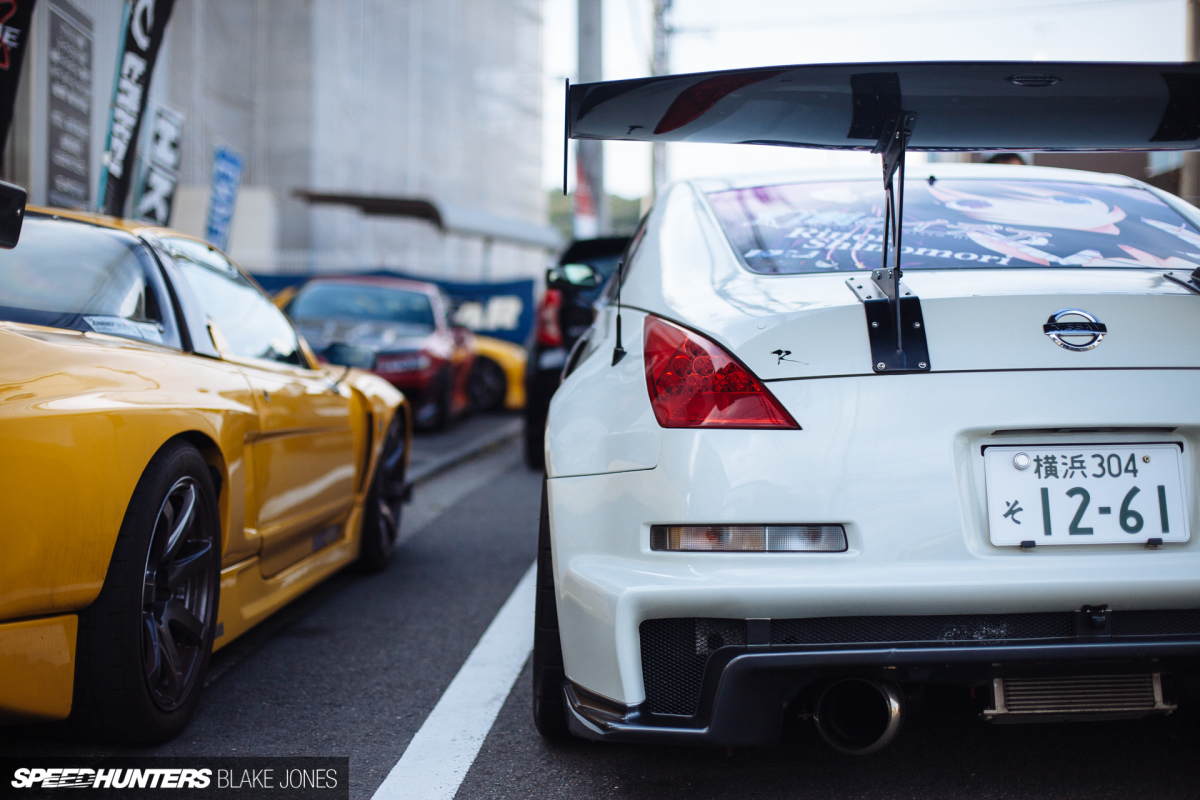
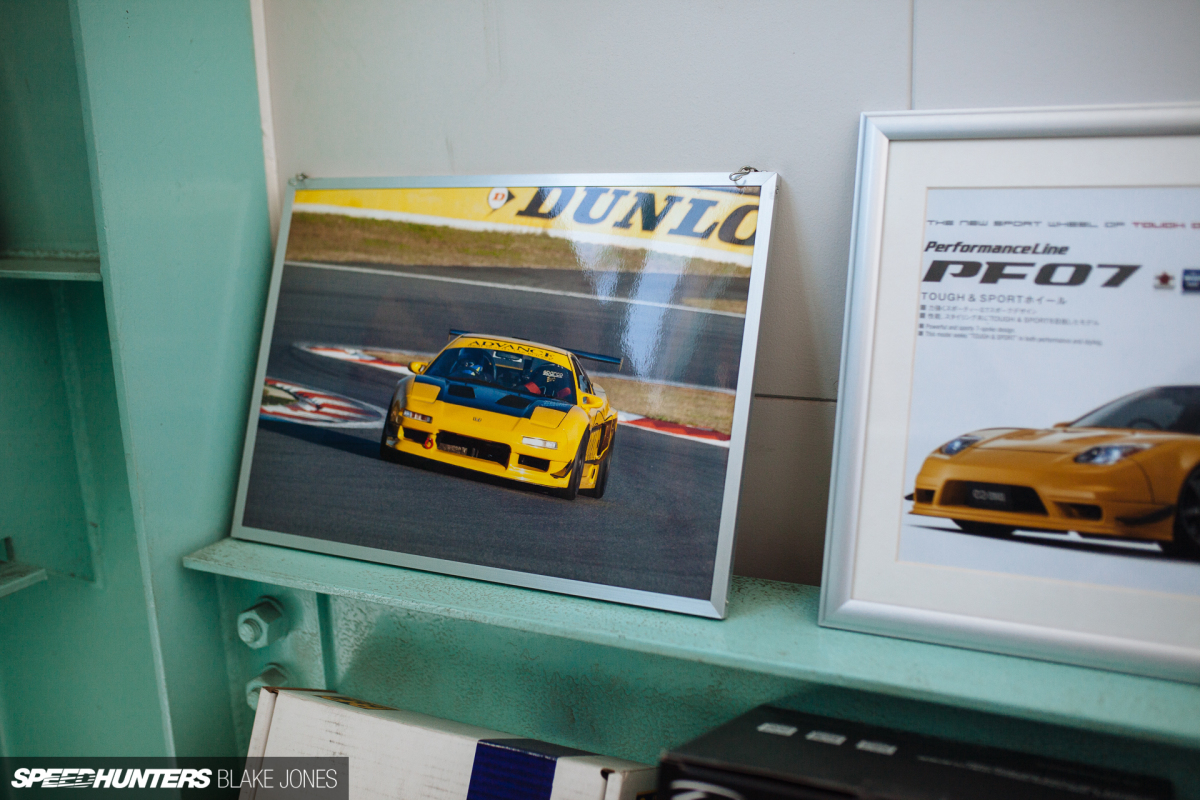
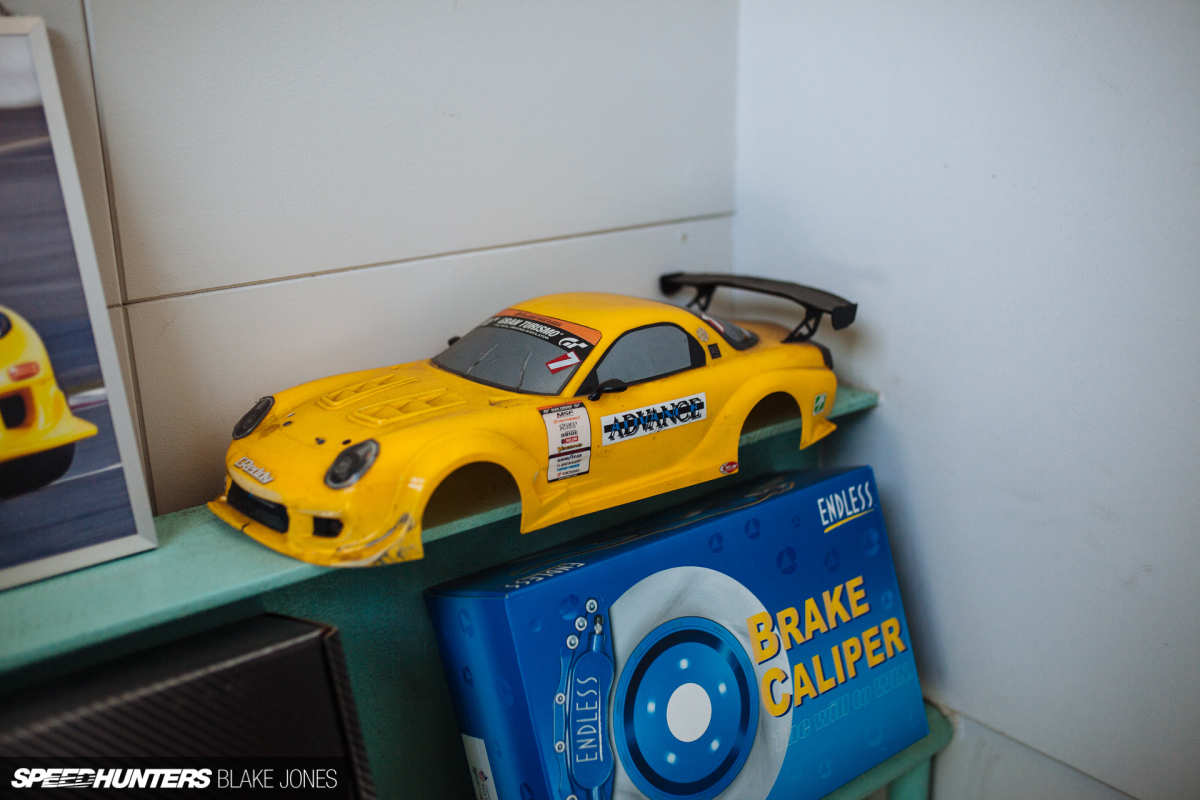
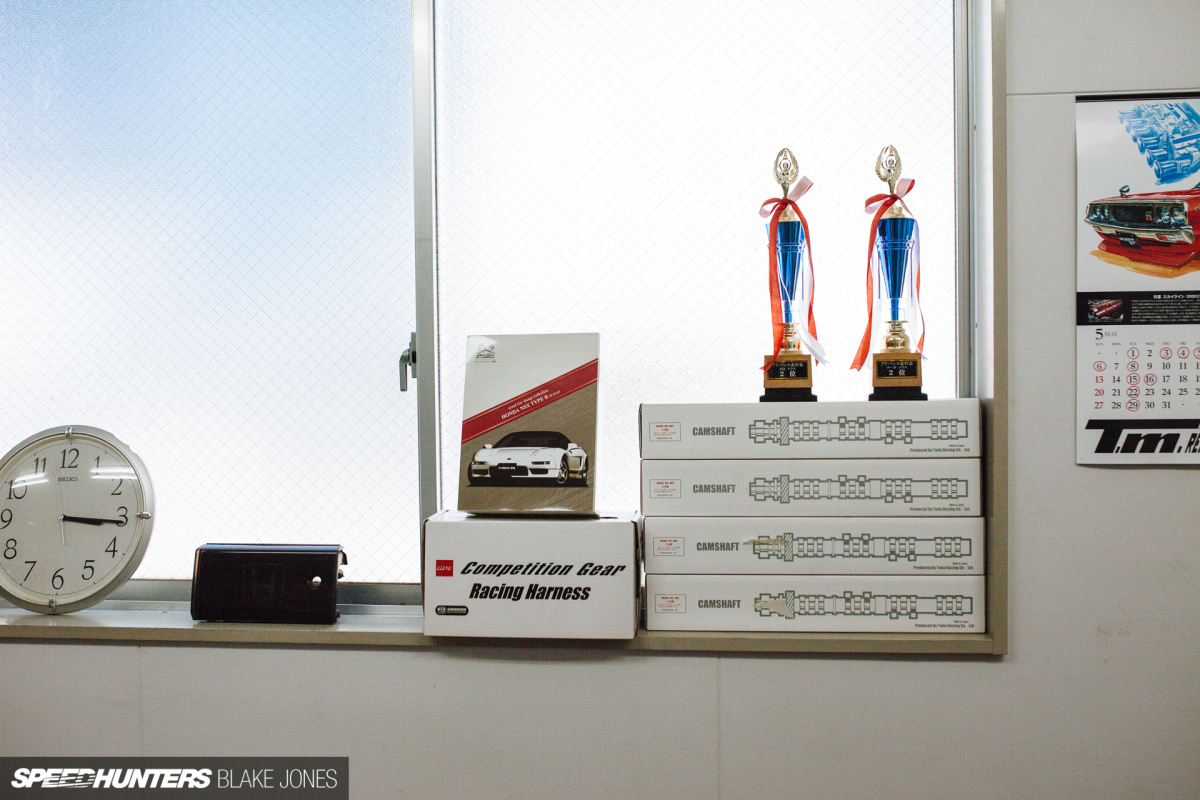
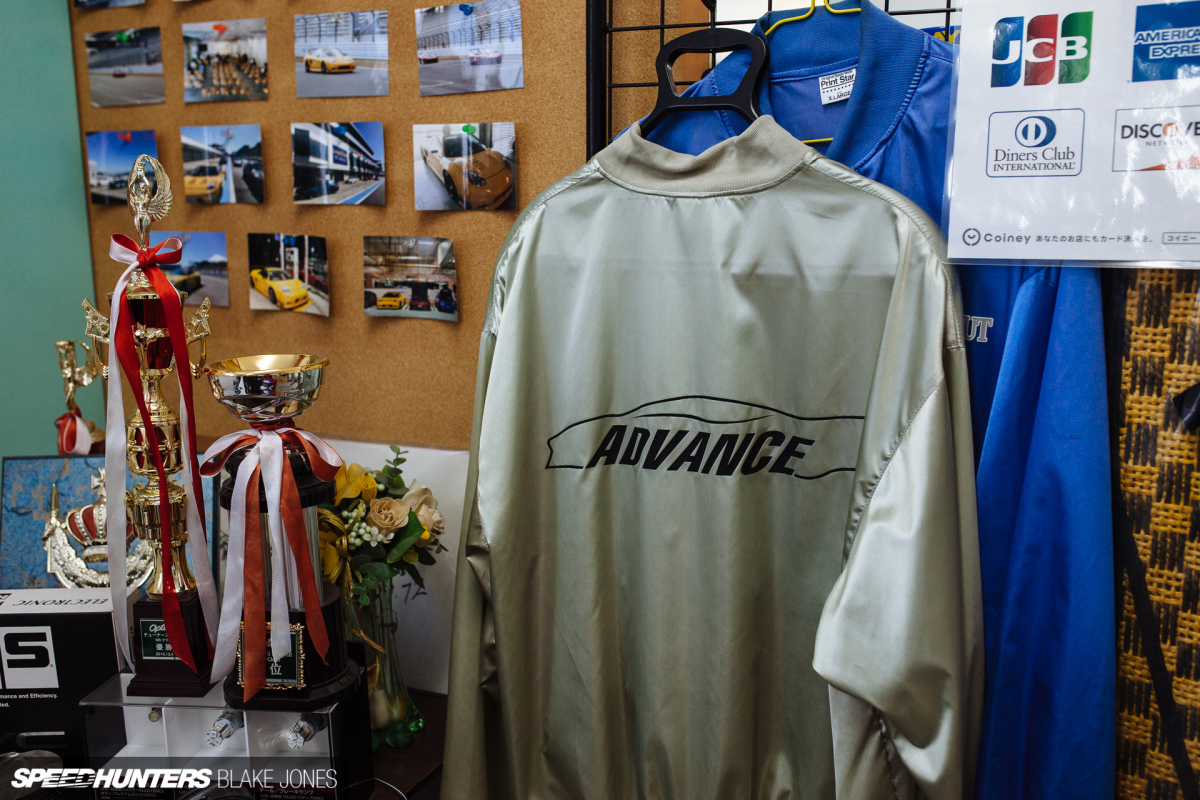
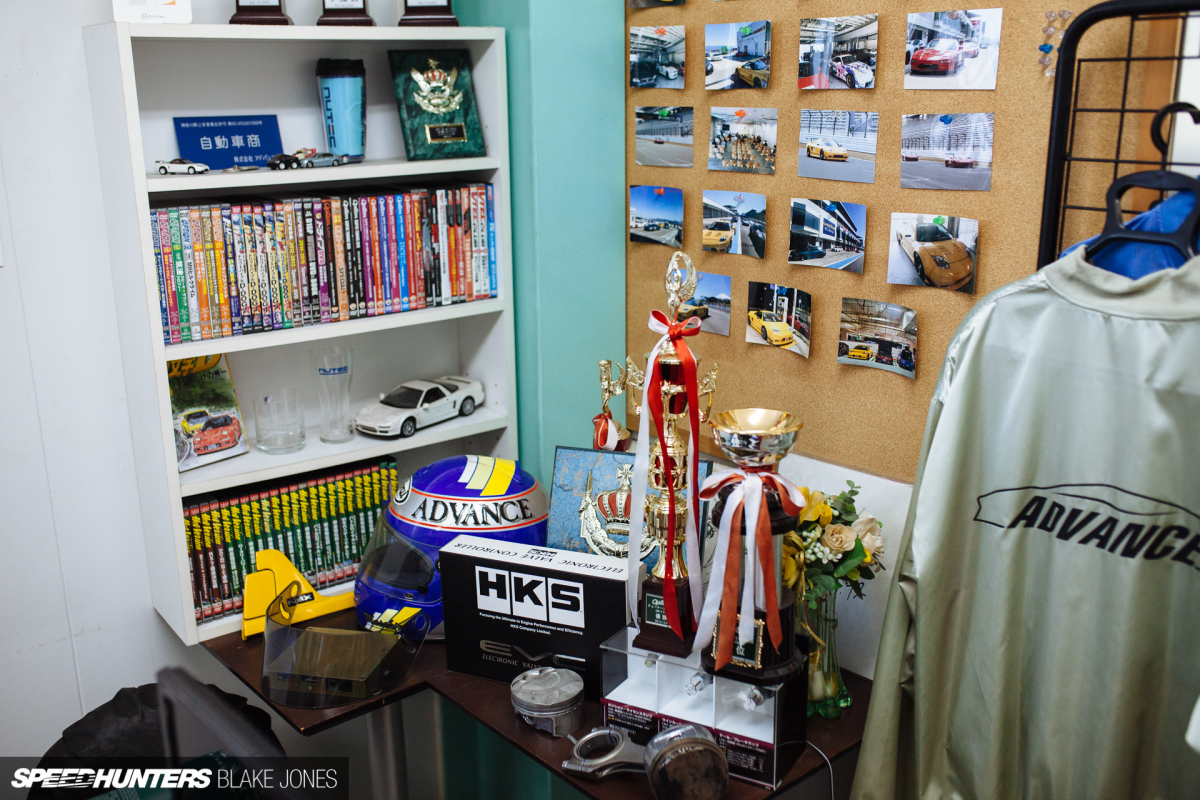
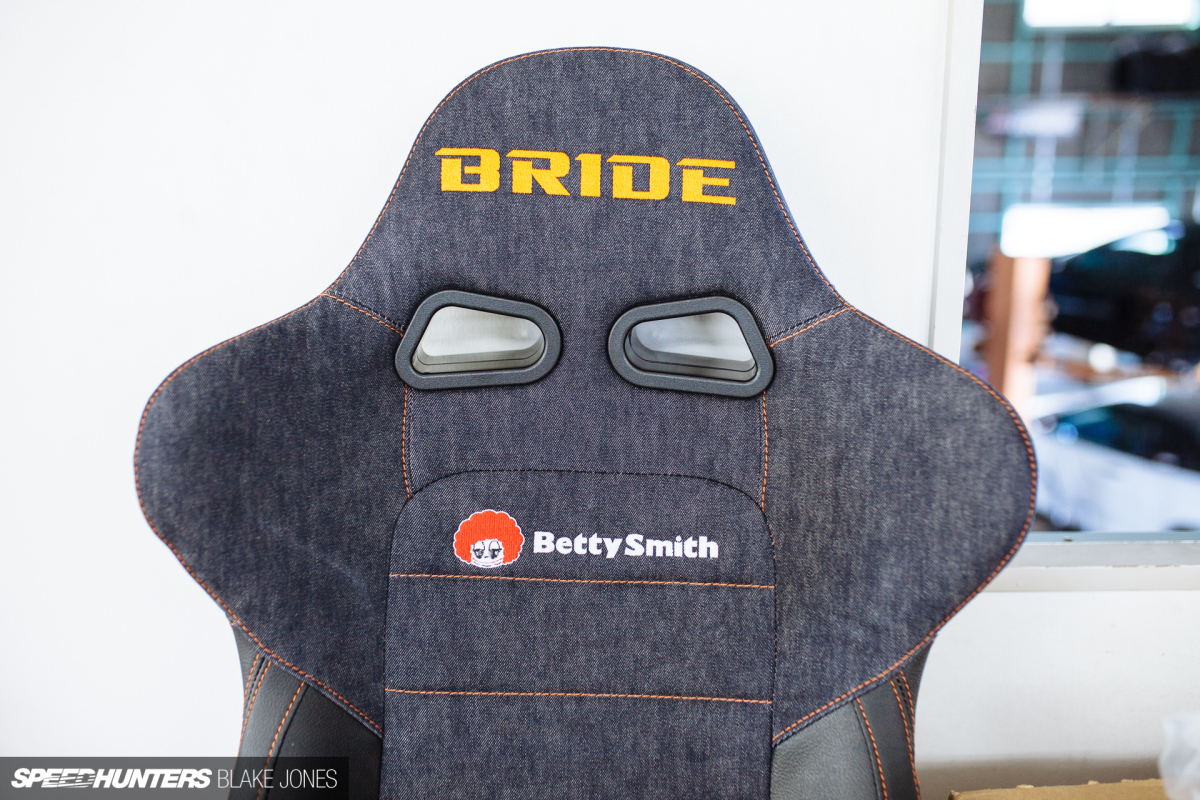
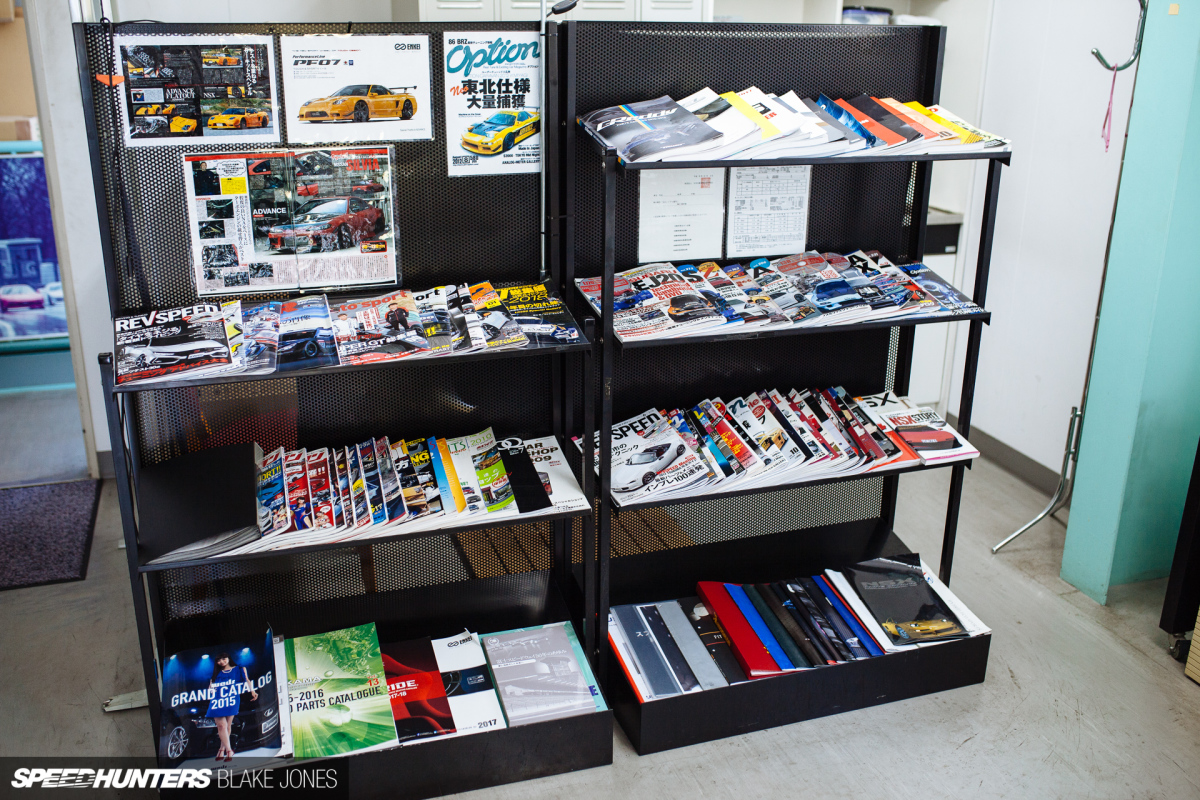
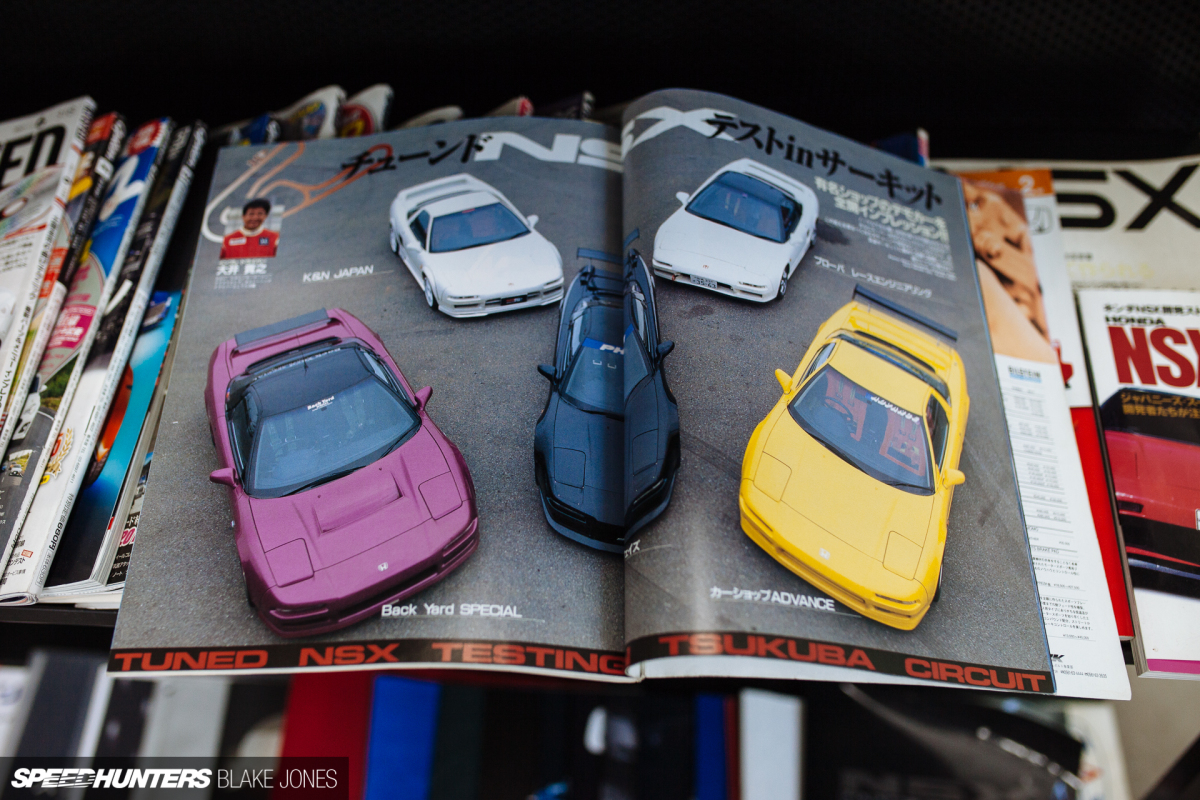
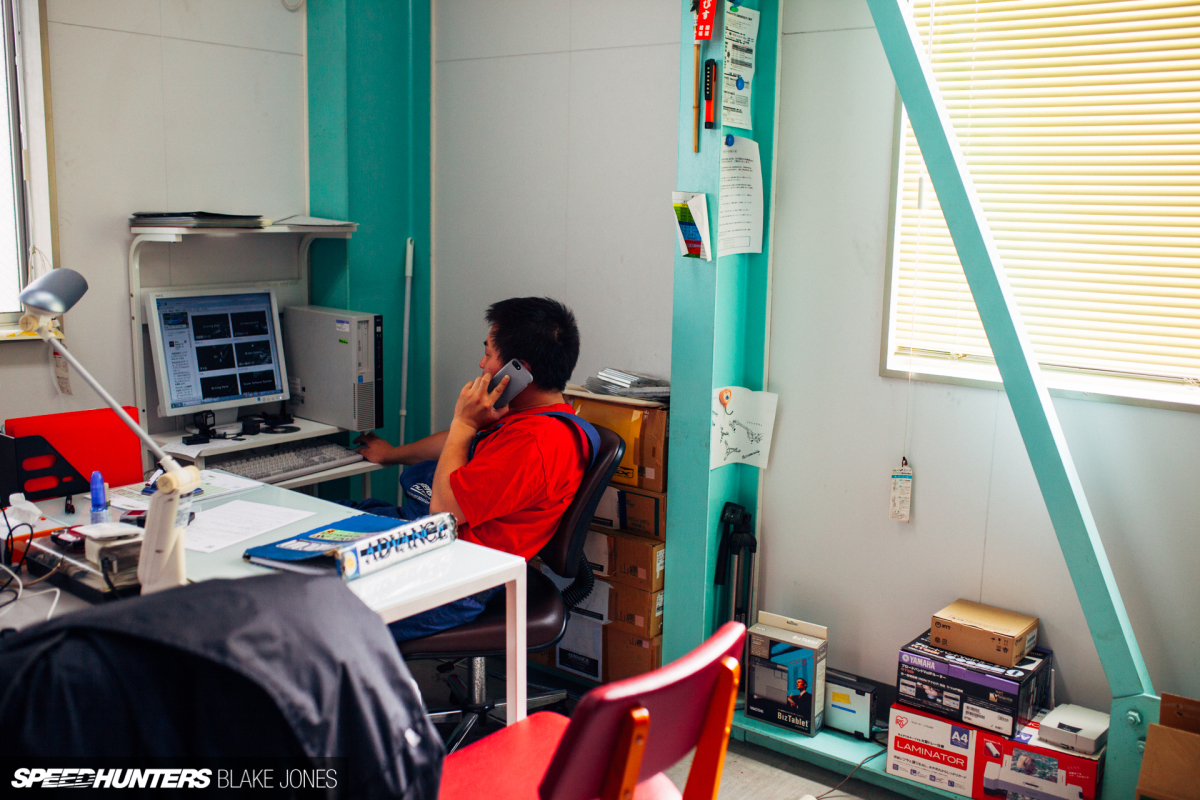

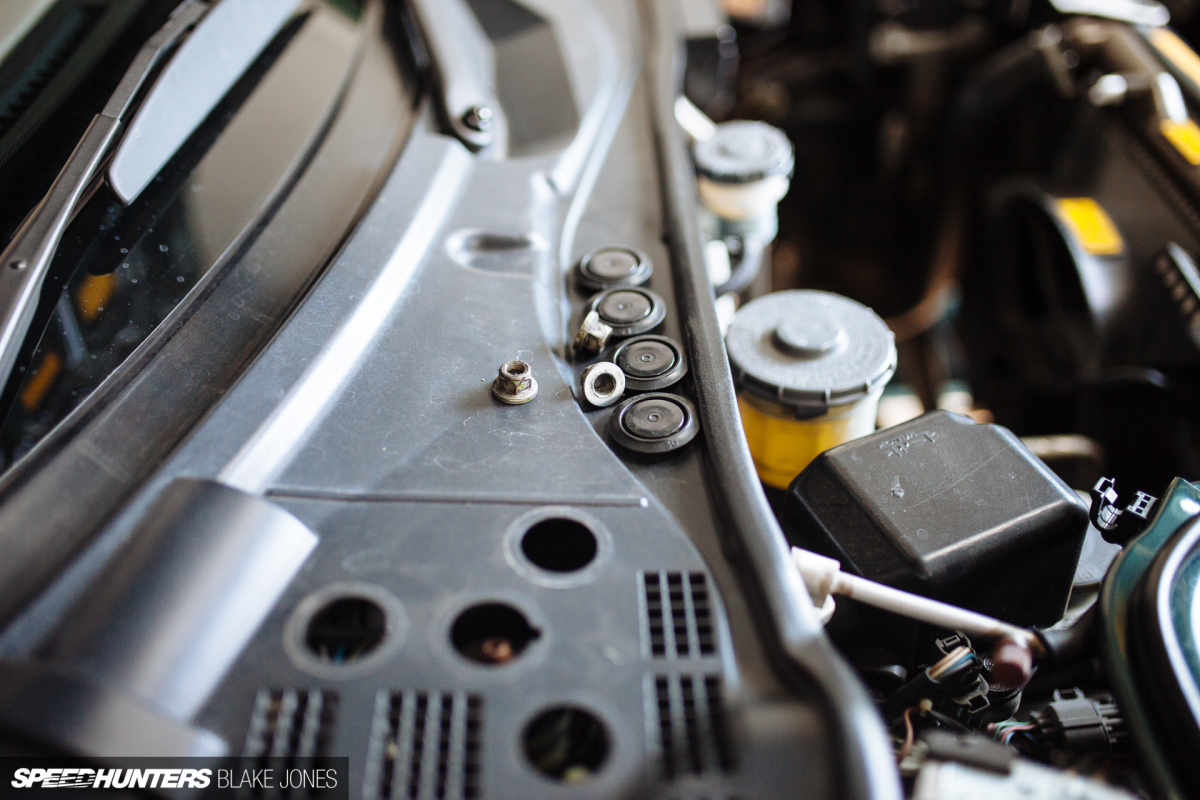
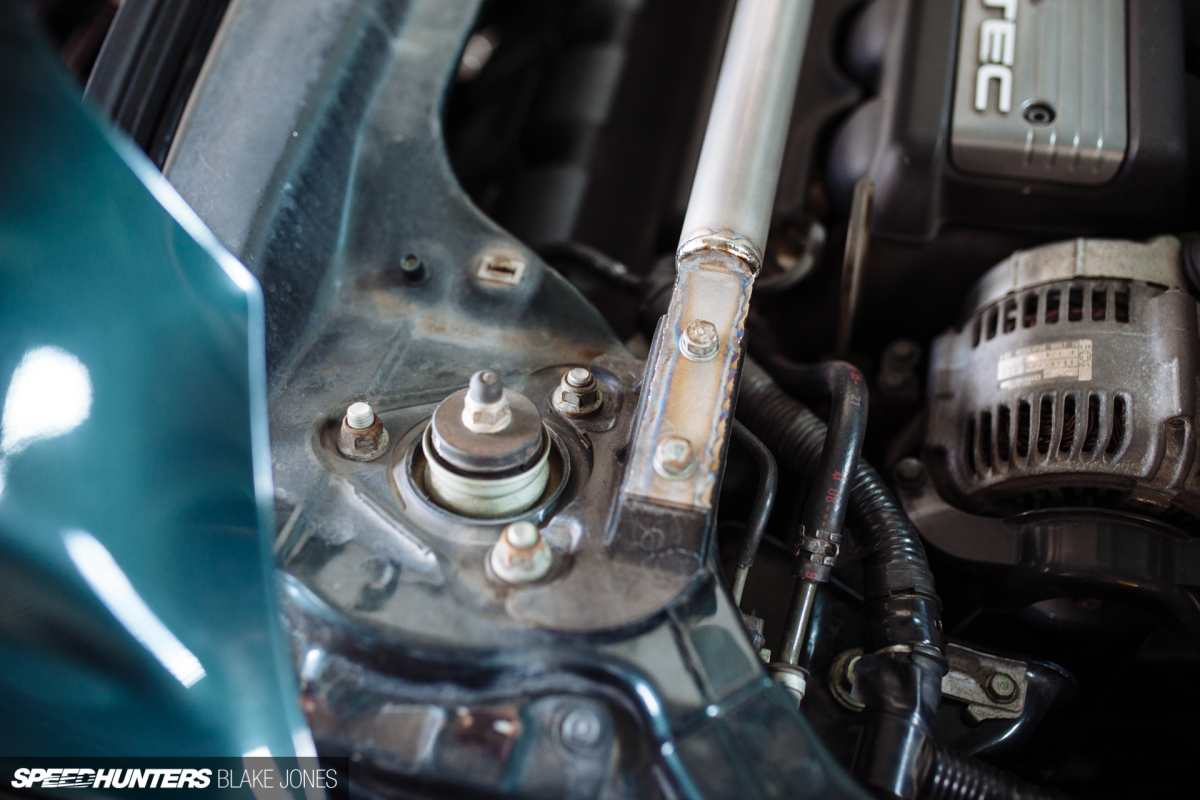
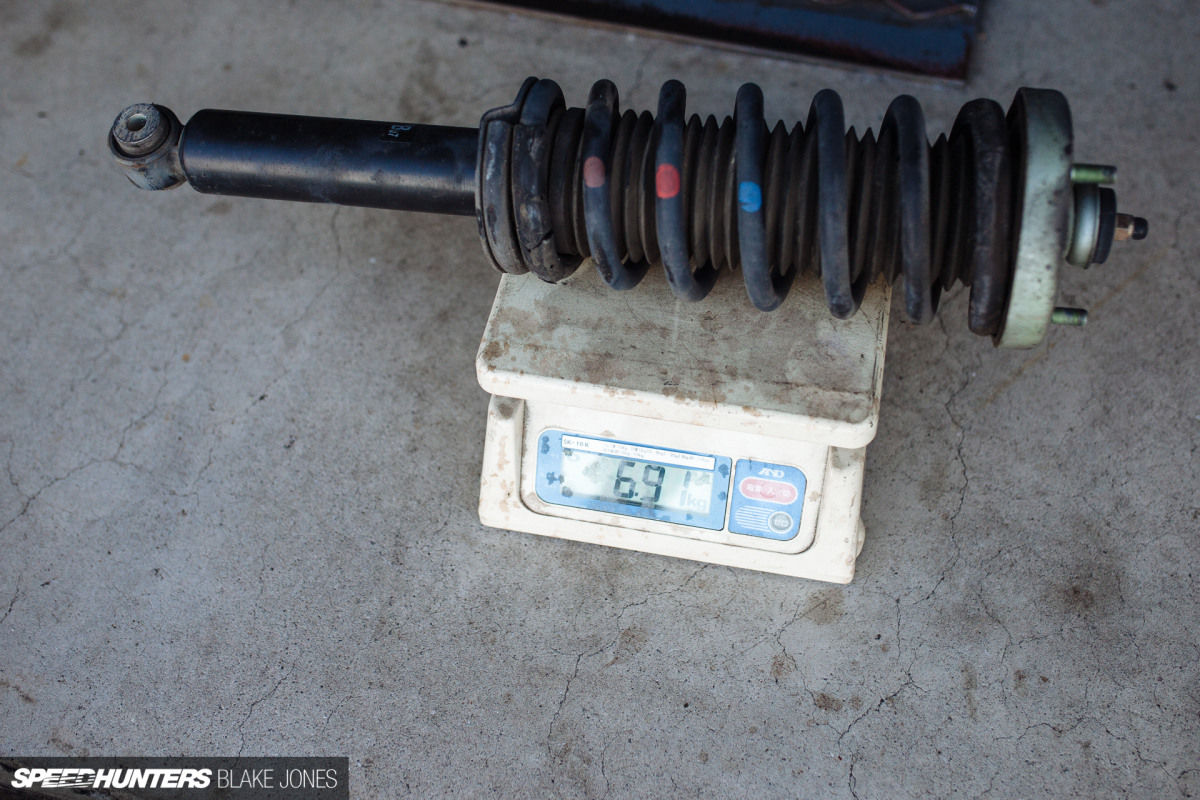
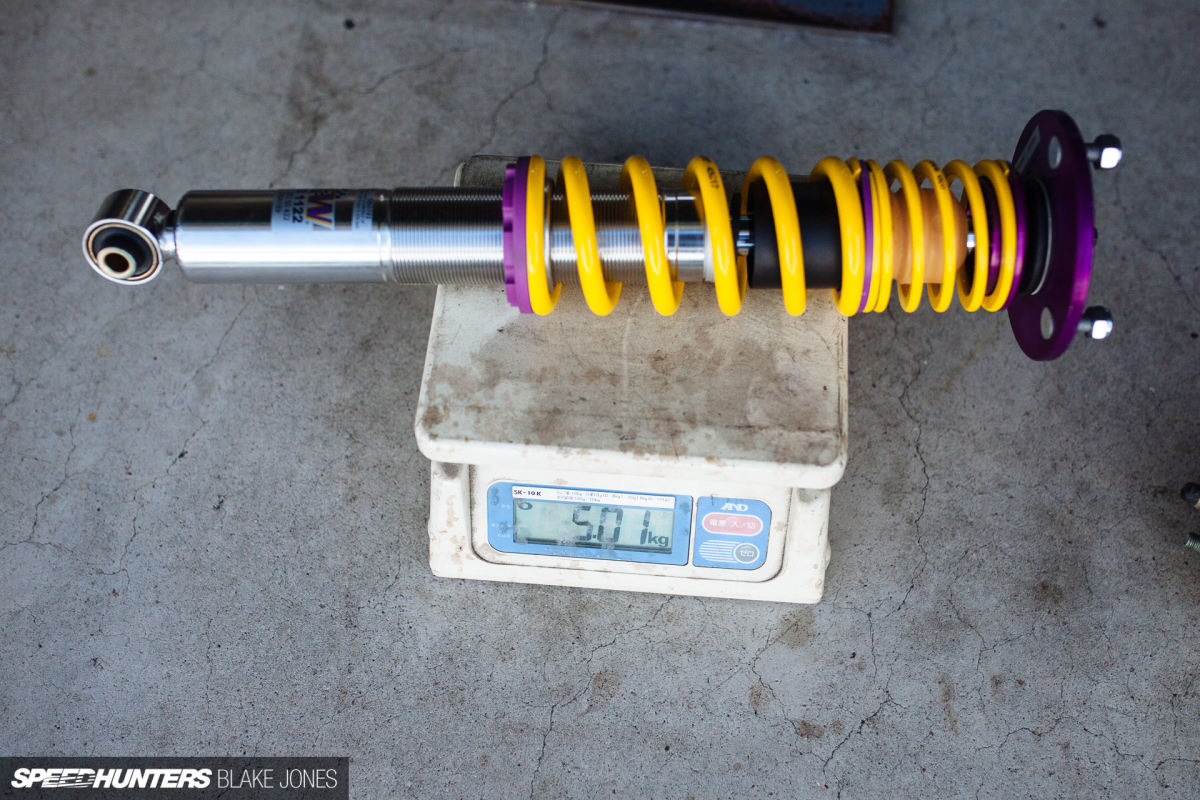
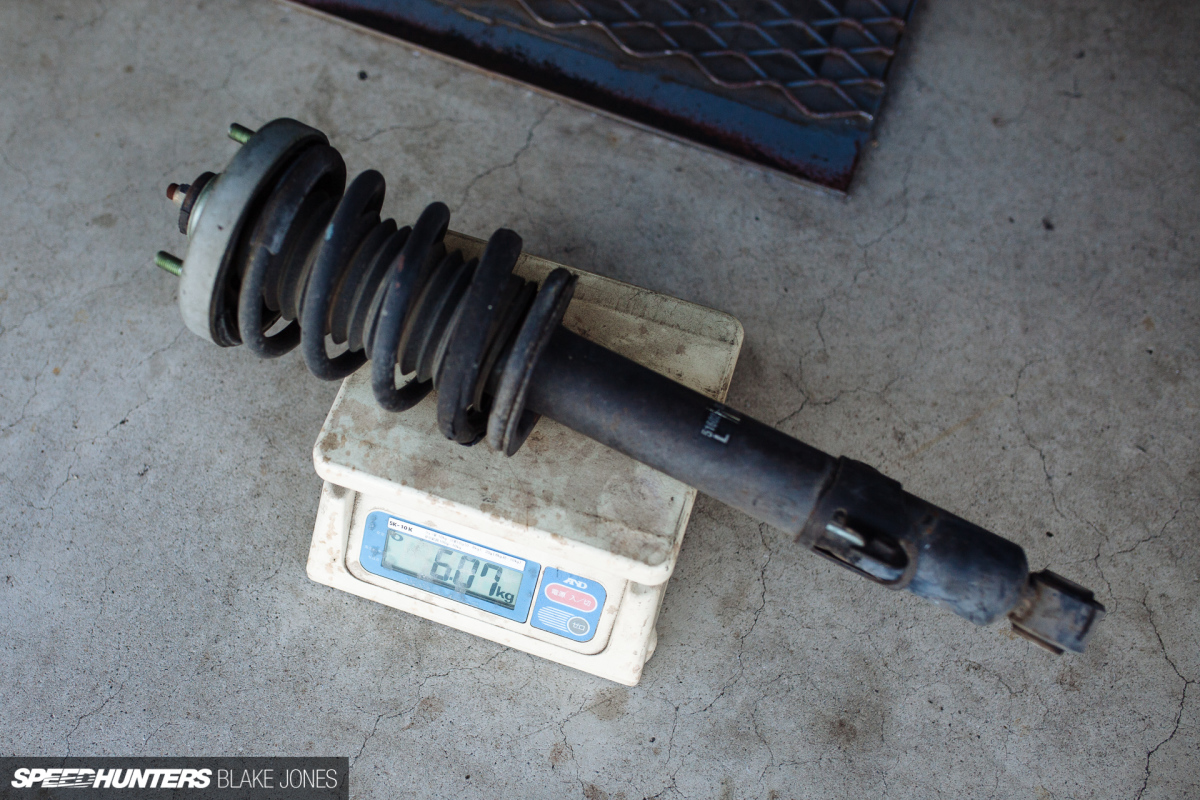
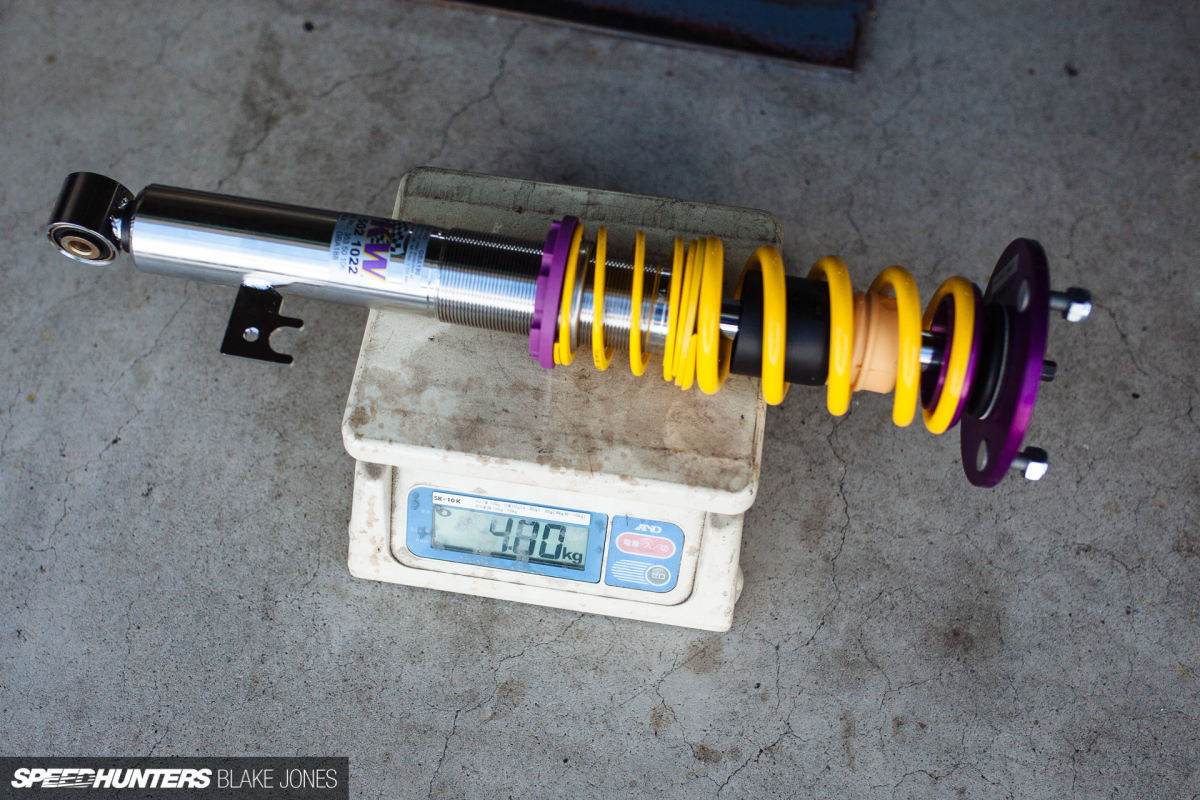
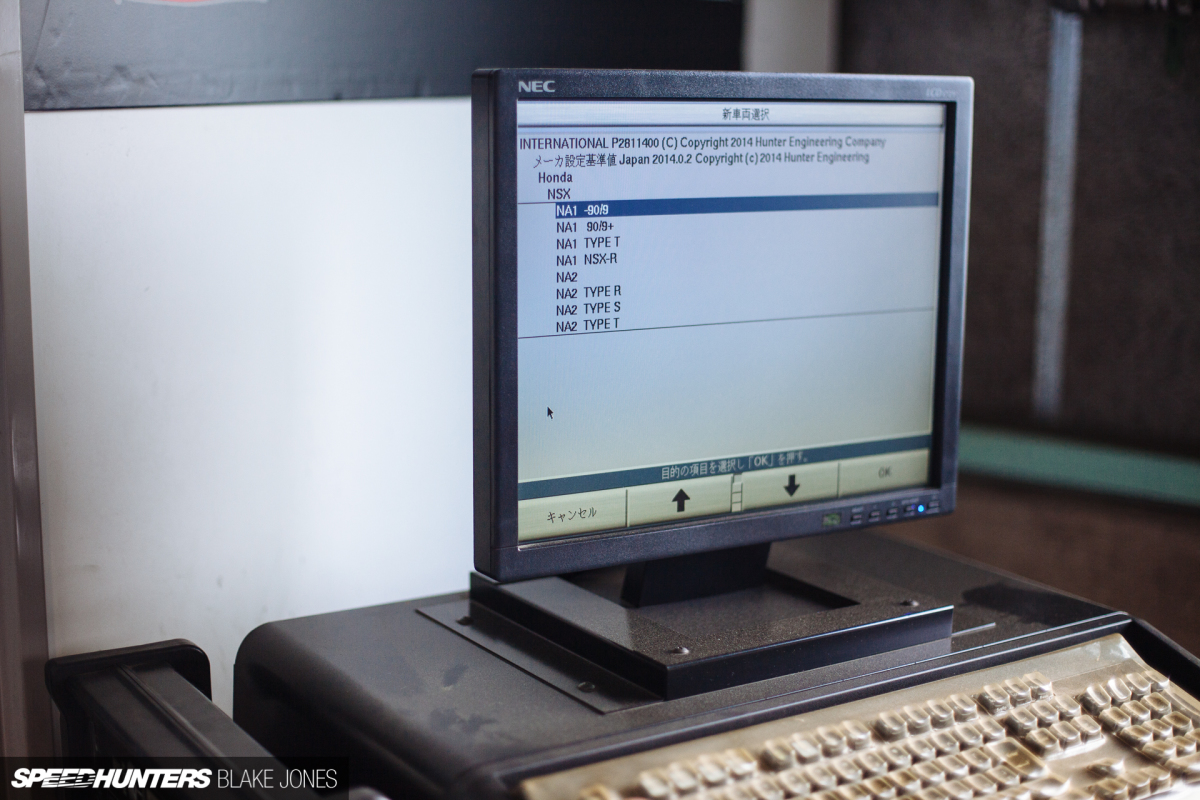
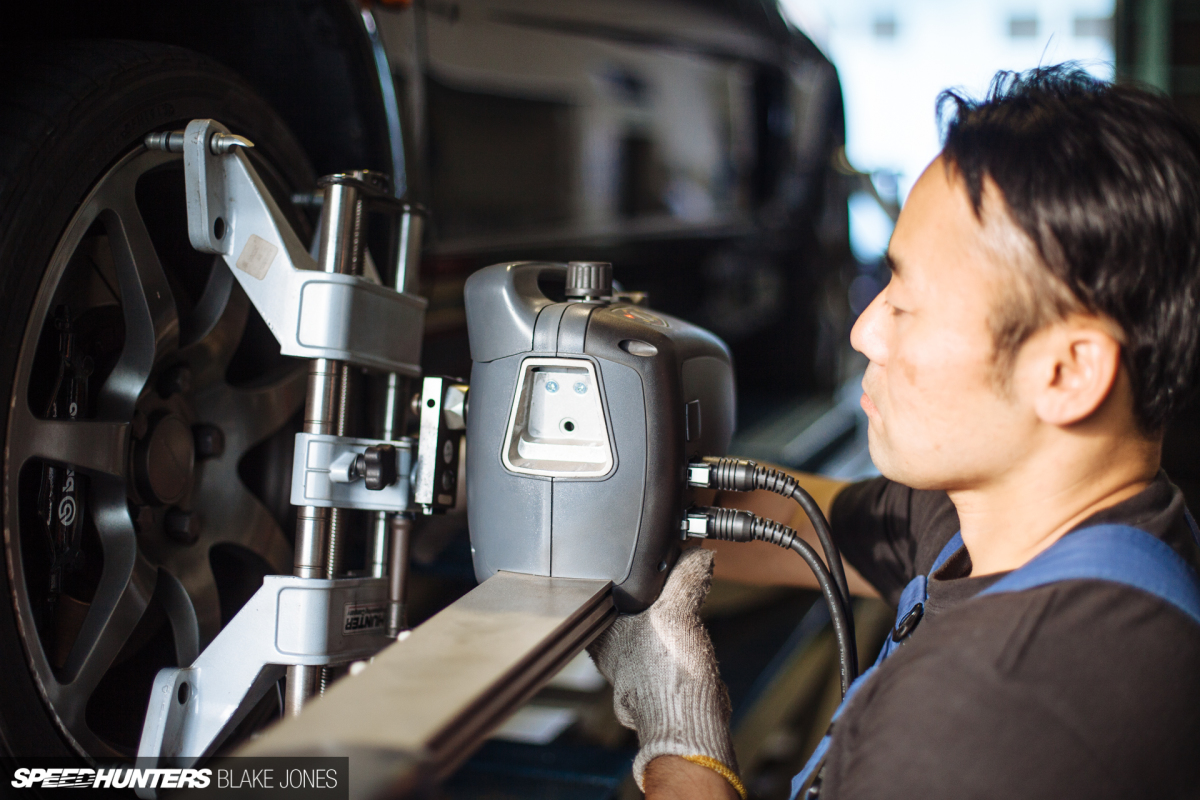
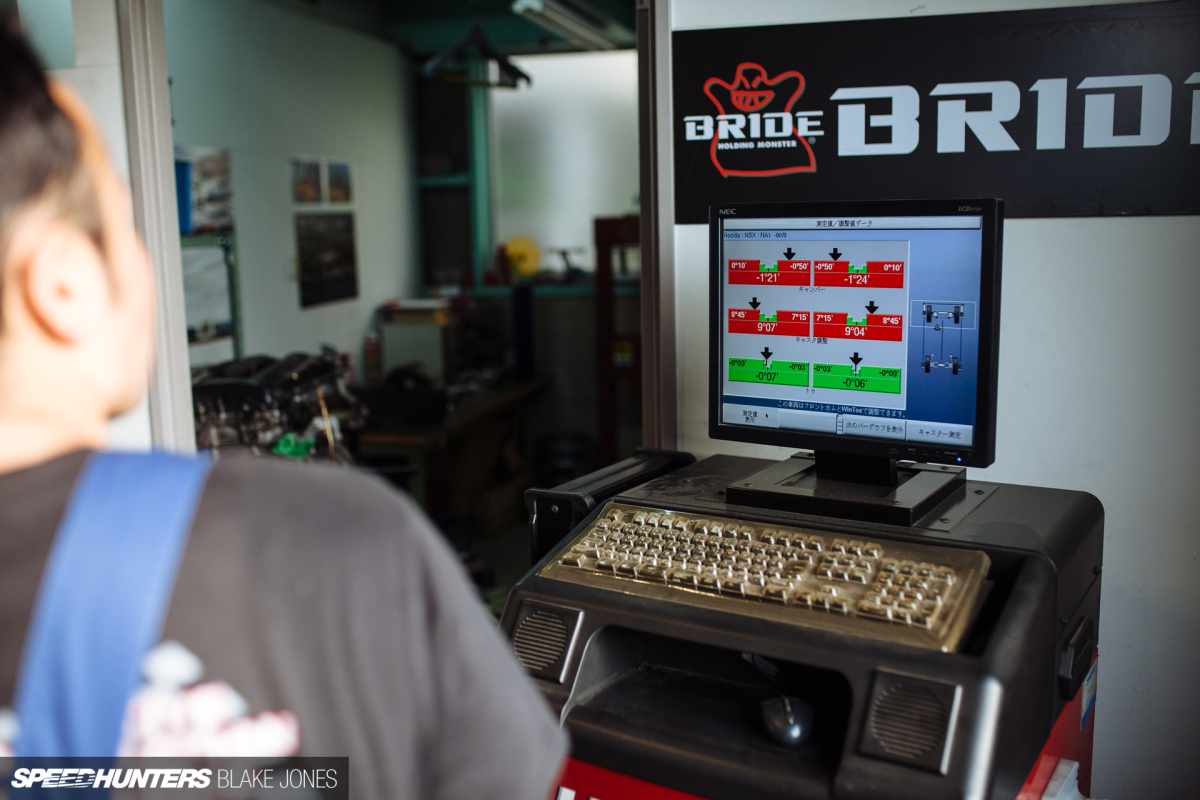
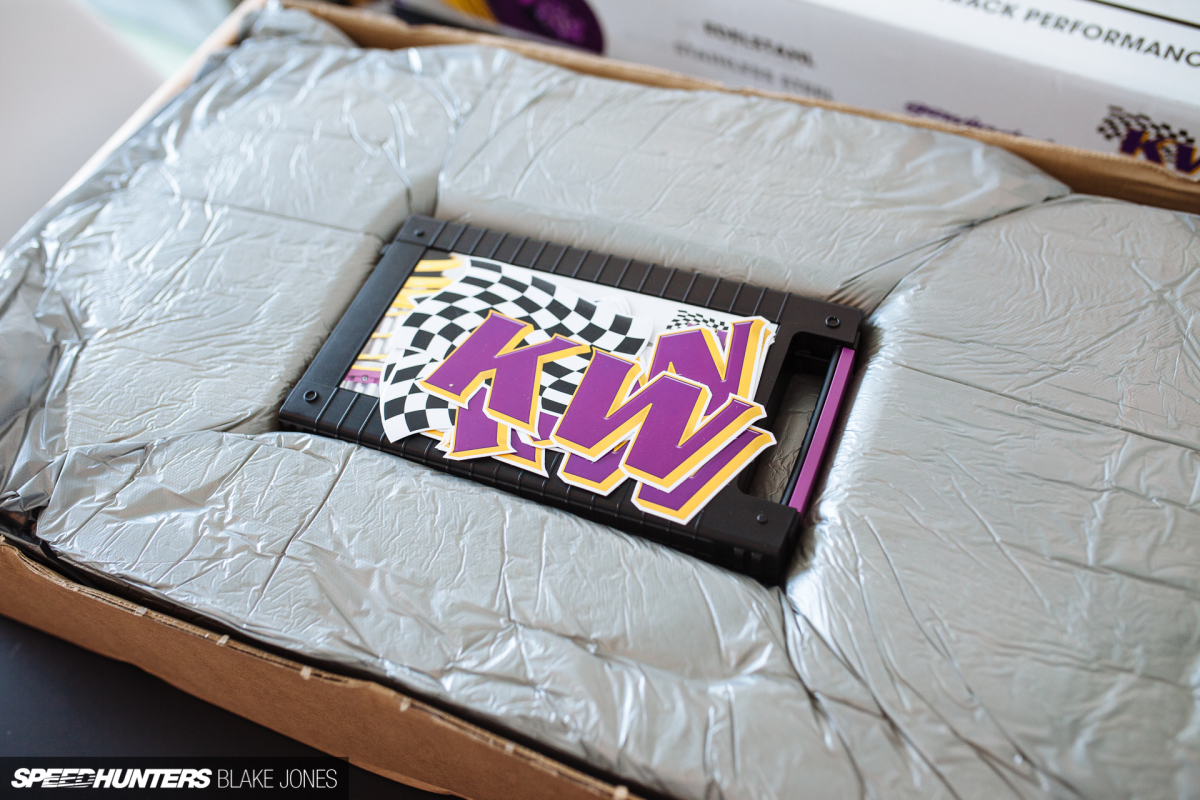
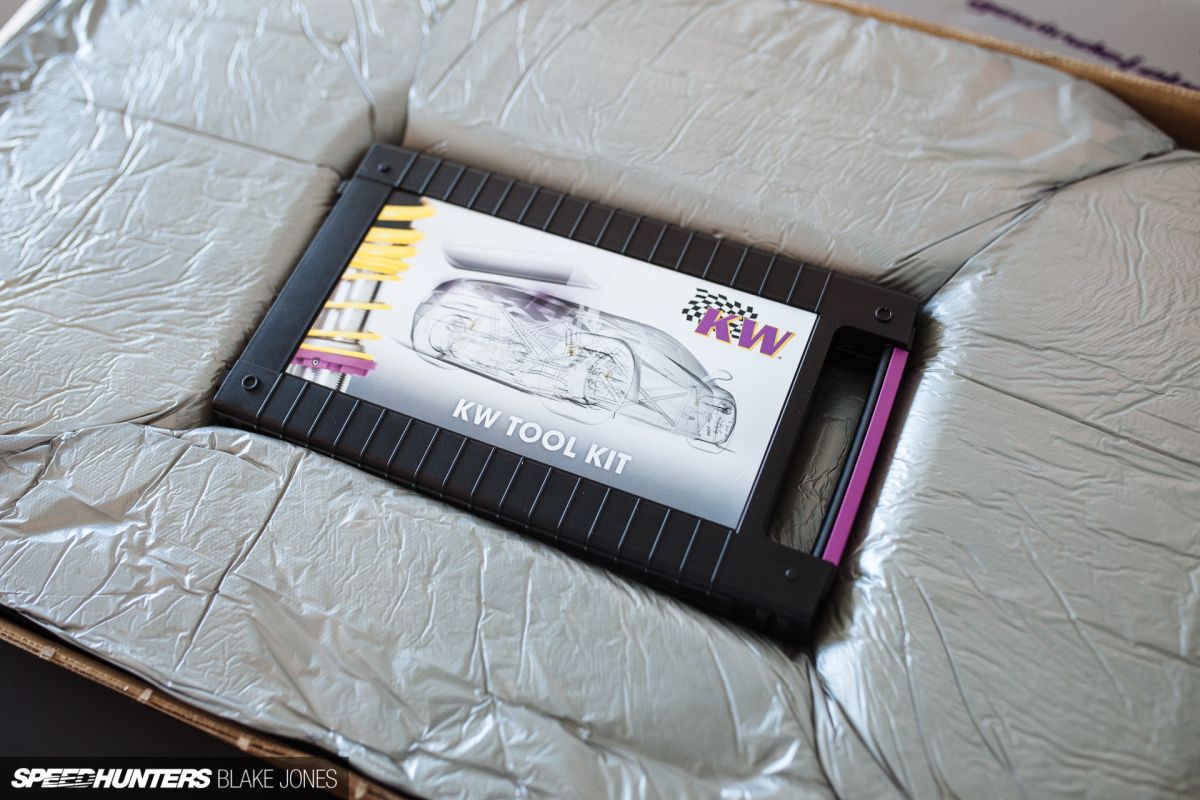
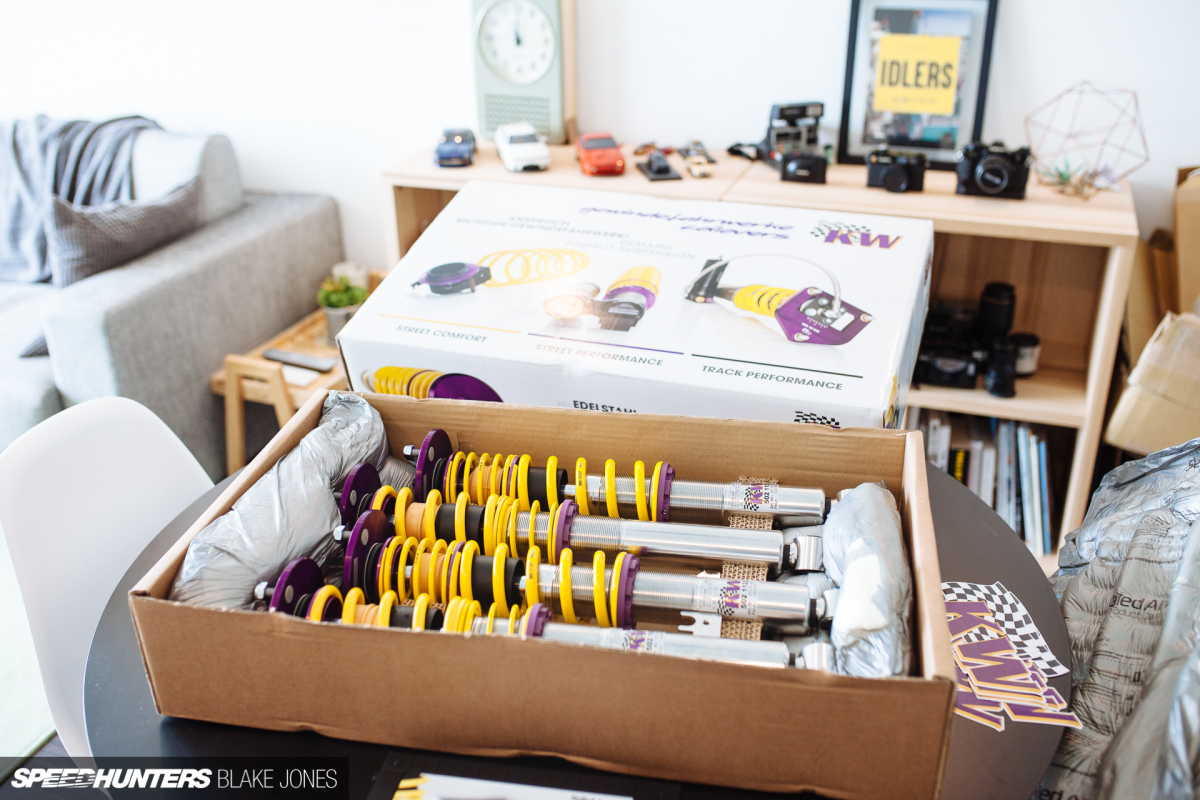





Coming from a former Z32 owner, I'm very glad you included something about that Z32, which looks to be wearing a full GReddy Gracer aero kit. It has such a "90's" look to it, with the GReddy kit and white SSR's..a look that I'm totally in love with. I'd love to see a spotlight if ever possible..I think readers would like to see some more Z32 content.
Oh and by the way, the color on your NSX is so incredibly gorgeous. It's quite subtle, yet some how, it stands out at the same time..
Thanks mate. I'm deeply in love with this colour too.
2nd that with the Z32, a nice one! How appropriate my two favorite '90's Japanese cars be found at the same shop, these guys obviously are up to snuff!
Advance's workshop is like a 90's greatest hits album! Always something cool on the lift there.
Well, alriiighty then...Snap a pic of Paula Abdul on it, por favor.
I'm pretty sure I'm reading but did you say the NSX-R spring rates from the factory are stiffer than what you put on this car?
Christian said it best. To add some extra info, the NSX-R spring rate changed over different model years as Honda's engineers searched for the best performance and ride compromise. KW typically seems to achieve high grip performance with somewhat lower spring rates (than other aftermarket options) which aligns with my goals for the NSX.
I'd want further explanation on that from KW before I'd believe anyone is getting higher performance on a flat smooth road out of a car with lower spring rates than factory.
If they use a double digressive piston internally then I could see a stock spring rate or even lower spring rate being superior, but short of valving the shock to that rate there's no way a softer spring is giving better performance on a flat smooth road.
When do you have a flat smooth public road? If you only ride your car on racetracks you will have probably 5 or 10 sets of different springs and tyres so you always can prepare your suspension for the specific race track.
I heard a ordinary KW V3 kit have more valves (adjustable lowspeed rebound and lowspeed compression valves / and nonadjustable but preconfigured highspeed valves for rebound and compression forces).
But maybe you ask the suspension manufacturer via mail to get a answer. Via Google I only digged this: http://speed.academy/infiniti-g35-tuning-track-test-prep-nissan-350z/?doing_wp_cron=1527496891.1109530925750732421875
I got to drive a car not too long ago that was around 2,000lbs with 1,200lb/in. springs in the front and something like 500 or 600 in the rear. The car had custom valved shocks and rode so well on one of the bumpiest roads I've ever been on in my life.
Shock valving is more important than spring rate when it comes to performance, comfort etc. Thanks for the link.
One thing to remember in a lot of these double adjustable coilovers is that you do get a lot of cross talk. Not sure how much of that affects KW since I haven't seen dyno plots etc.
John, where are you from? We need to share some beers and car talk.
Stiffer spring rates don’t make you always faster, if you have a bouncy ride your tyre loose grip and no grip no speed... So you also need to find a compromise. But at the end of the day there is no perfect suspension setup, the best setup is the setup suits your personal driving style the best way.
pic 5=godlike
the one with the mount fuji in the background?
I still find the centre exit exhaust odd for an NSX. LOL!
Working at a car dealership, right now in the inventory we have a NA1 NSX with JIC Magic suspension. The ride height of it is rather similar to yours now, so I can already see how low it is when I stand beside it. The roof quite literally is only at half my height!
Getting in and out requires a real technique now haha. But, I love a low car - perfect for driving. Just a bit scary next to SUVs.
Just goes to show how badly Honda missed the mark with the new NSX.
It’s primary competition amongst Honda enthusiasts is a car originally developed THIRTY YEARS AGO!!!
The only debacle that’s worse is the new, pig-with-lipstick, Civic “HYPE R”.
I’ve lost ALL respect for that company.
lost respect? put that to mitsubishi instead
Yesterday I saw the new Mitsubishi Eclipse at the dealer ... omfg
I would have gone with the v3 but if you are going down to a 16 with a bigger tire the clubsports will work well. I've had te37 and rg's in 16 on my old nsx and they both looked nice, stick with gun metal IMO no bs red colors....dino
"it does raise the question if a shock body counts as ‘sprung’ or ‘unsprung’ weight…"
Sprung weight is what moves with the car body, and unsprung weight is what follows the tyre/wheel over bumps.
The top portion of the coilover - the top mount and shaft and piston rigidly attached to it, in this case - are sprung weight as they are rigidly attached to the car body. The bottom portion - the cylinder body and lower mount where it attaches to the wheel upright - are unsprung weight as they will move with the wheel over bumps. And finally with the springs - one end of the spring moves with the wheel, the other end moves with the body, and the parts in between move proportionately more or less - e.g. the middle part of the spring will move with the wheel, but only half as much. So the spring weight would be allocated 50% sprung, 50% unsprung.
At a rough approximation I would likely allocated half and half of the measured weight as sprung and unsprung, unless KW publish more exact figures for the breakdown of weight.
Not gonna lie: an SR20DETT swap Z32 to me is like a 3S-GTE swap MkIV Supra RZ. It's not that it's bad or slower. The only word I can say is "unique". I guess the only limitation in the car community is our imagination, huh?
The Z32 site I use often has had a few people inquire about such-type swaps (4 cylinder SR, etc.) recently so yes, I'd be interested to see a feature on that car plus it could be a really interesting Speedhunters project car as you dial in some actual power- so the poor Z32 isn't aware it's lost a couple cylinders, and some HP...
I think a fairer comparison is the K-swap NSXs that are popping up. You're trading a great standard engine for something much less 'special', but have opened up a whole lot of tuneability and not to mention saved a lot of weight in the process.
the white nismo looks dope
Congrats on the KWs, you won't regret it.
But damn... "It was in the shop getting the rear glass hatch replaced – apparently it exploded after hitting a bump on the highway!"
Holy chassis flex Batman! That's scary!
Hmm, or maybe a pre-existing crack that gave out? Time to go lexan, regardless!
Good choice going with the clubsports.. I always felt that my v3's on my s2000 could be a bit sportier; they felt pretty much stock only more planted.. BTW clubsports also use monotube dampers where as v3 uses a twin tube design.
Also, 17 is the correct diameter for this car!
Please side profile photo shoot (after you wash the car lol)!
Them Prodrive wheels and green paint are match made in heaven!
Love the updates, and KW makes great parts (possibly the best), but don't disguise the fact that putting anything else on the car was ever an option.
Every time I see a clean AP1 like yours I become immediately jealous. Prices for well kept examples (and some not so well kept) have skyrocketed. Can't wait to see the power mods you have added.